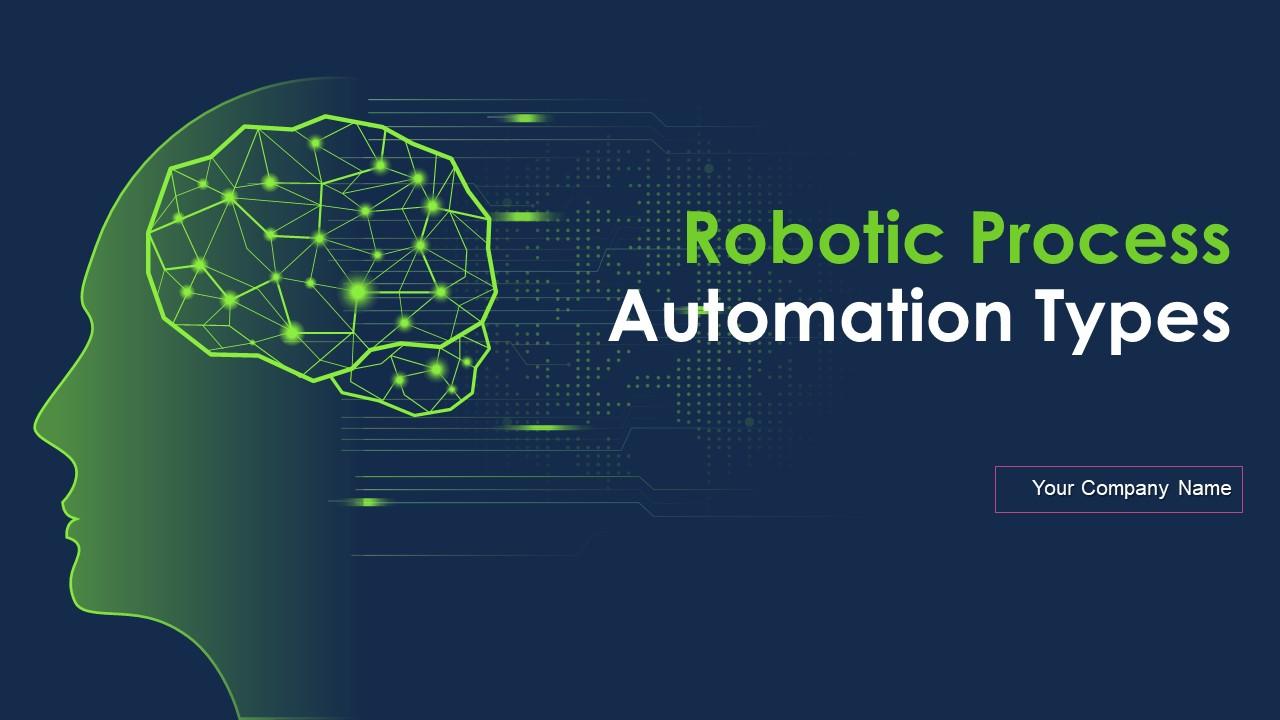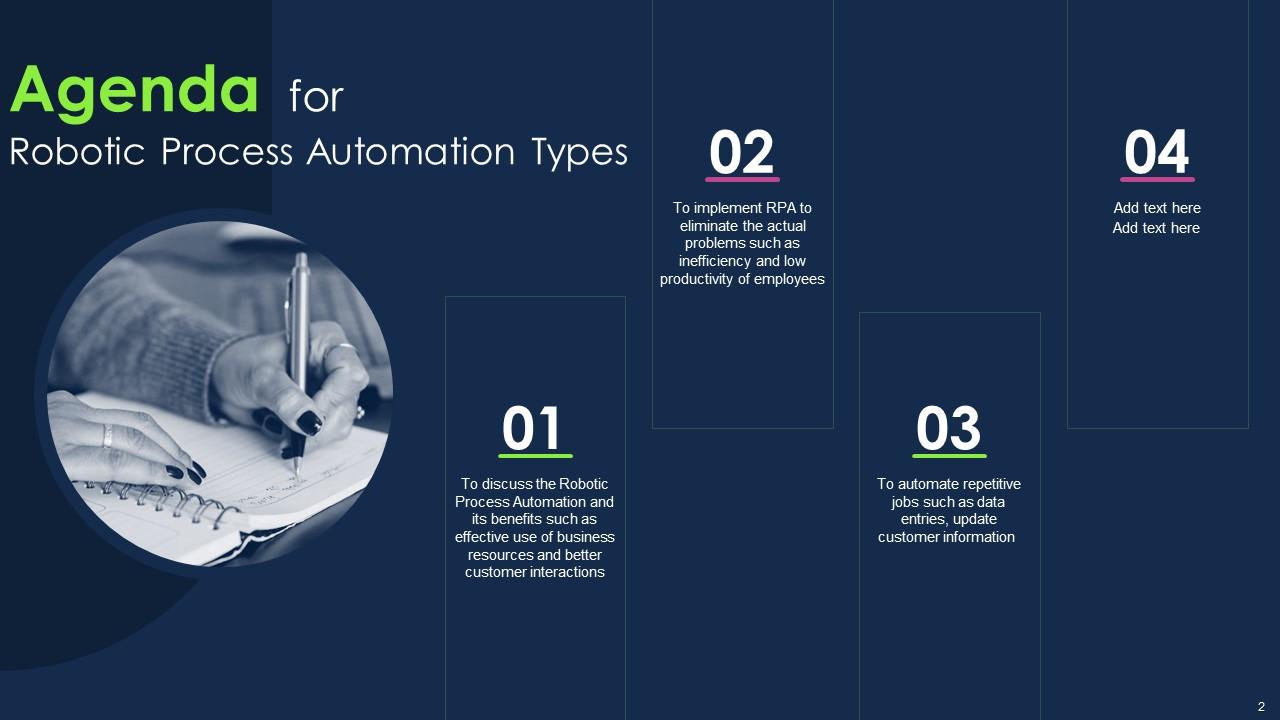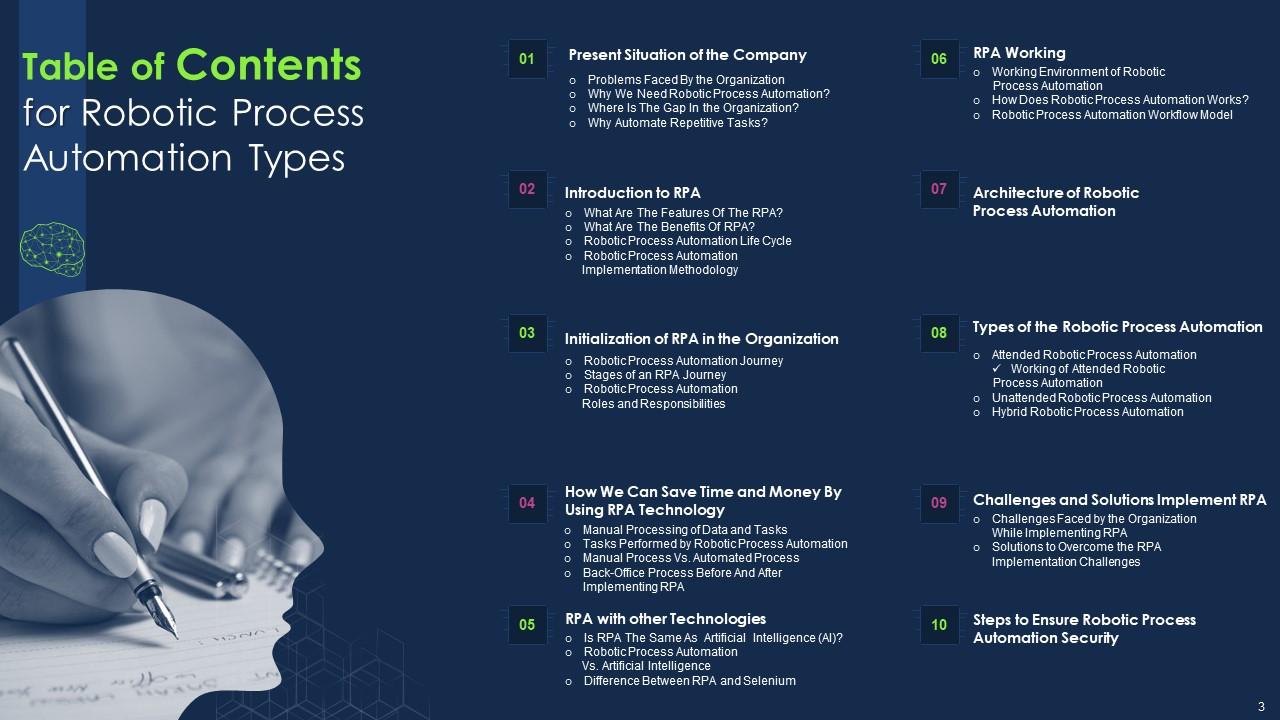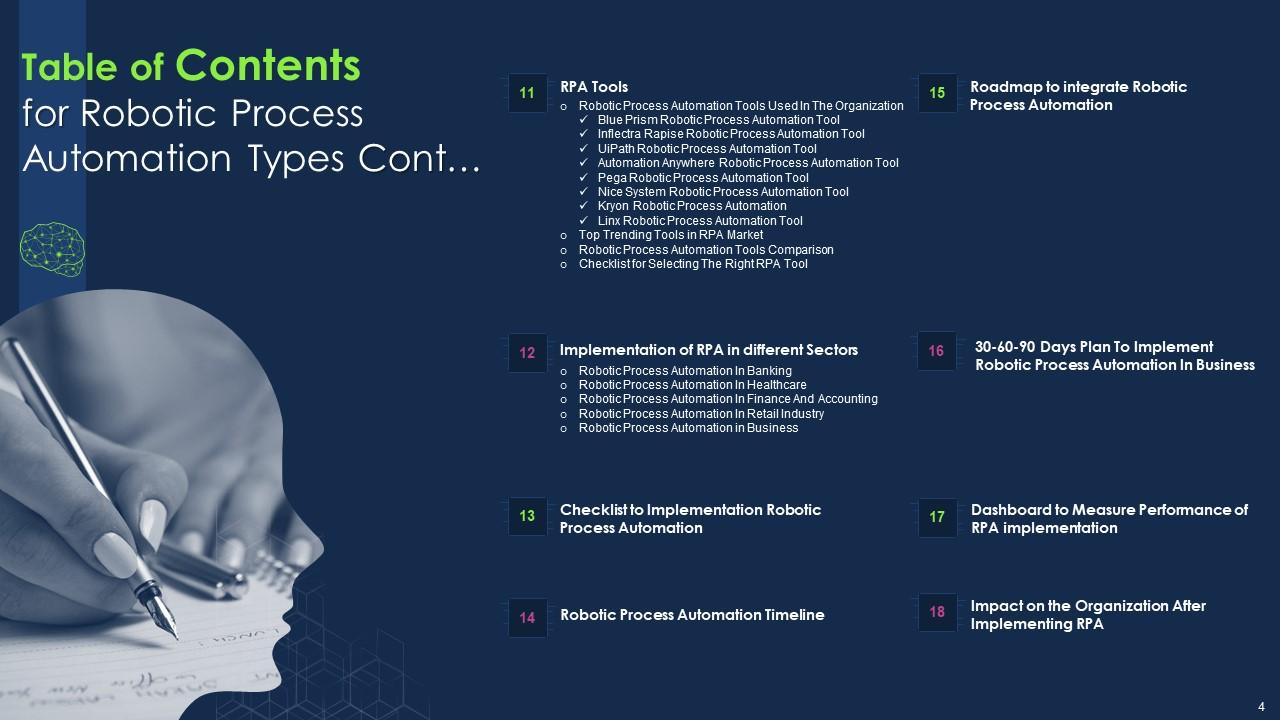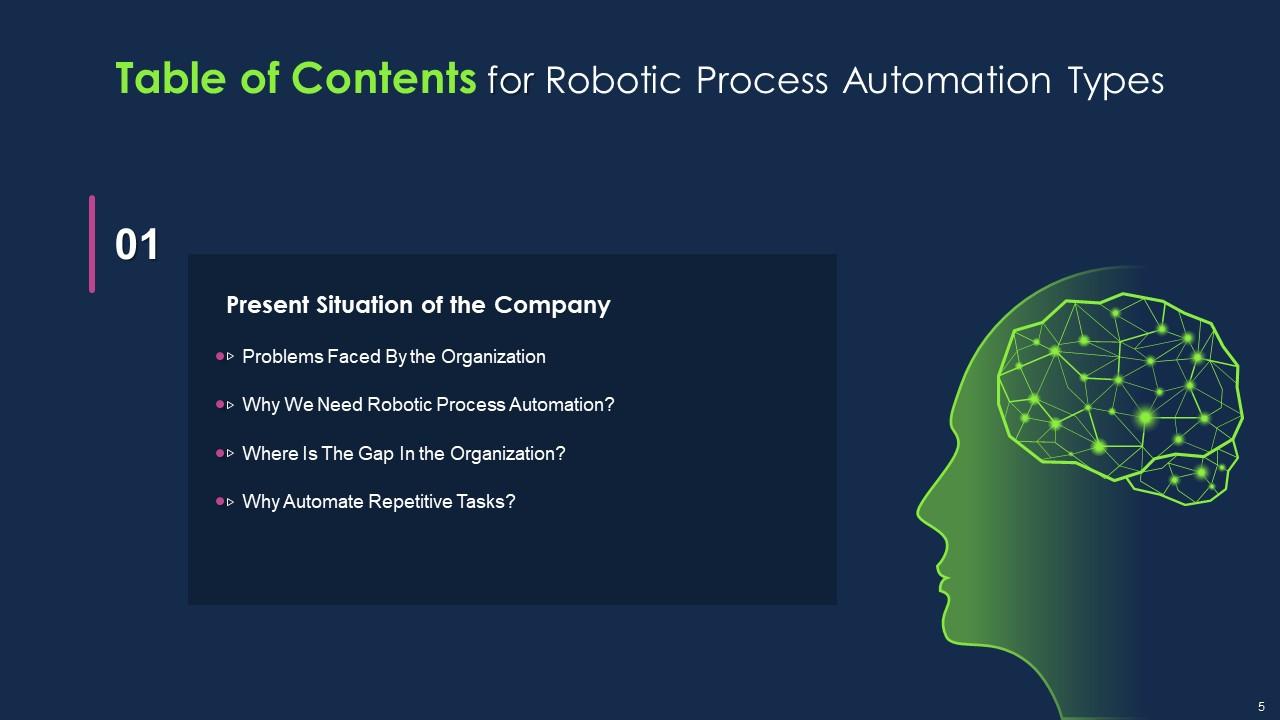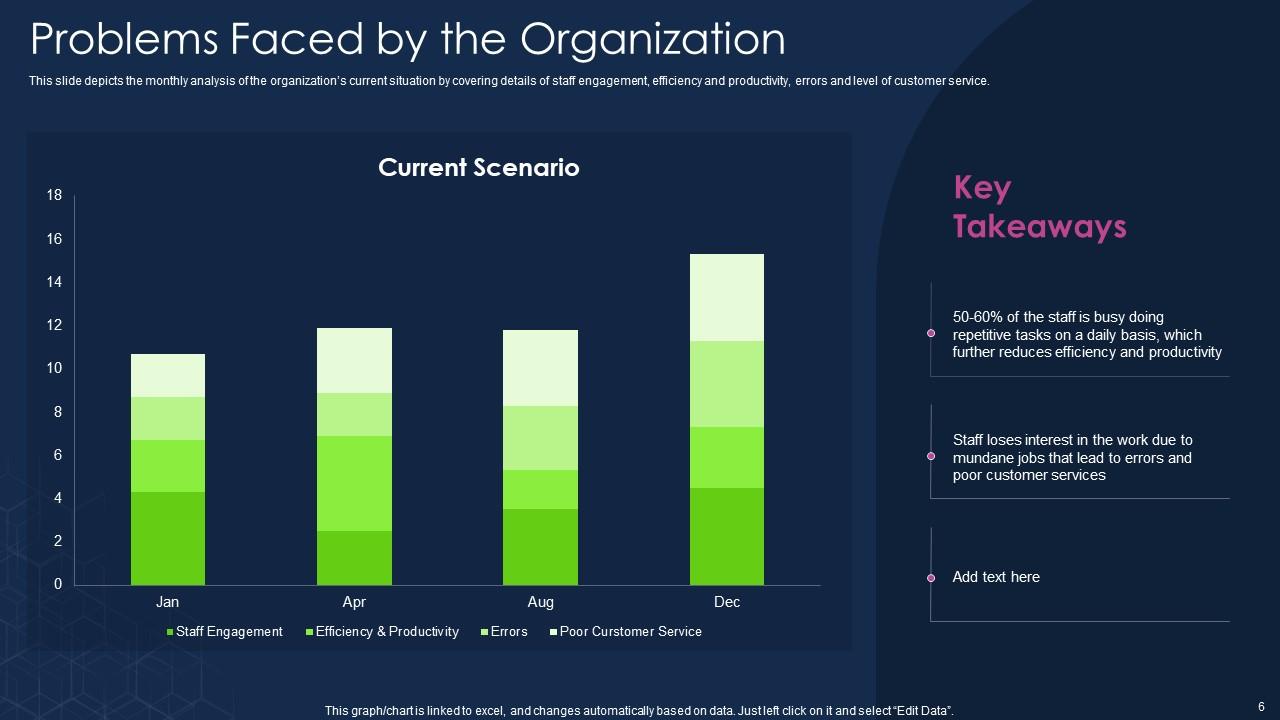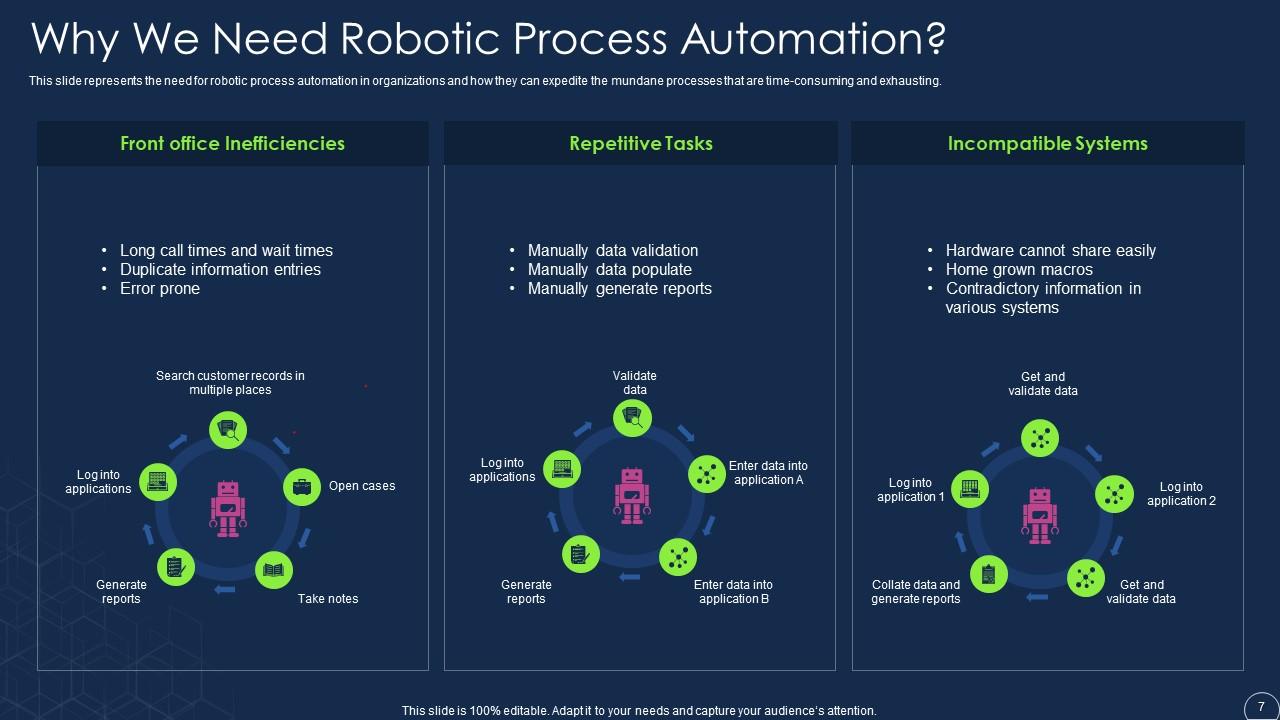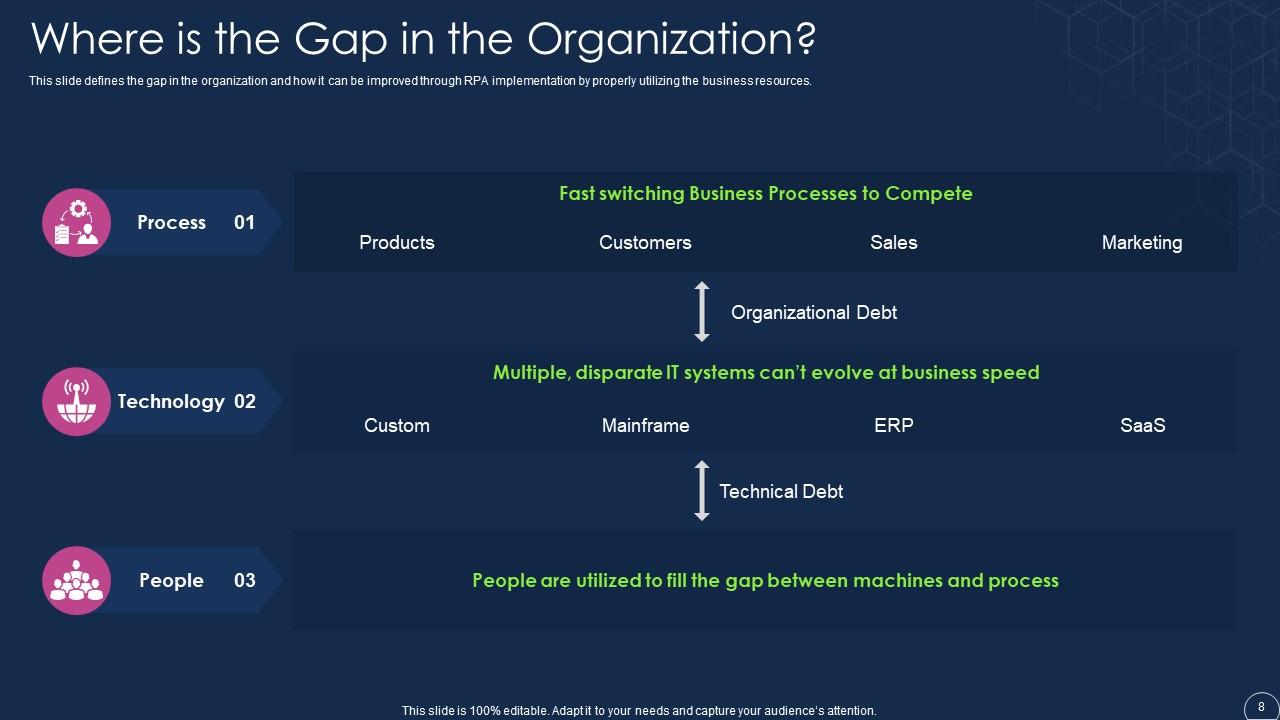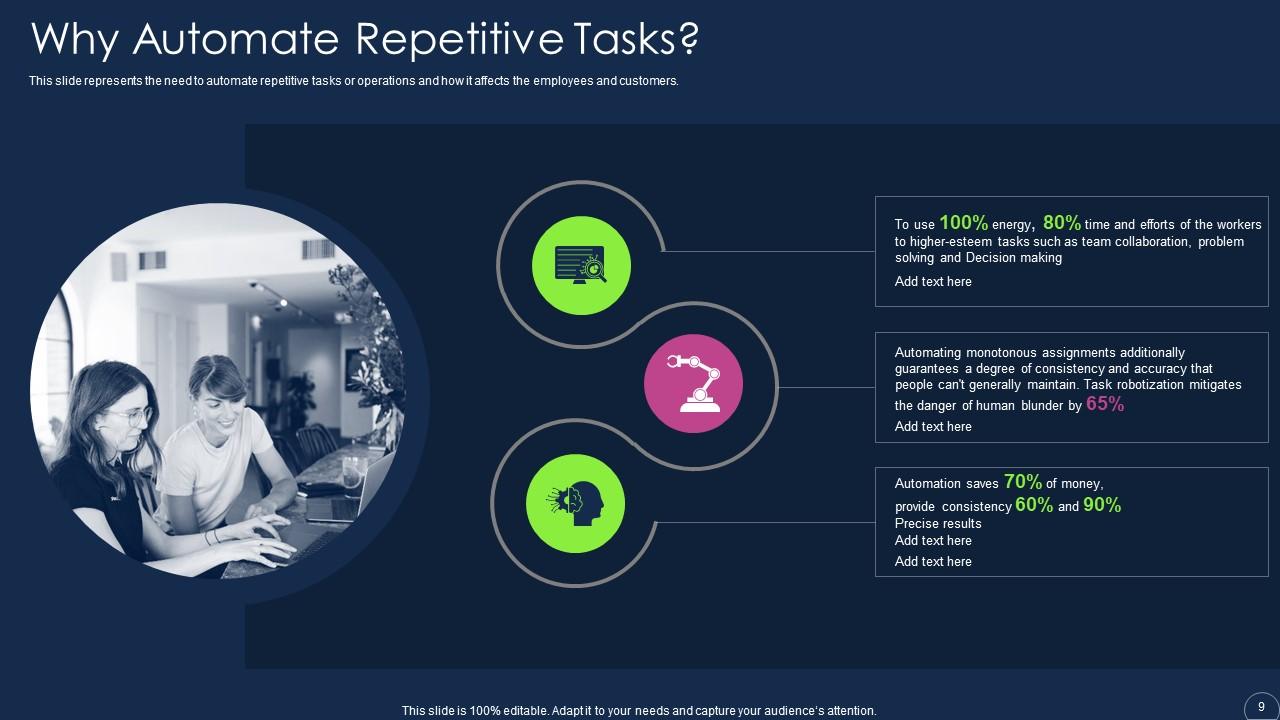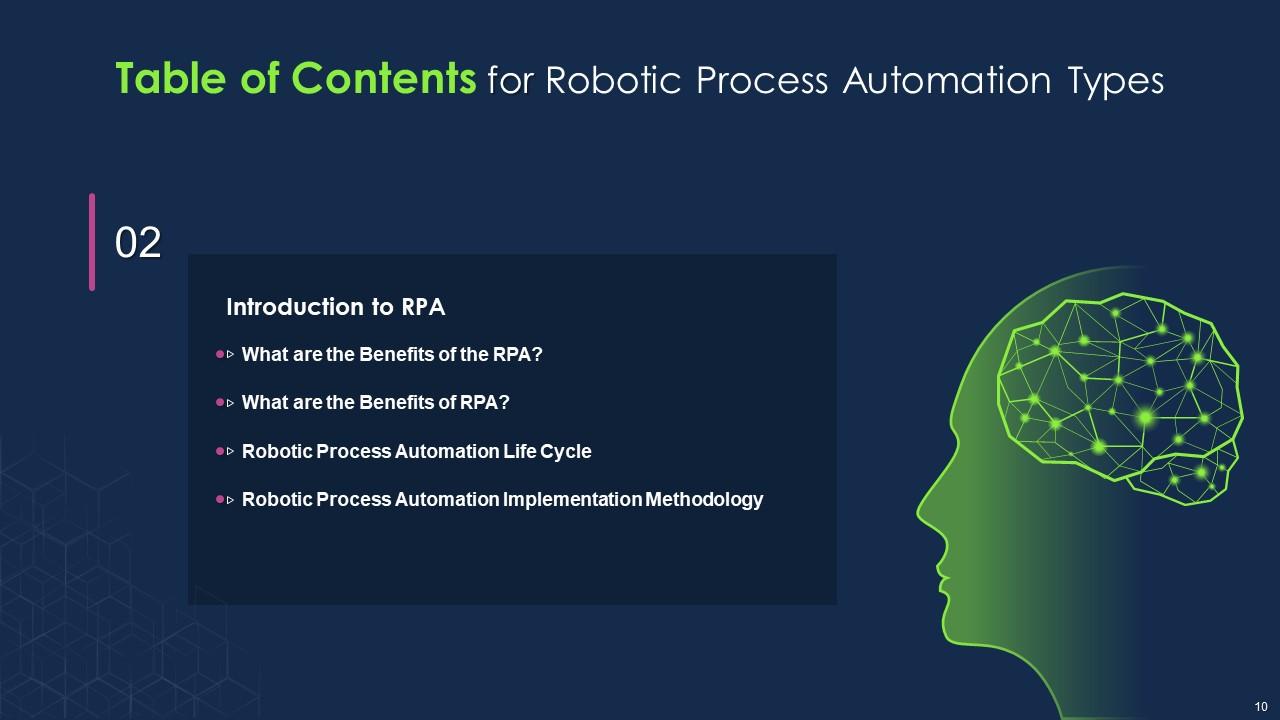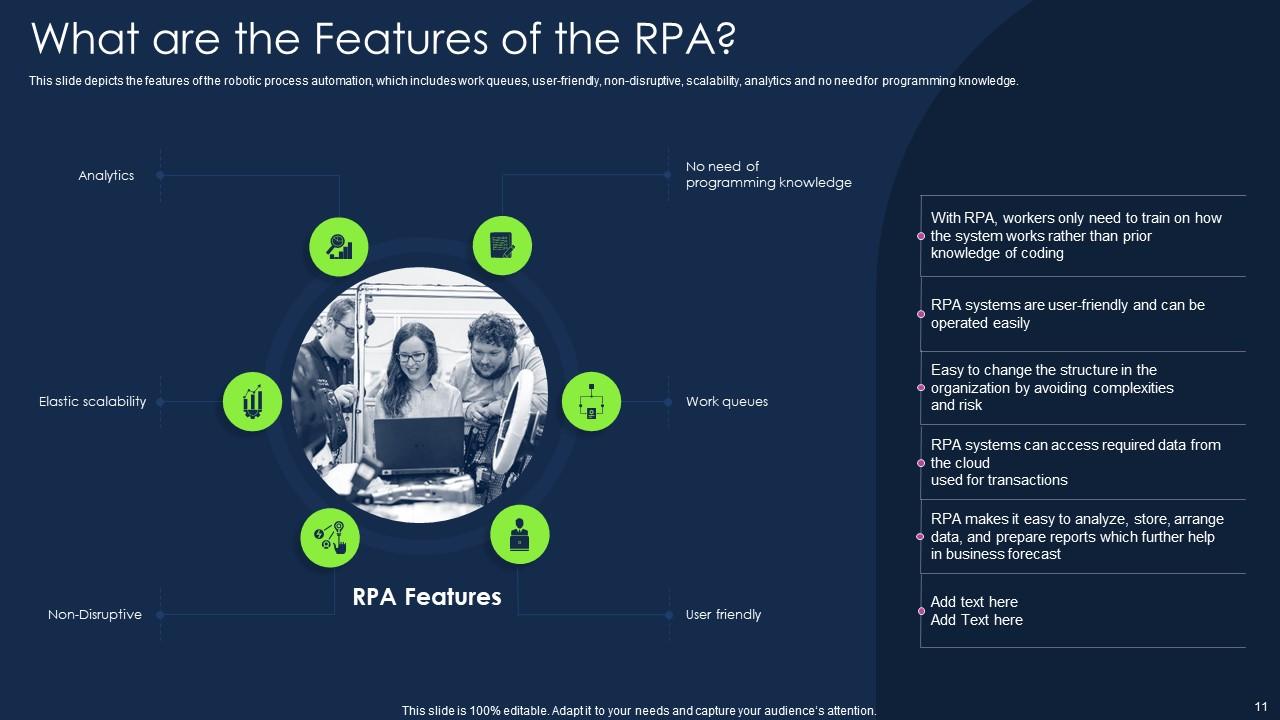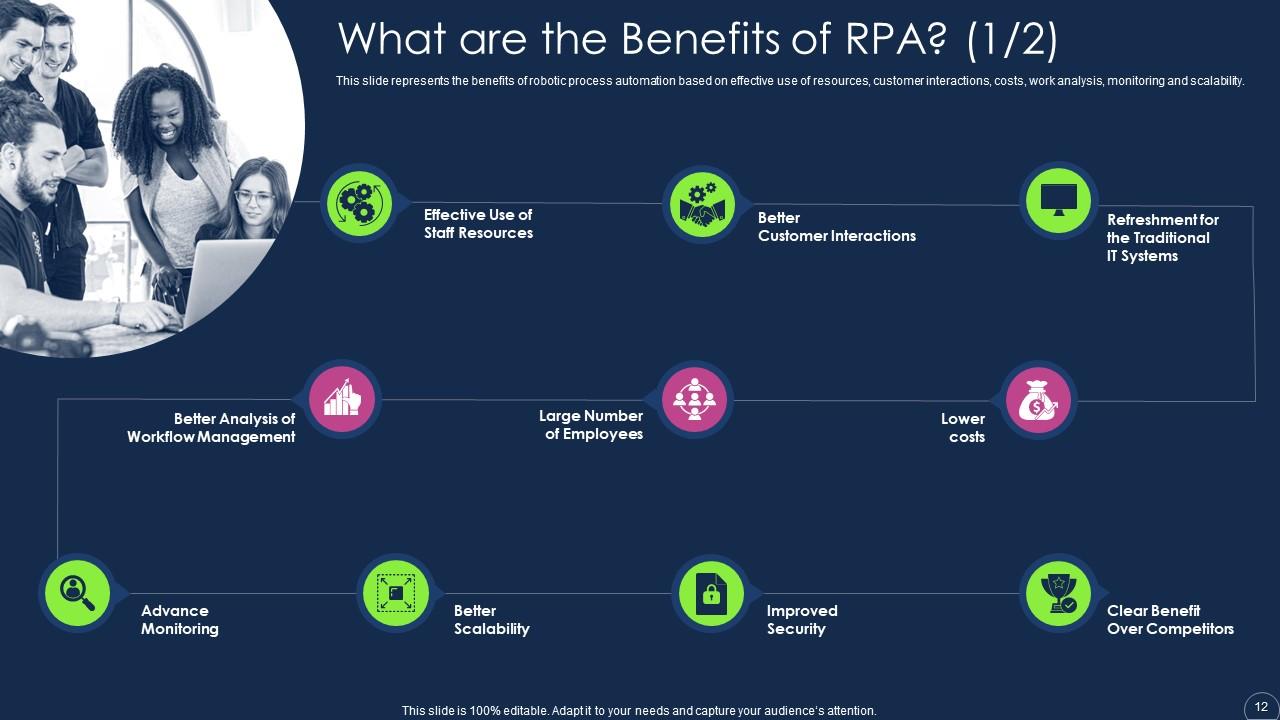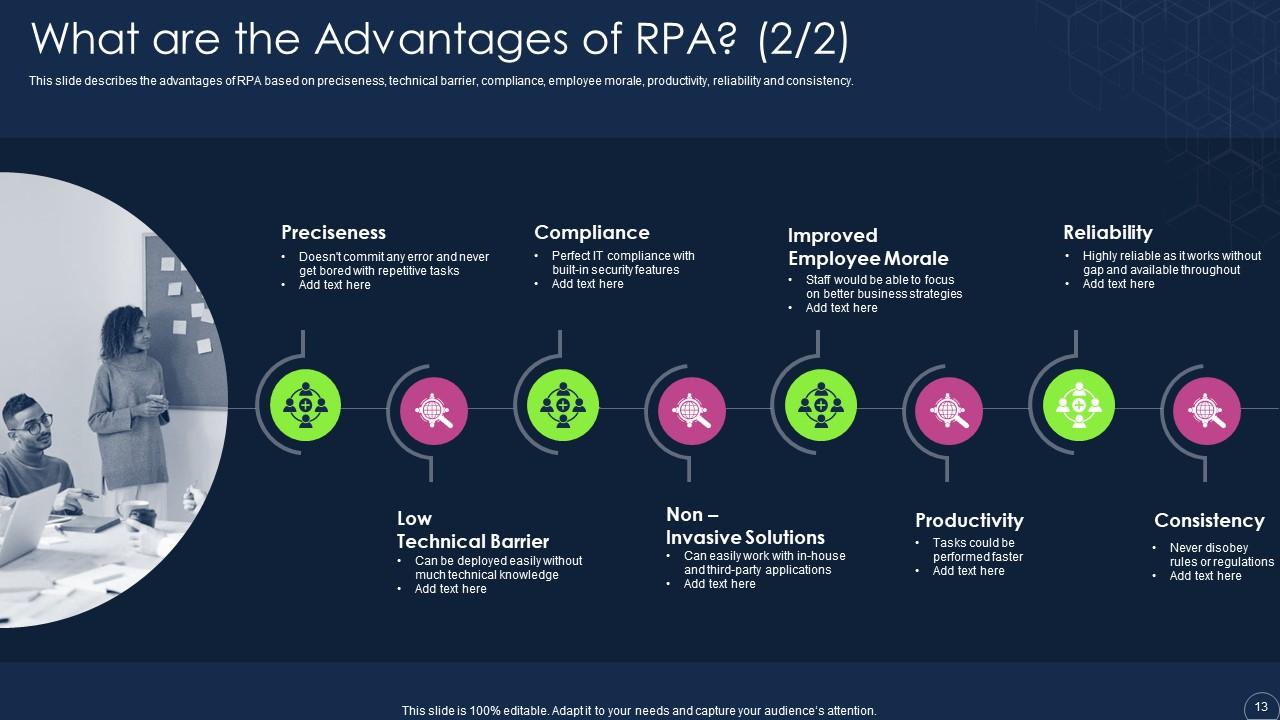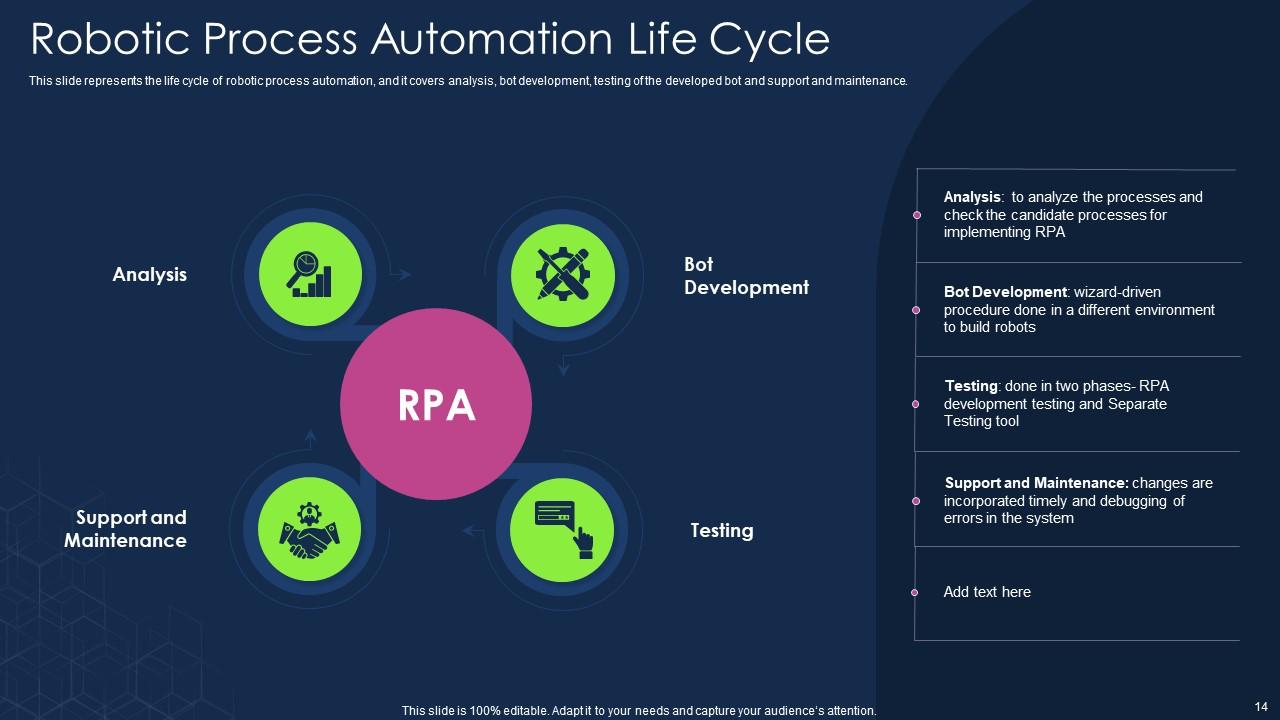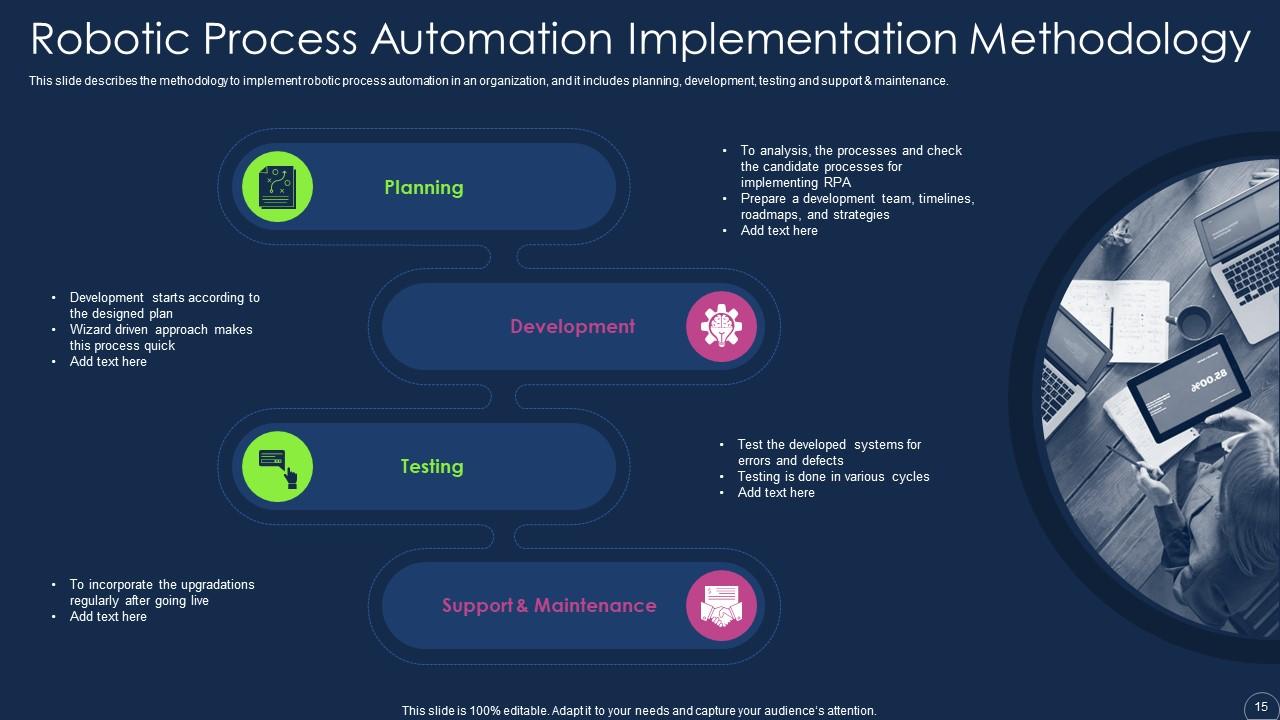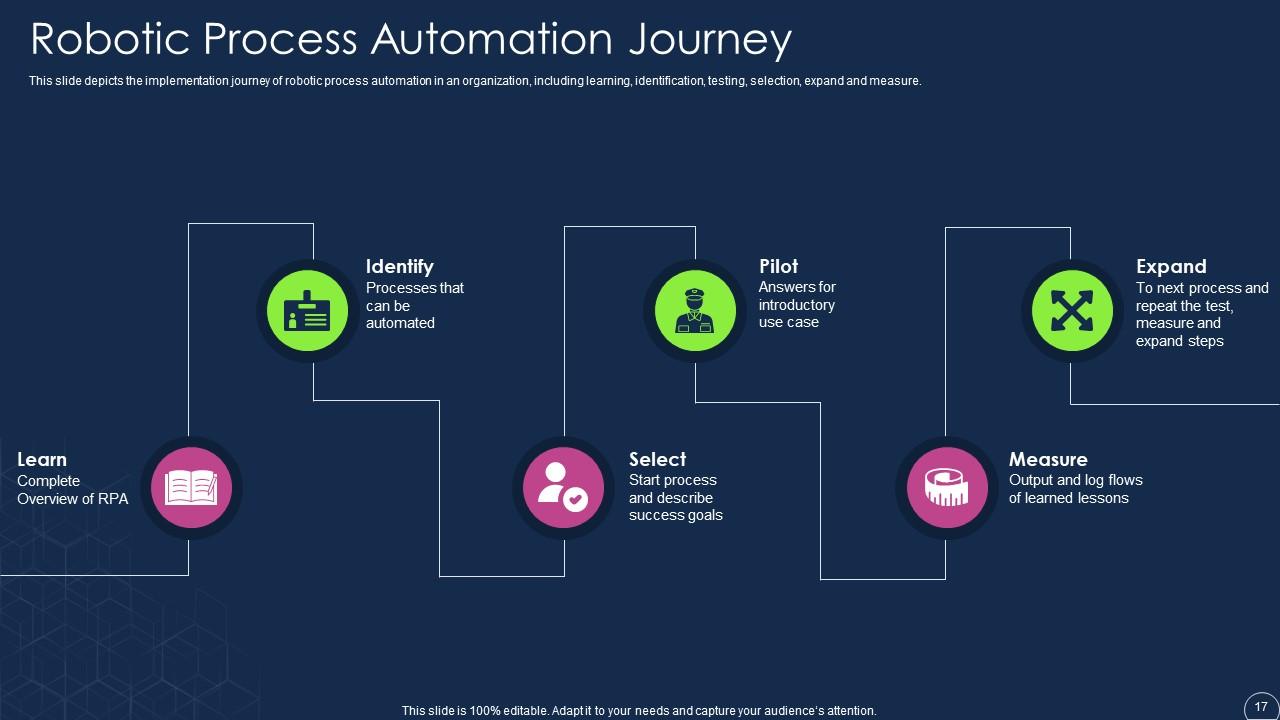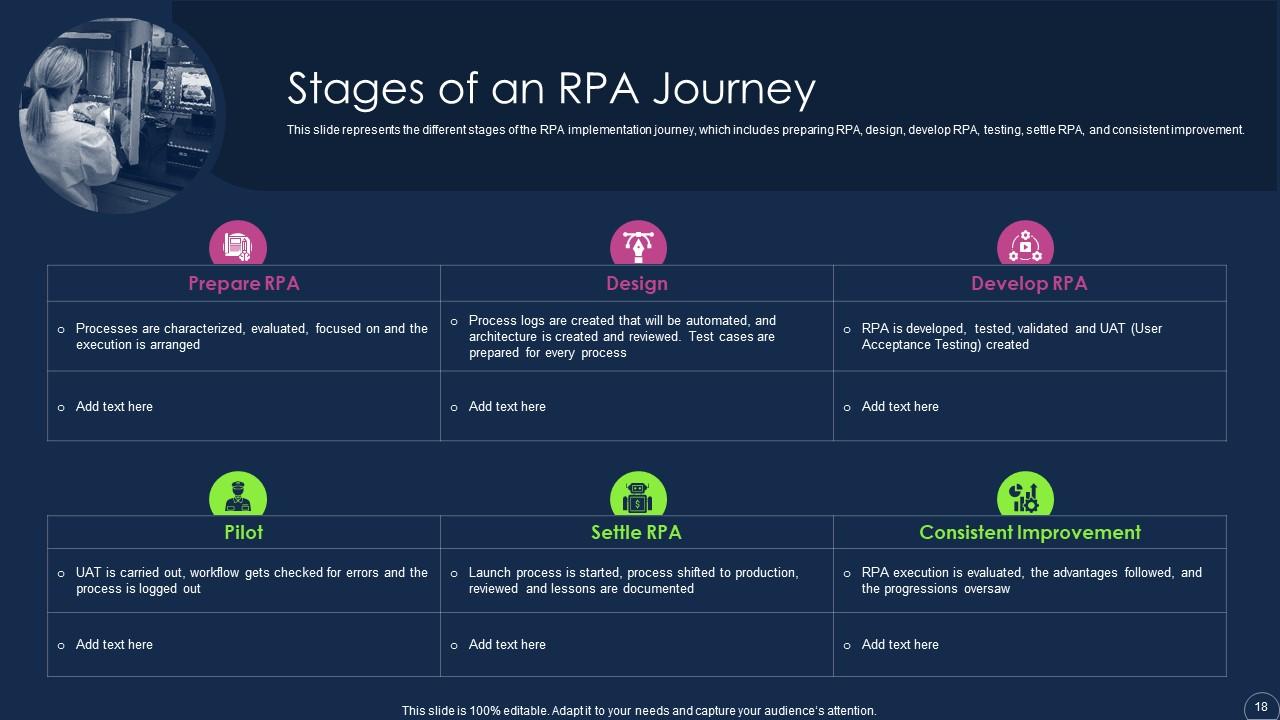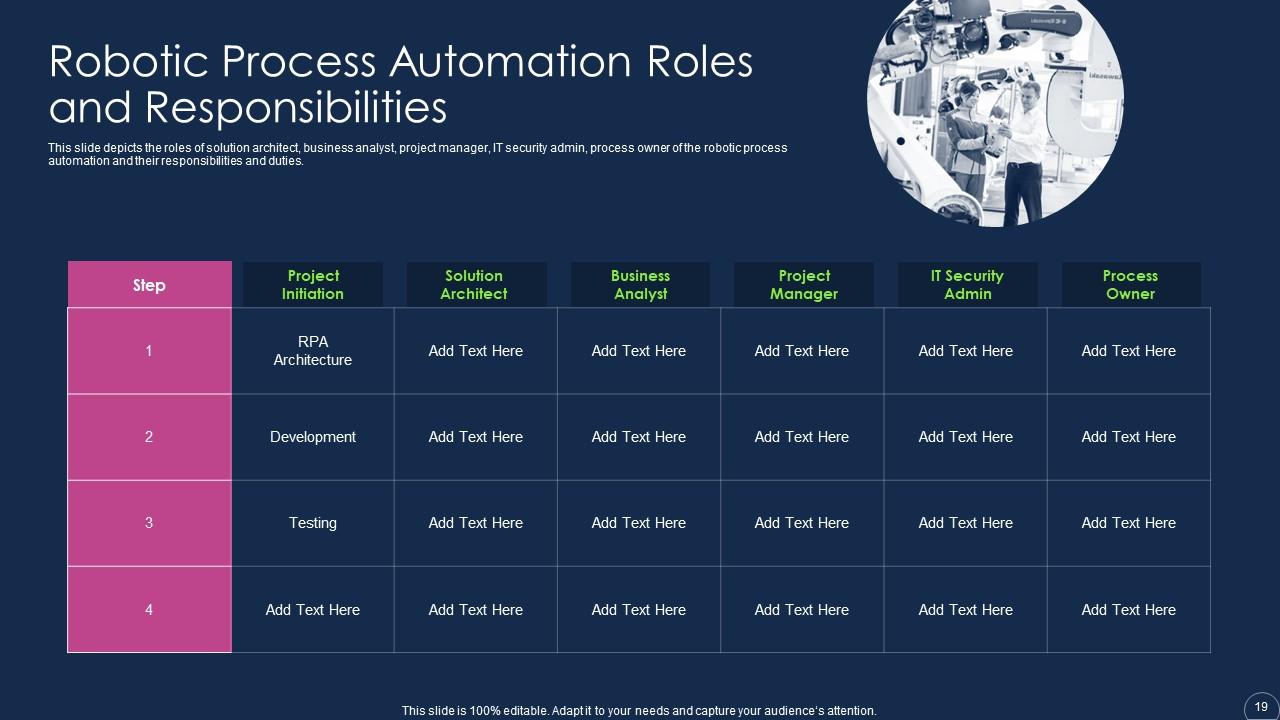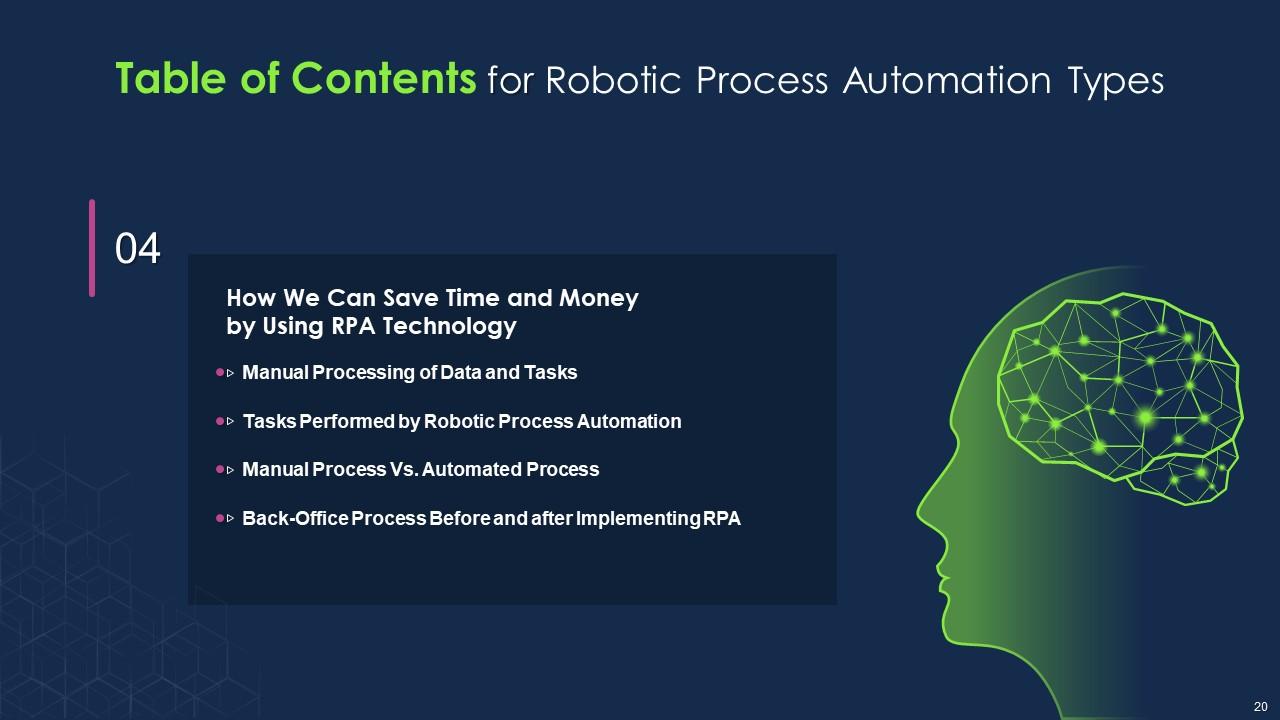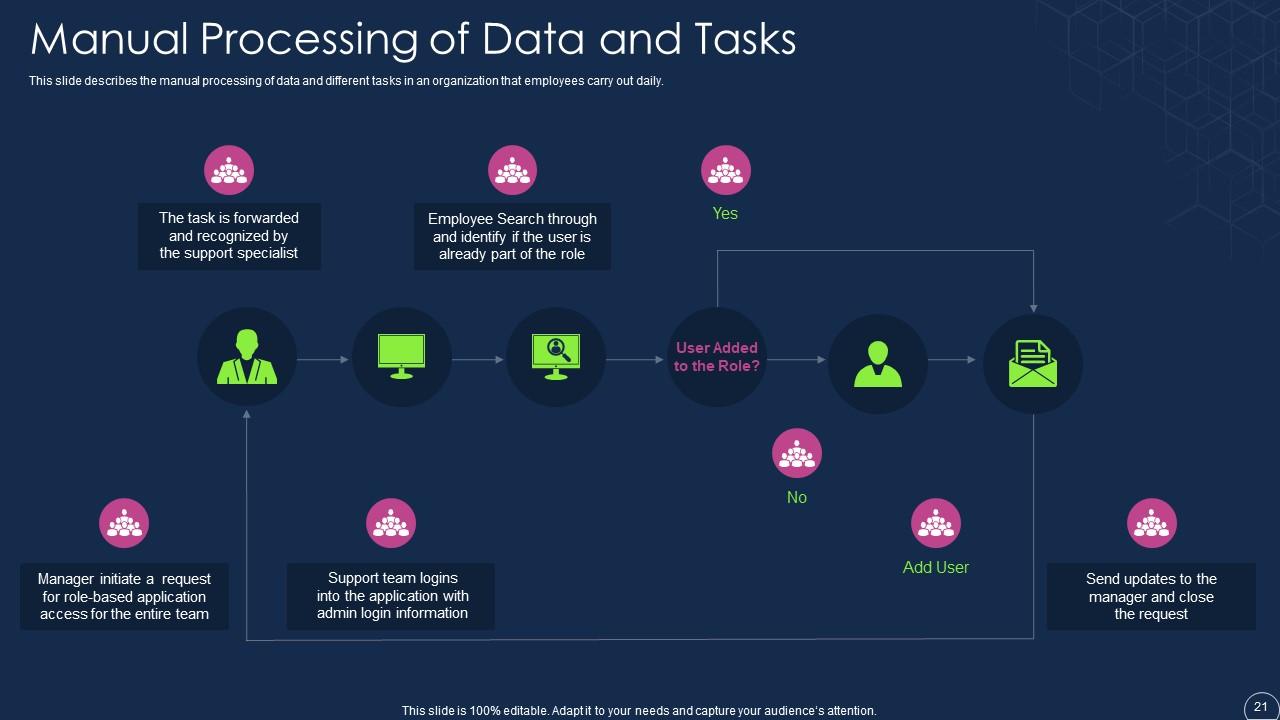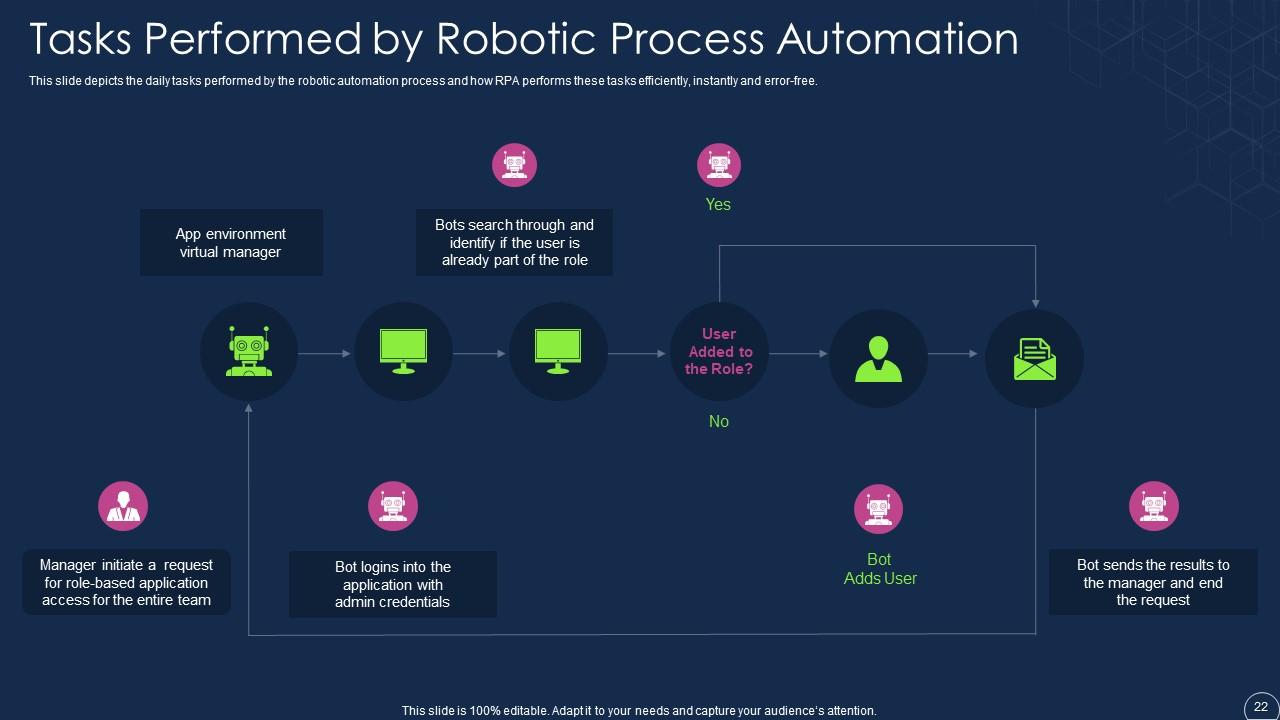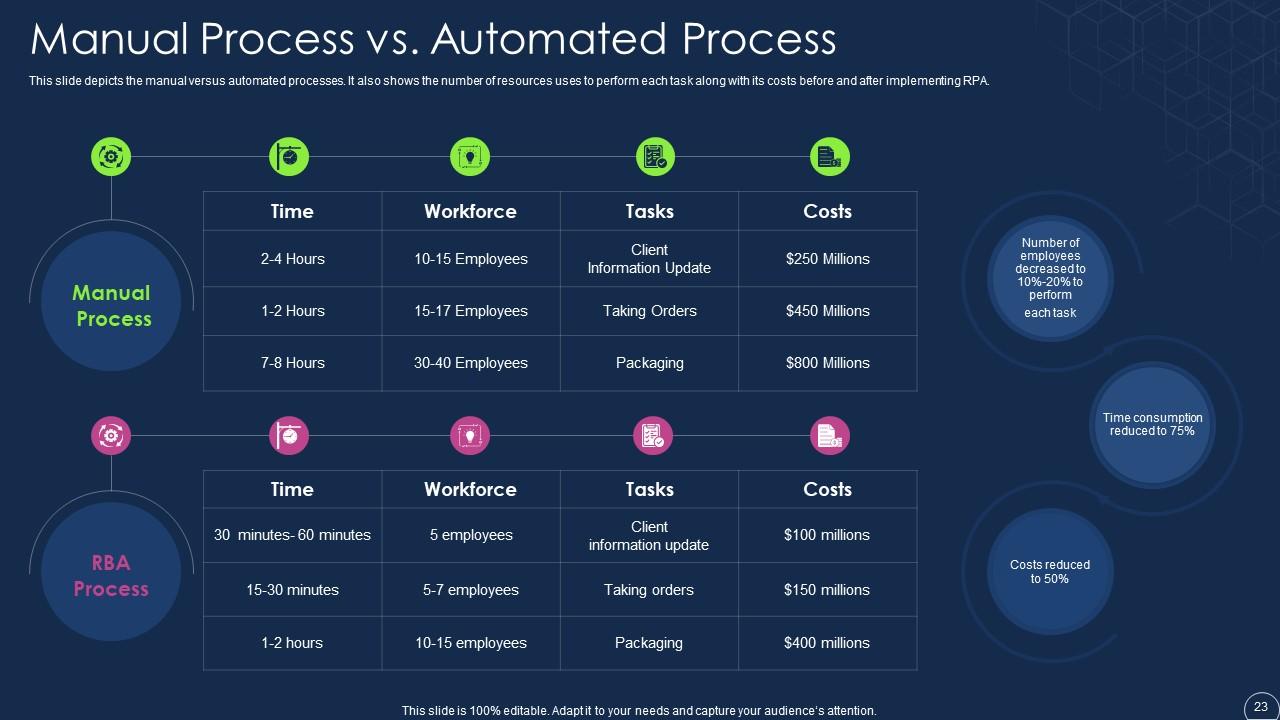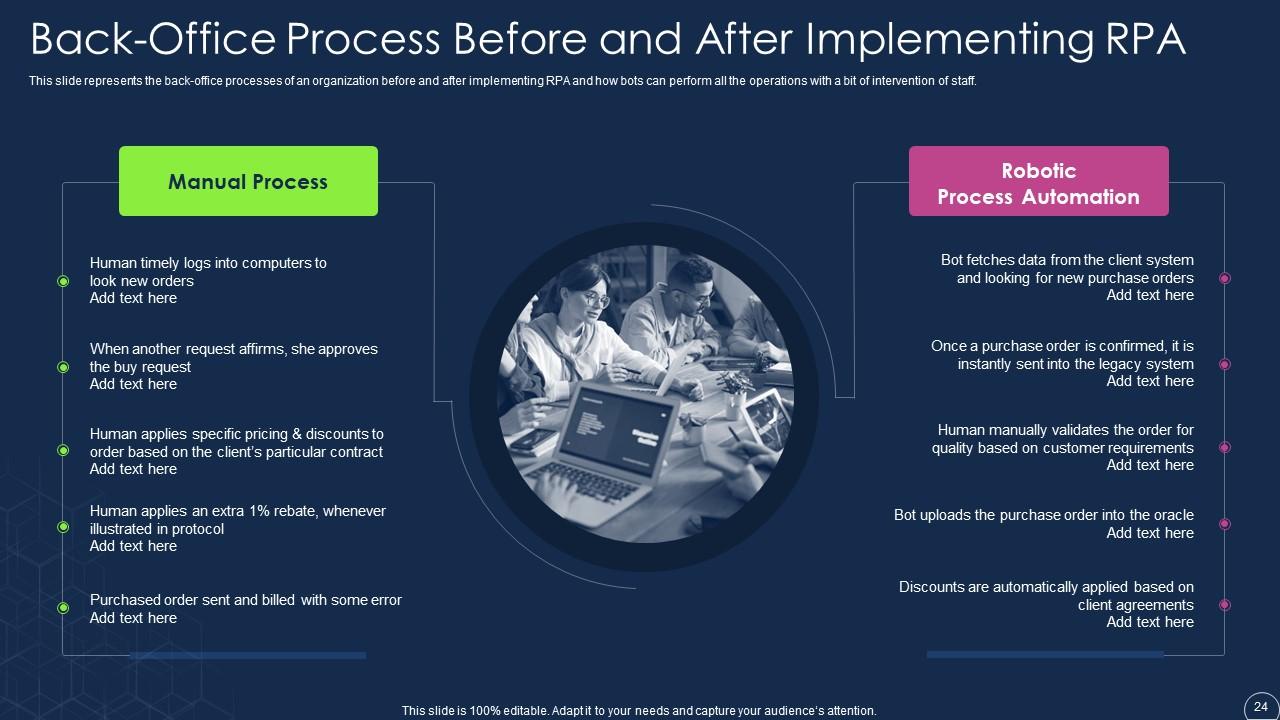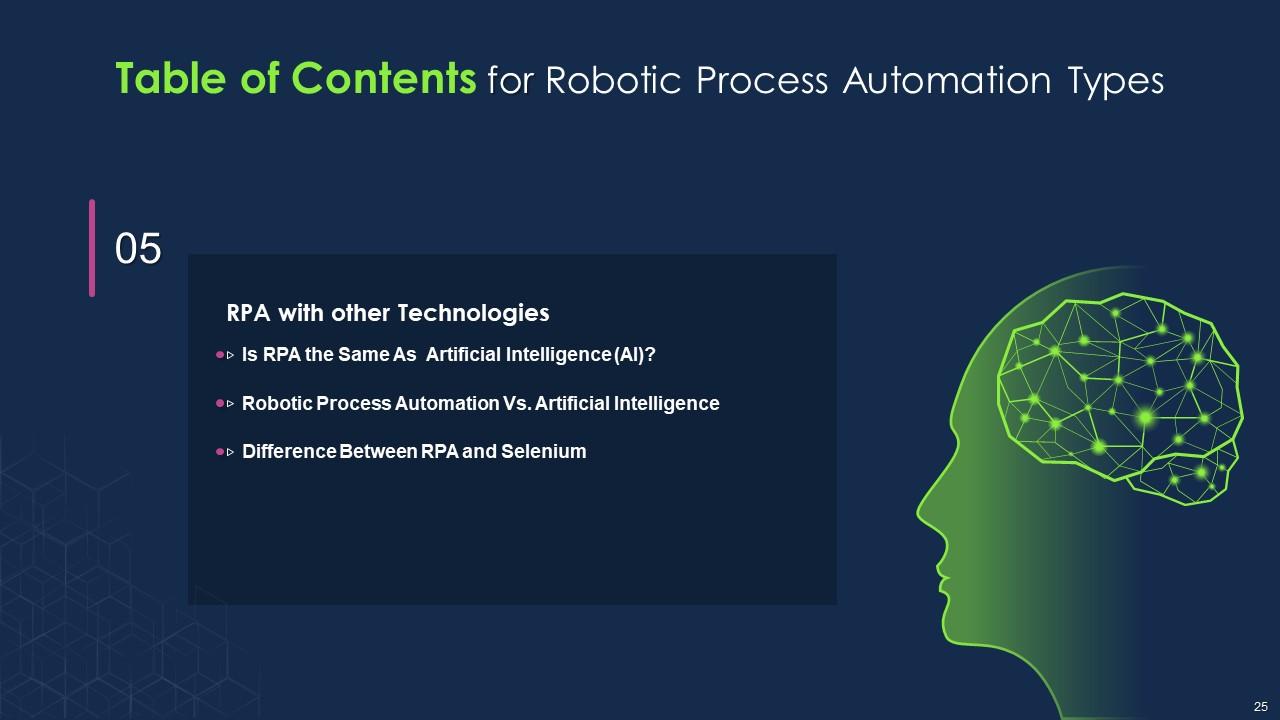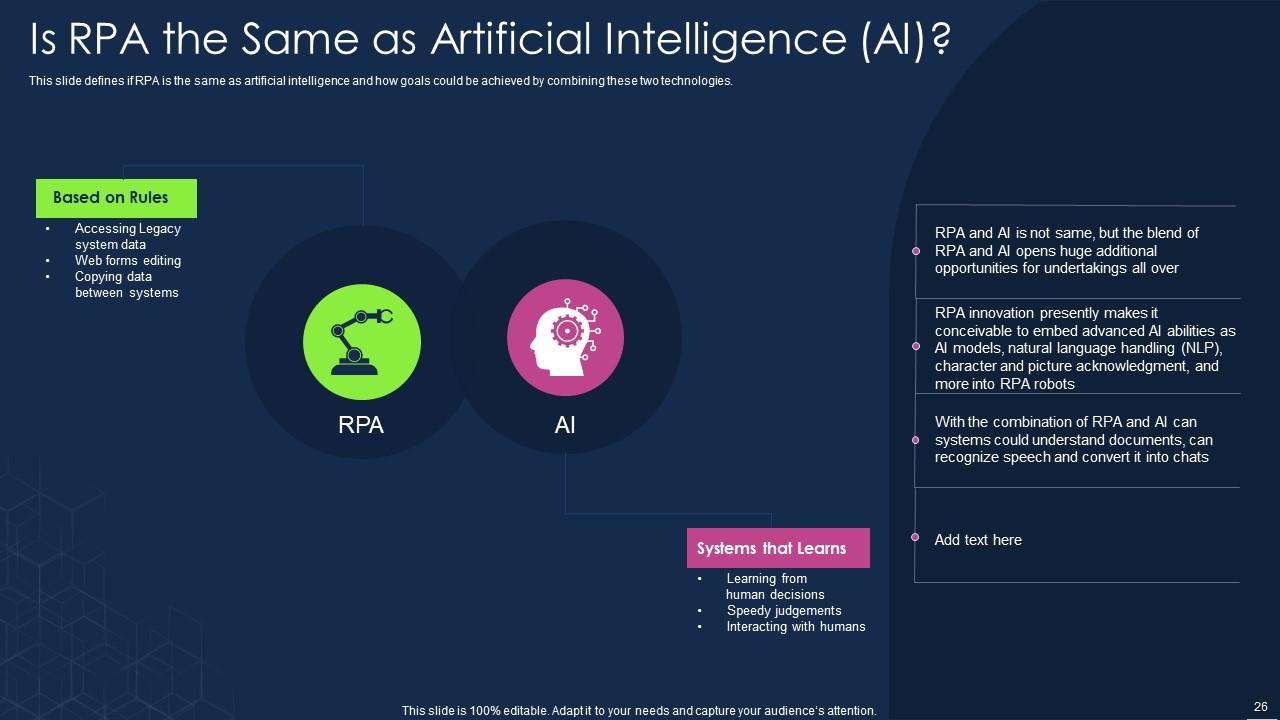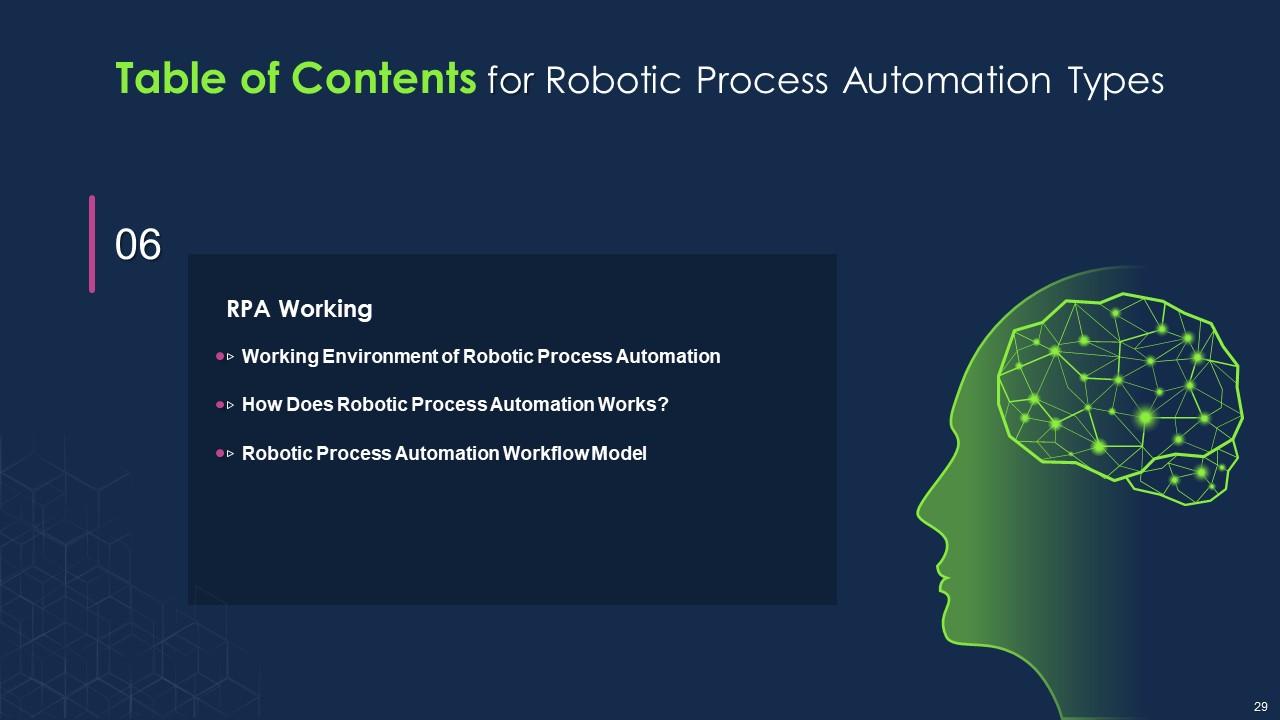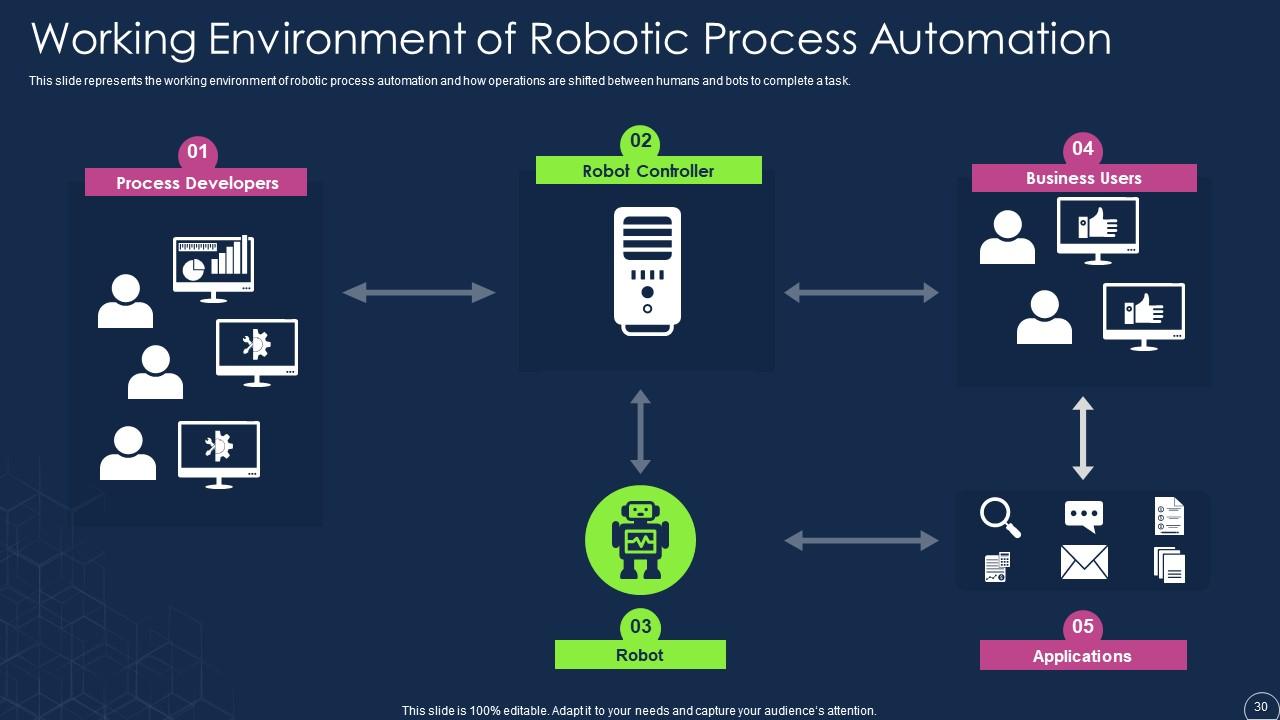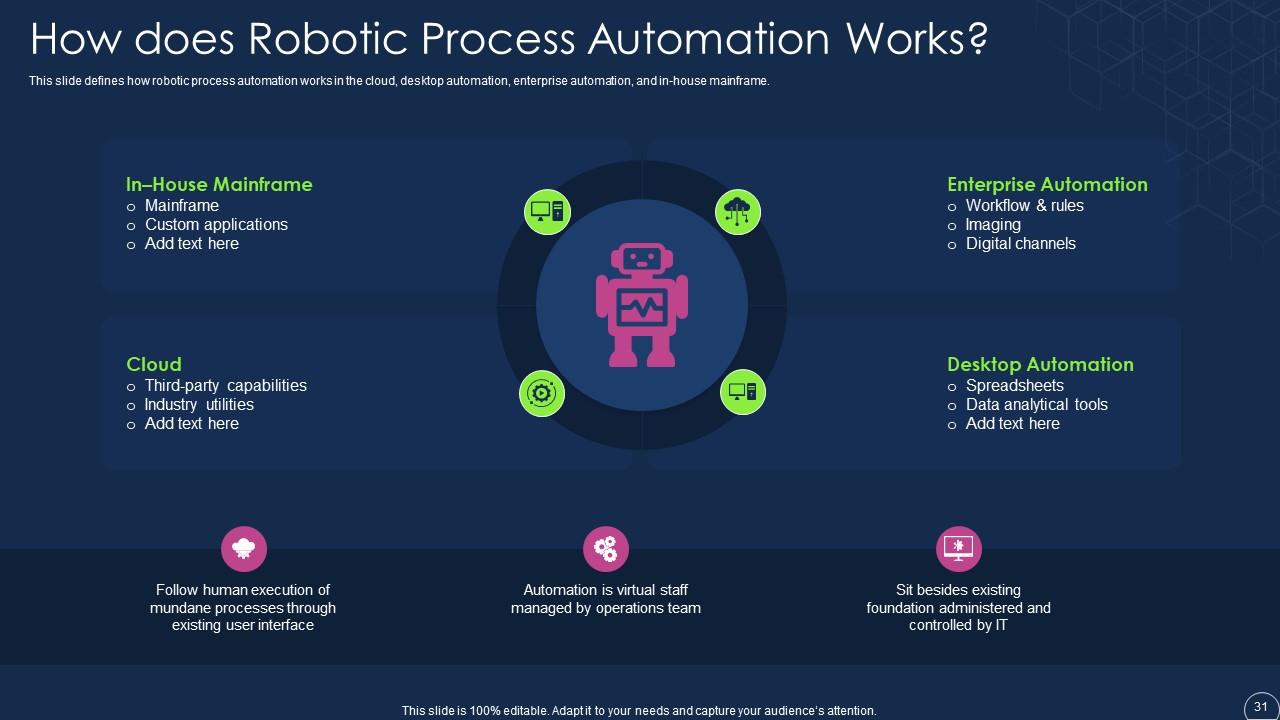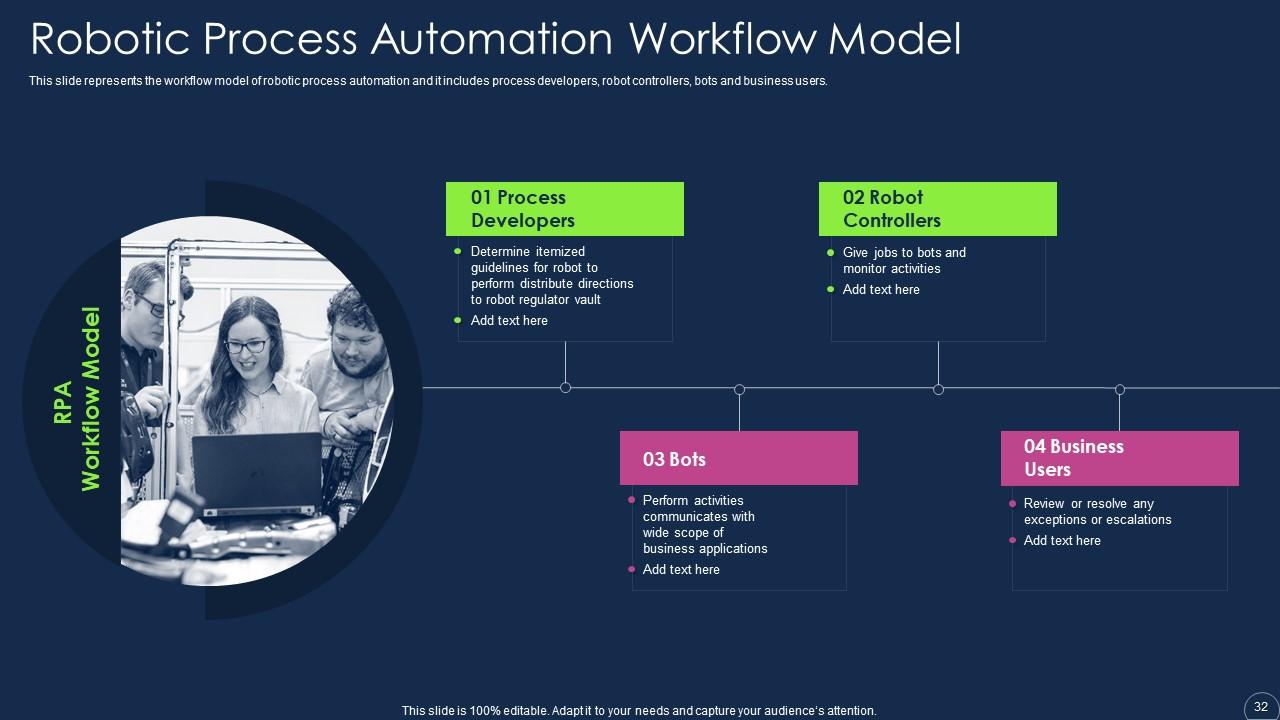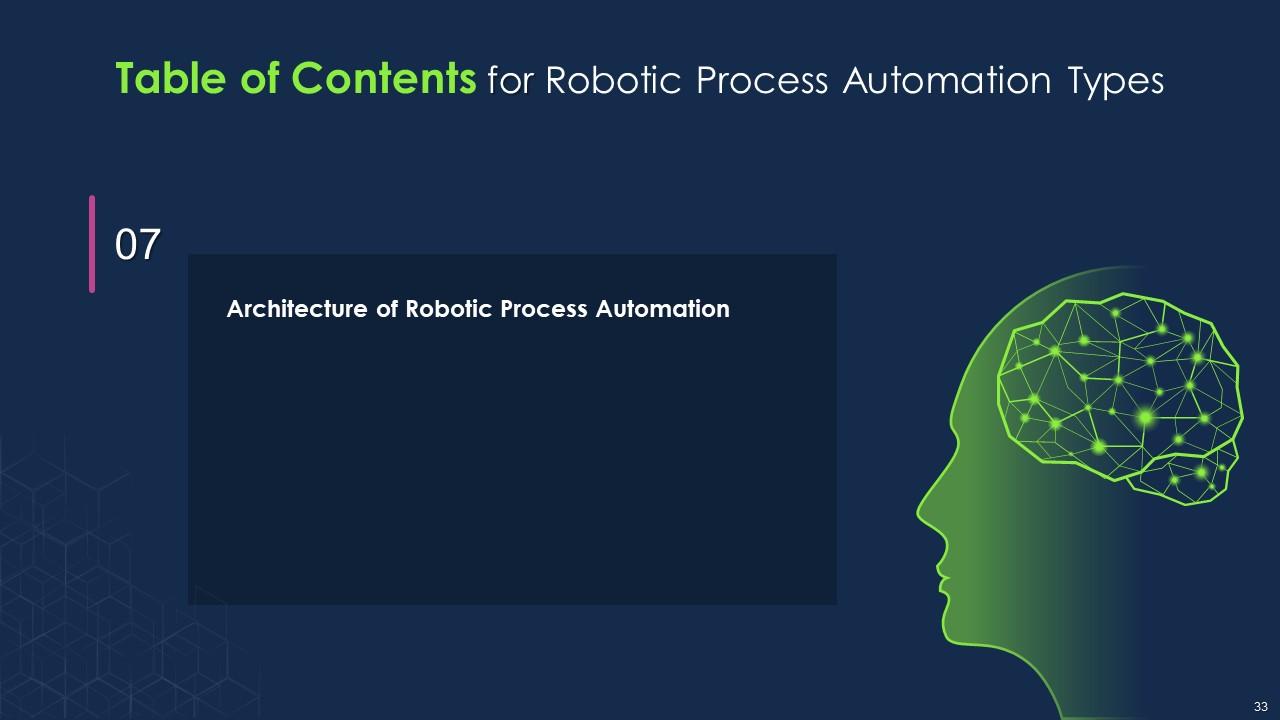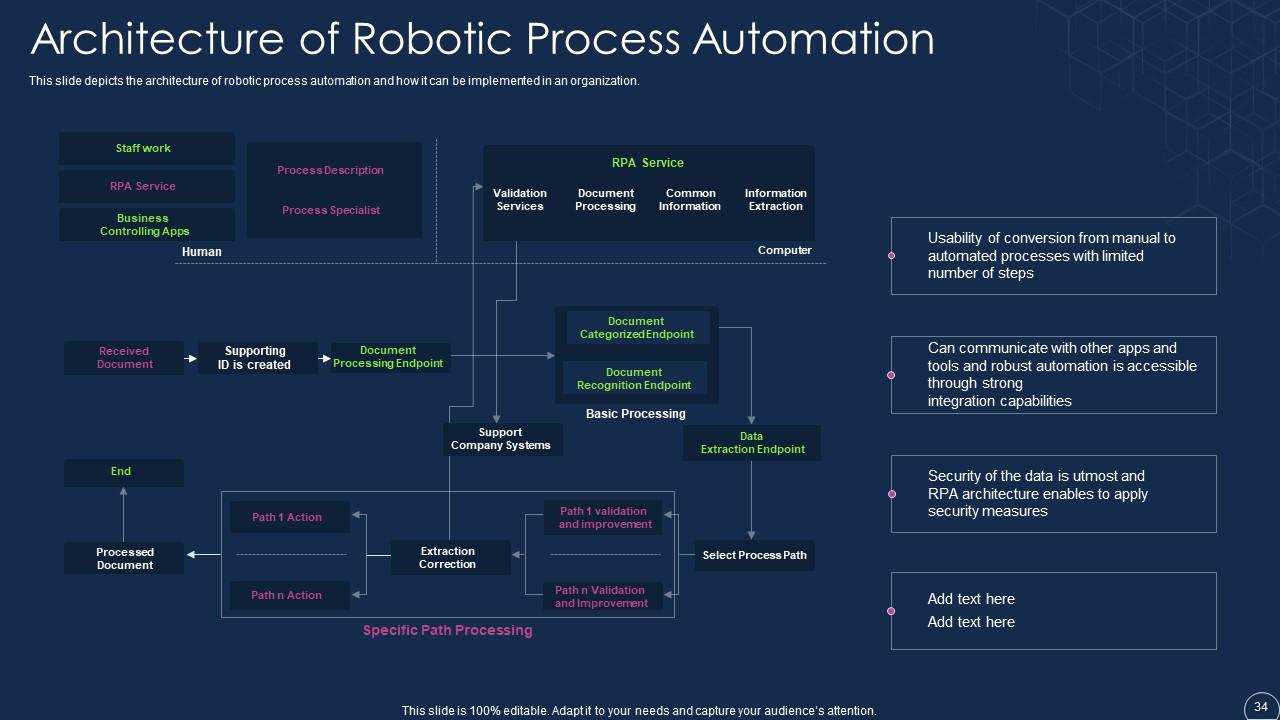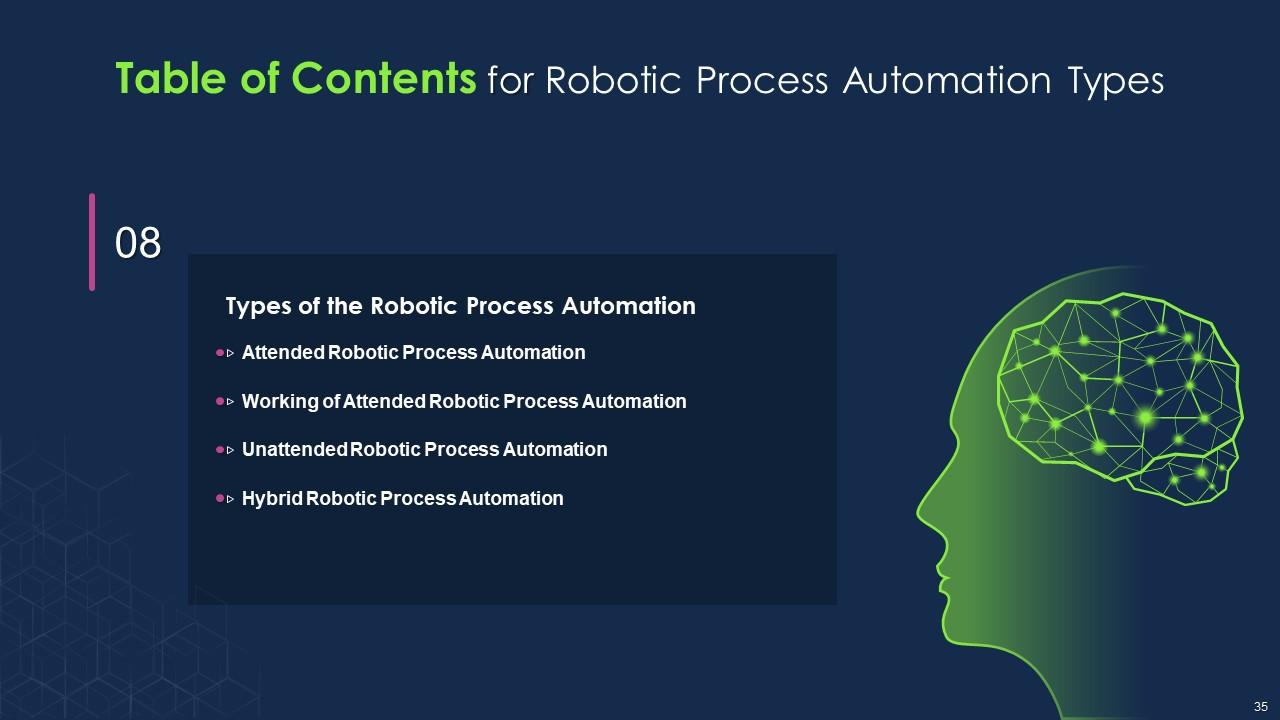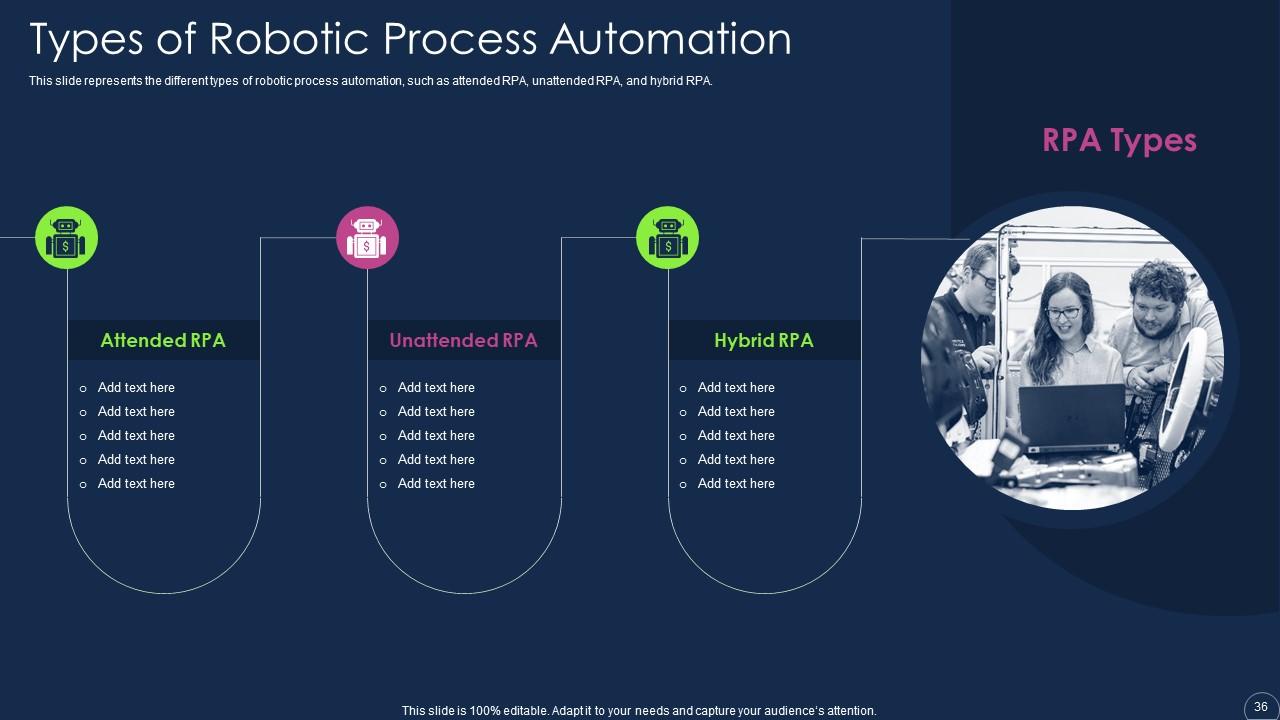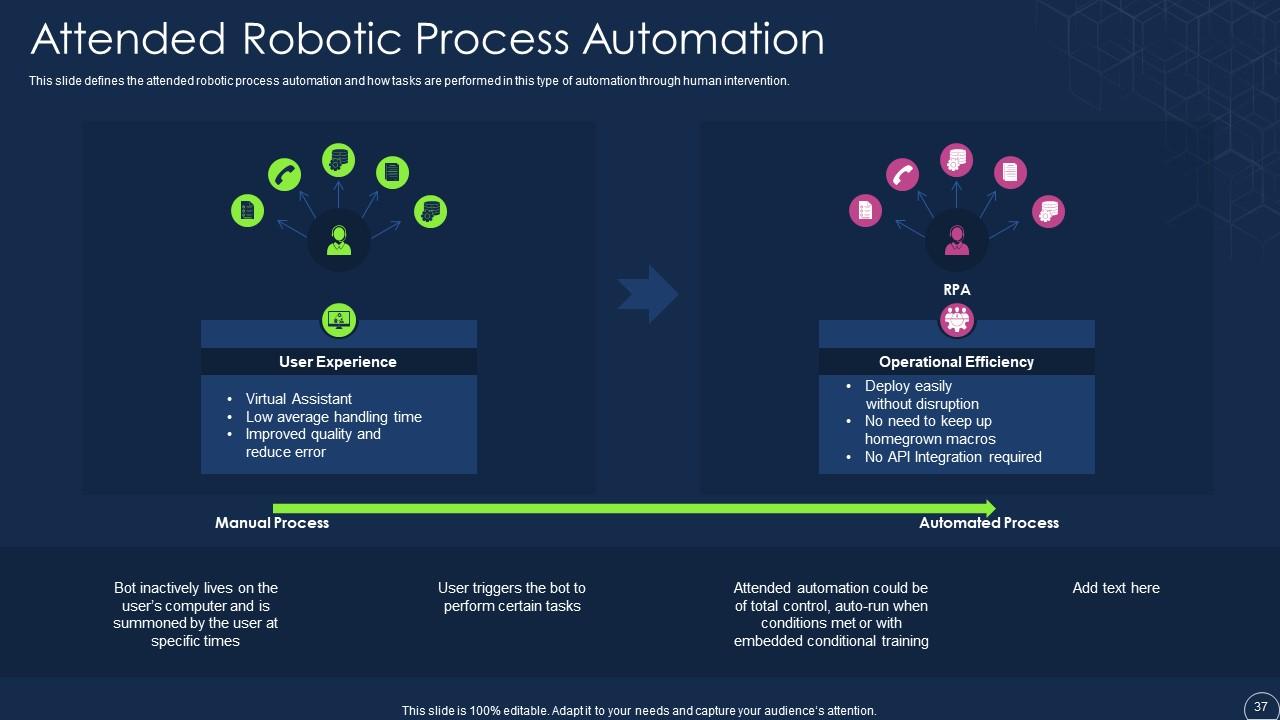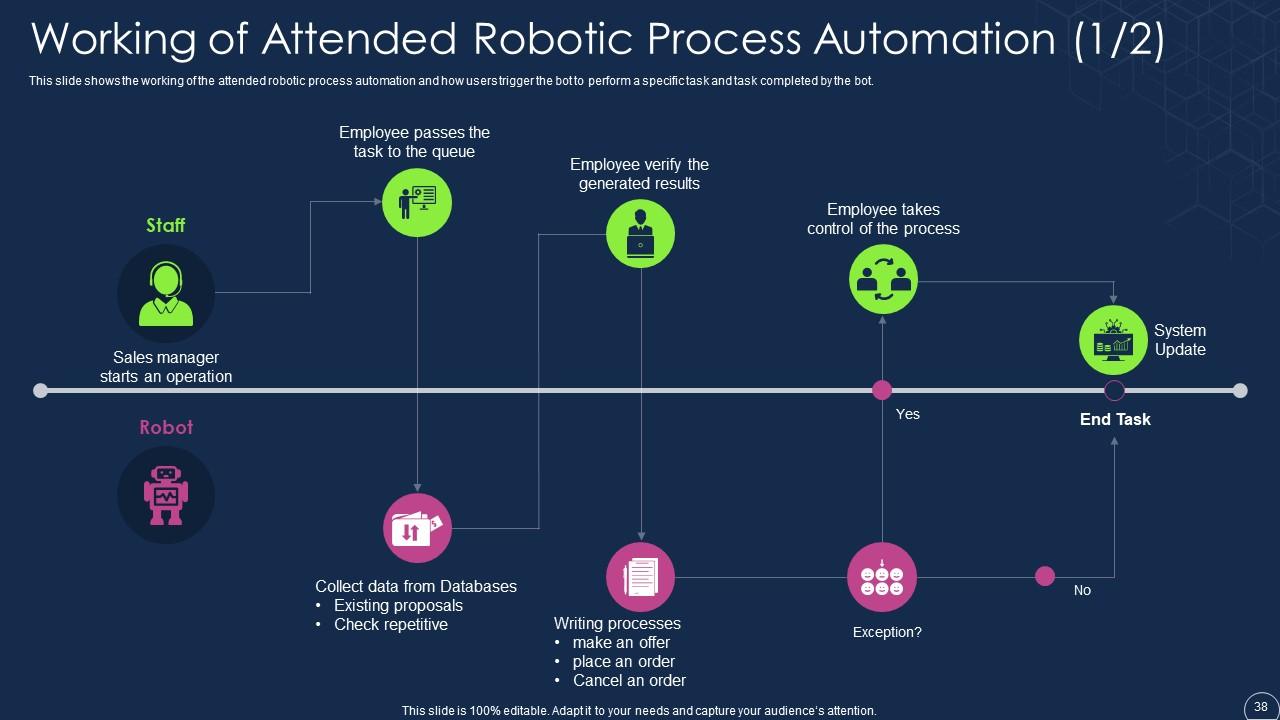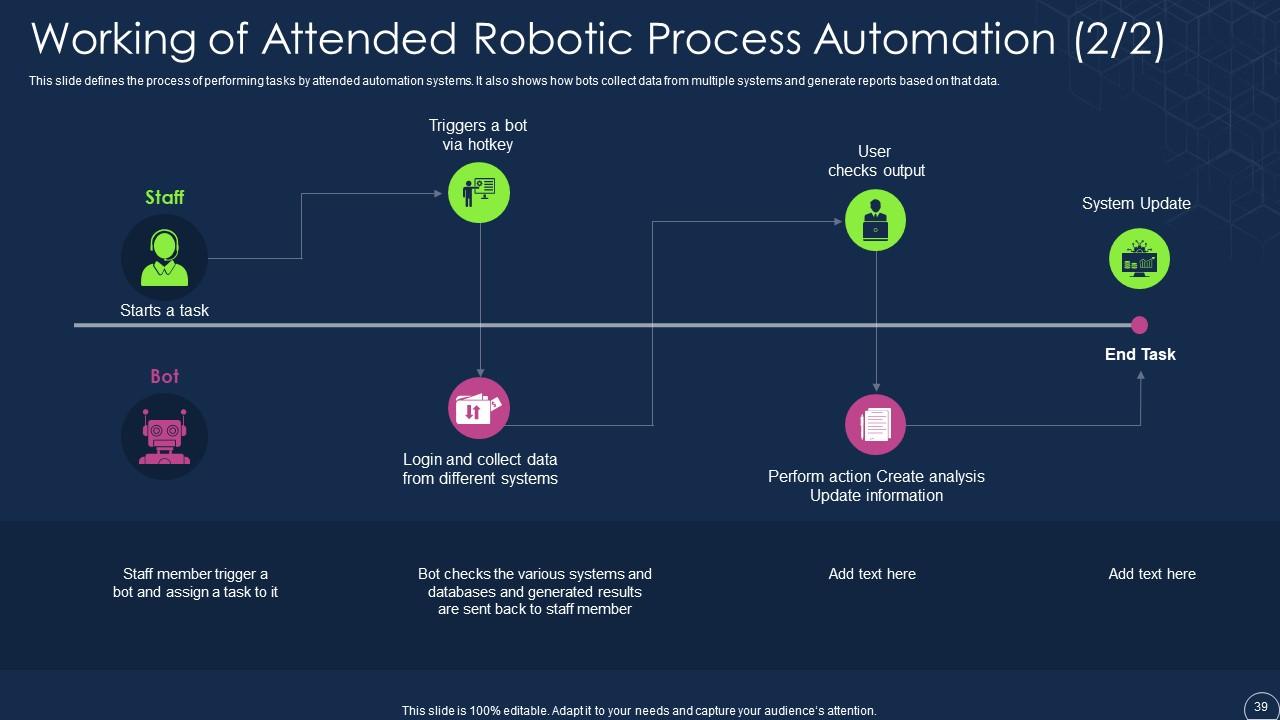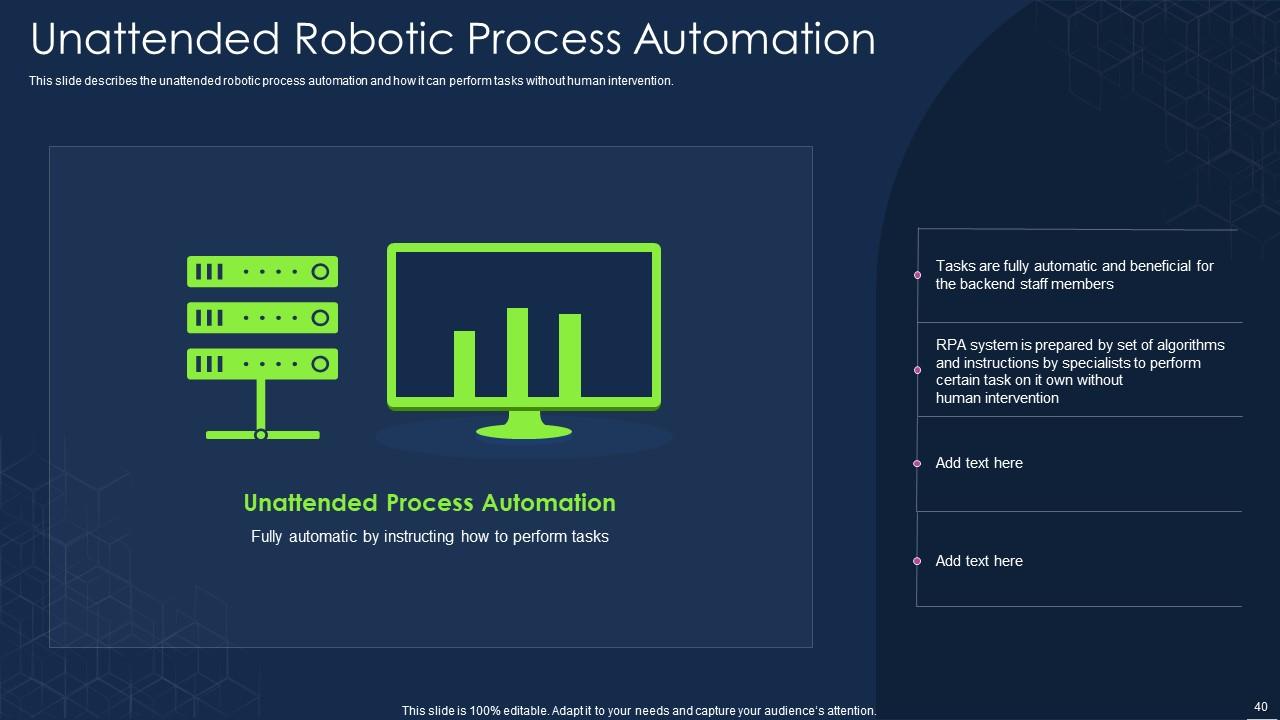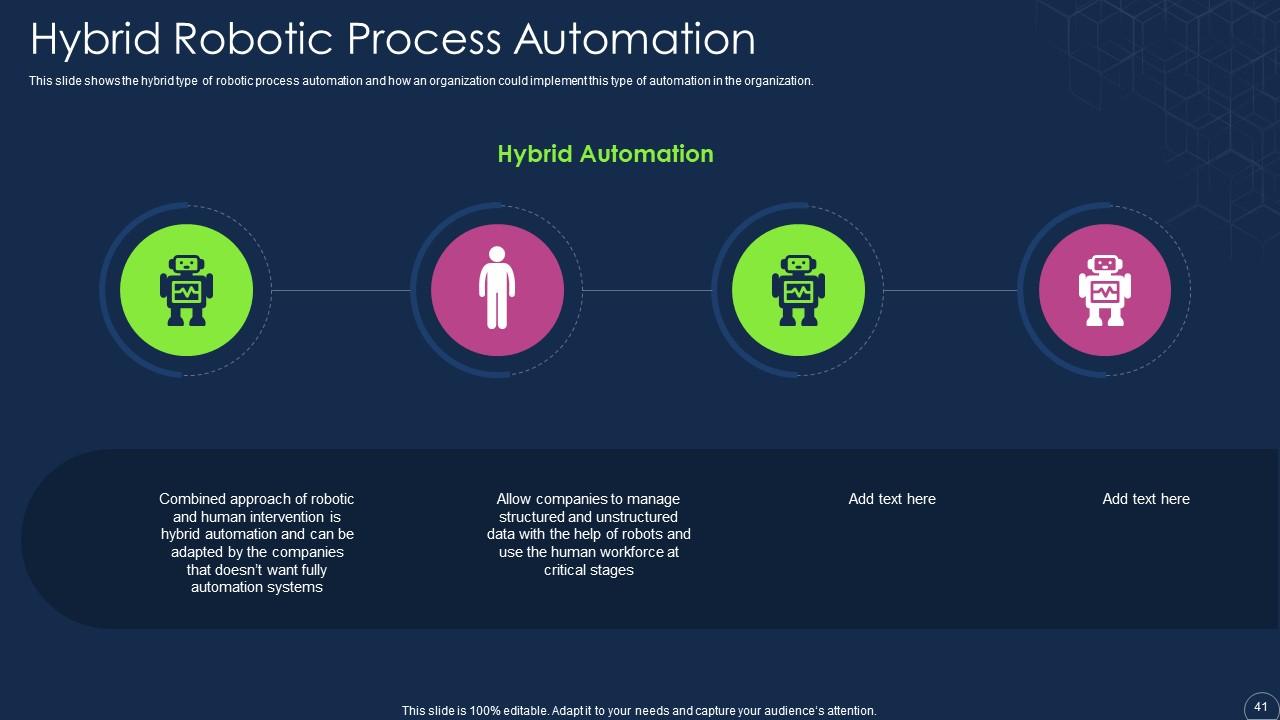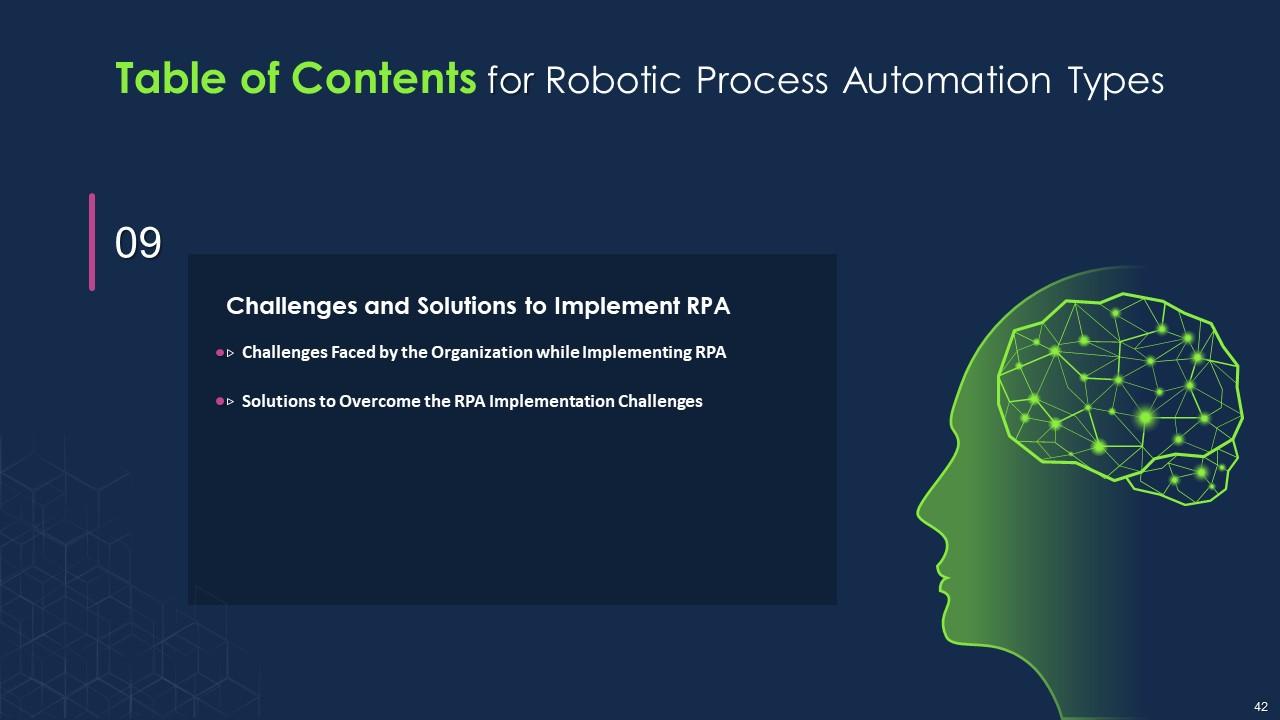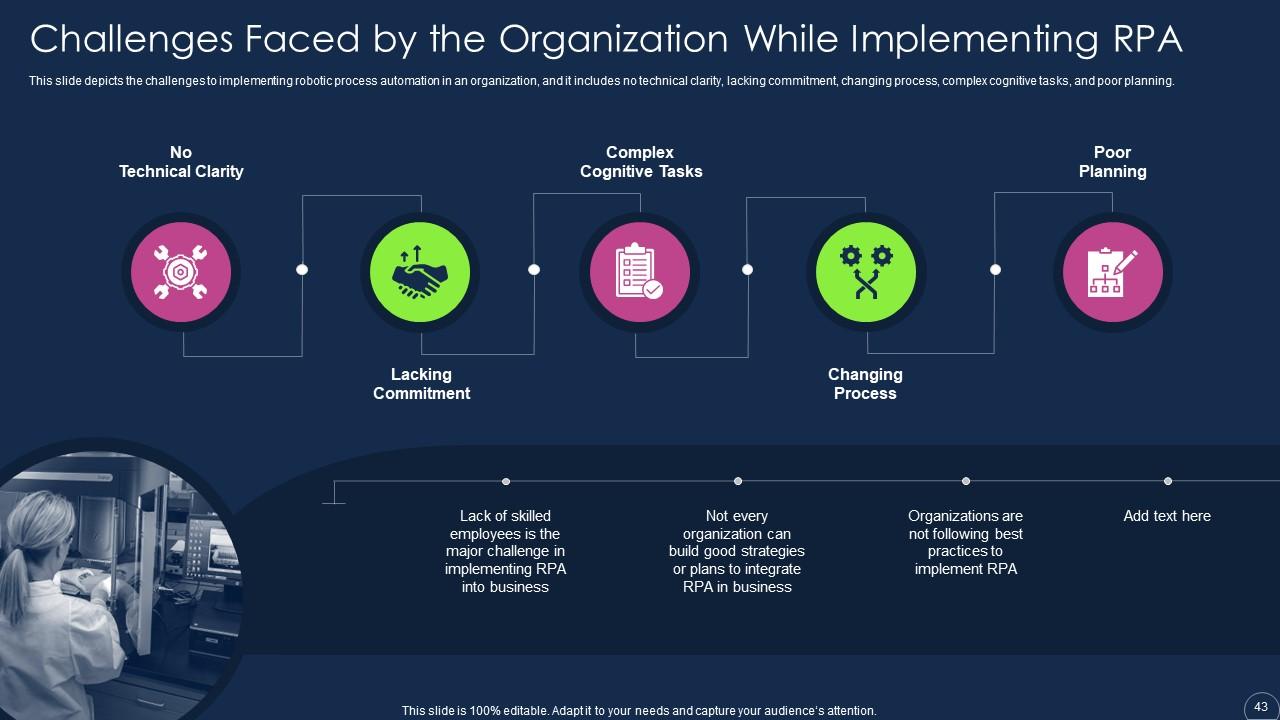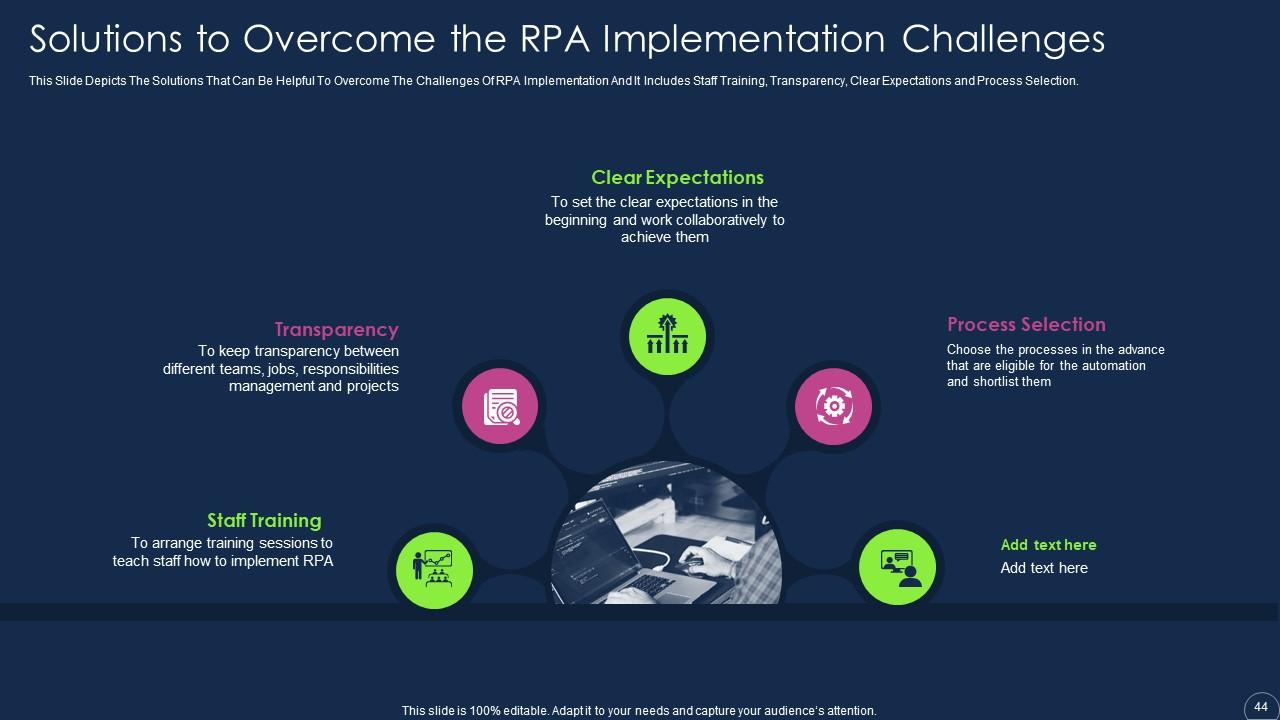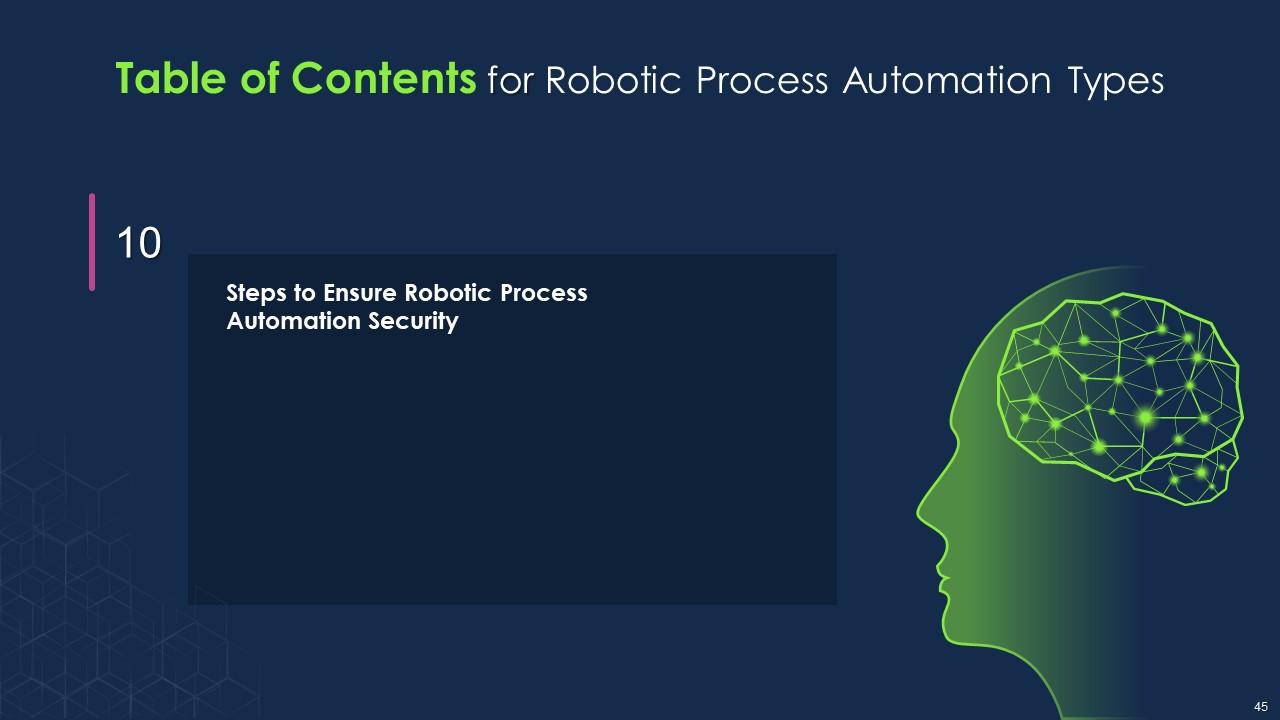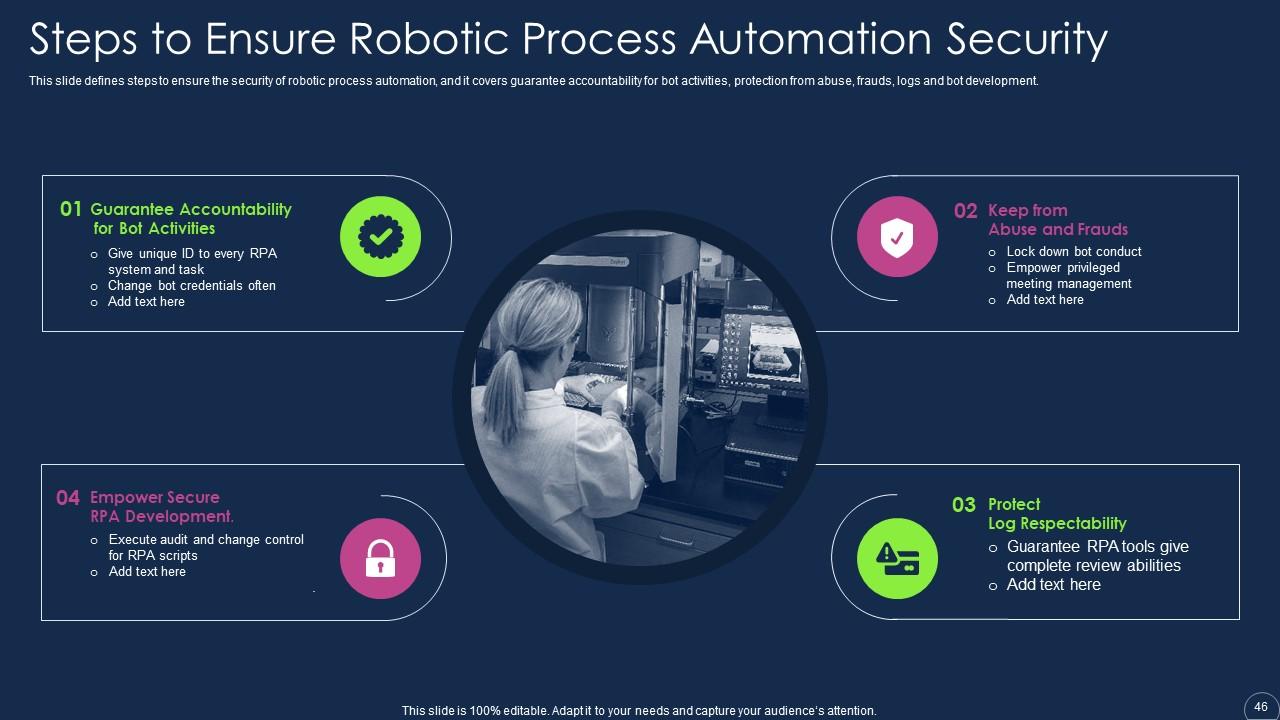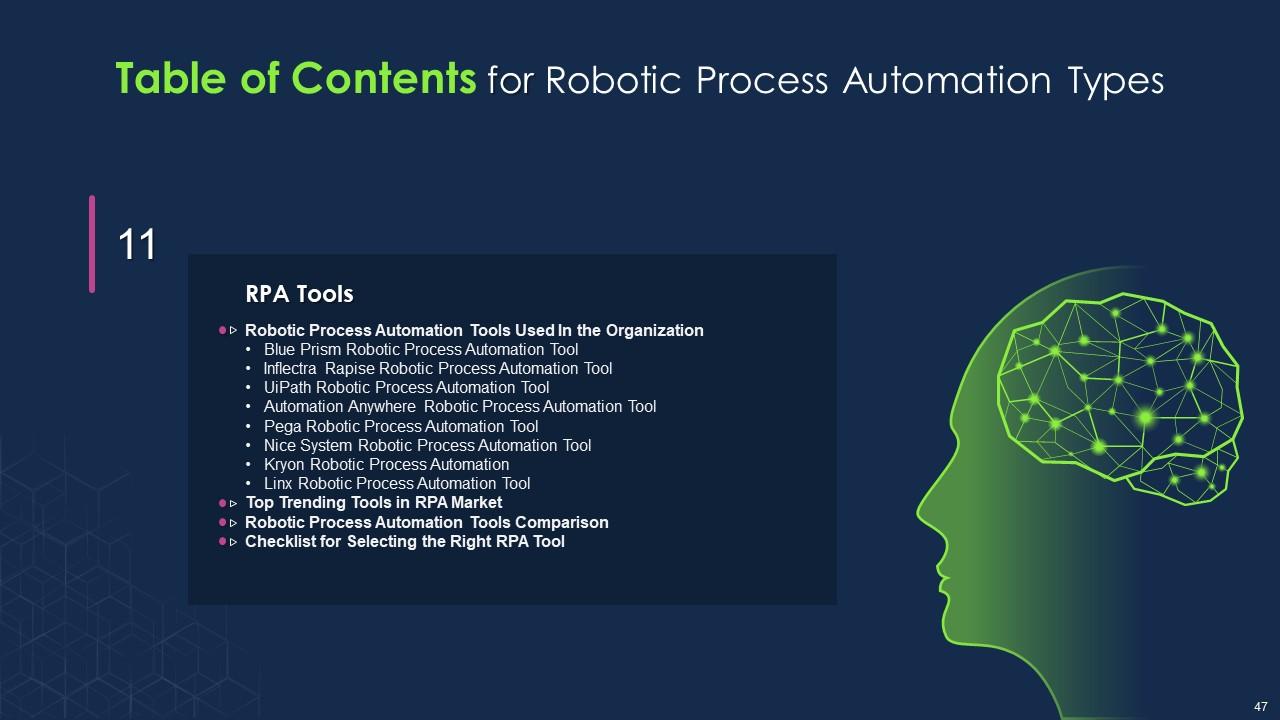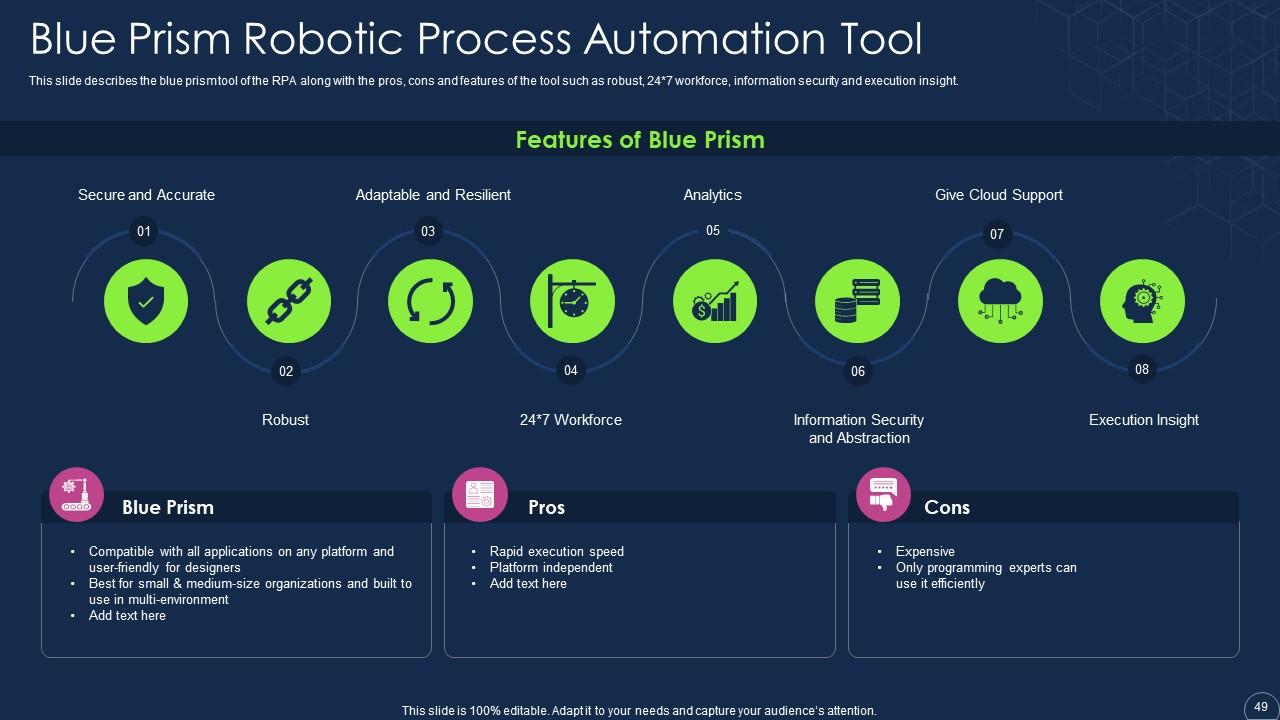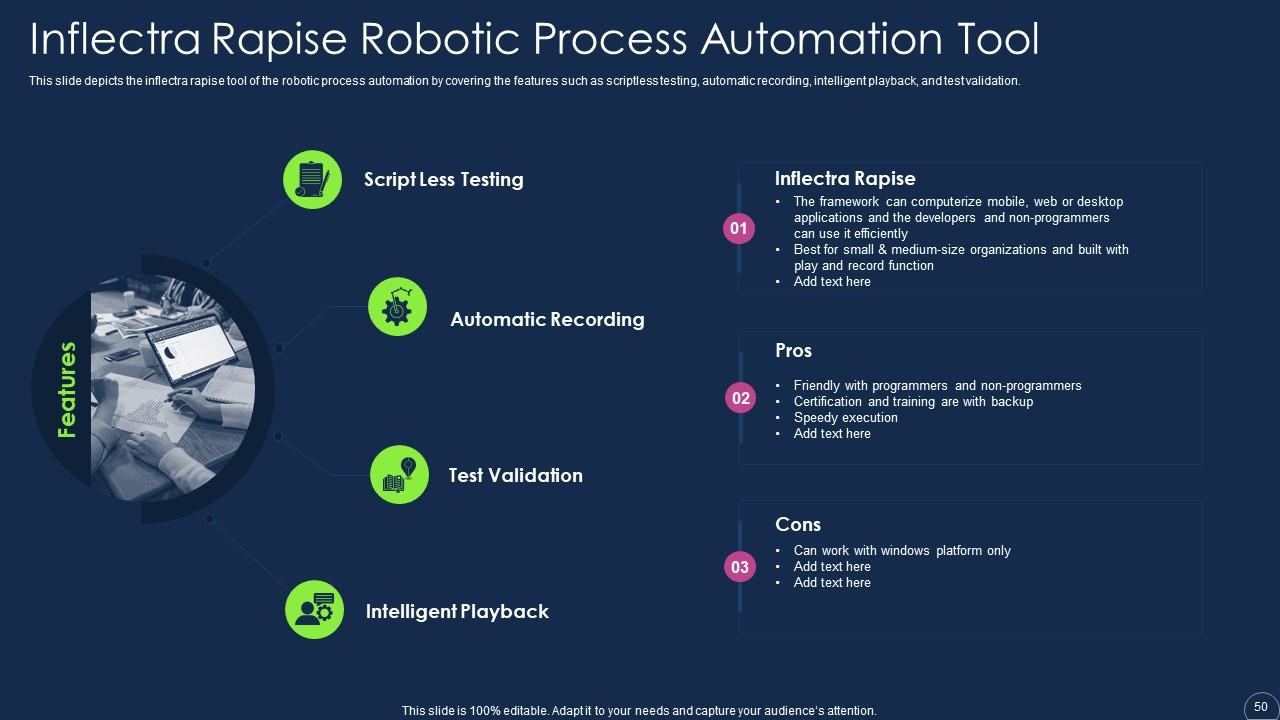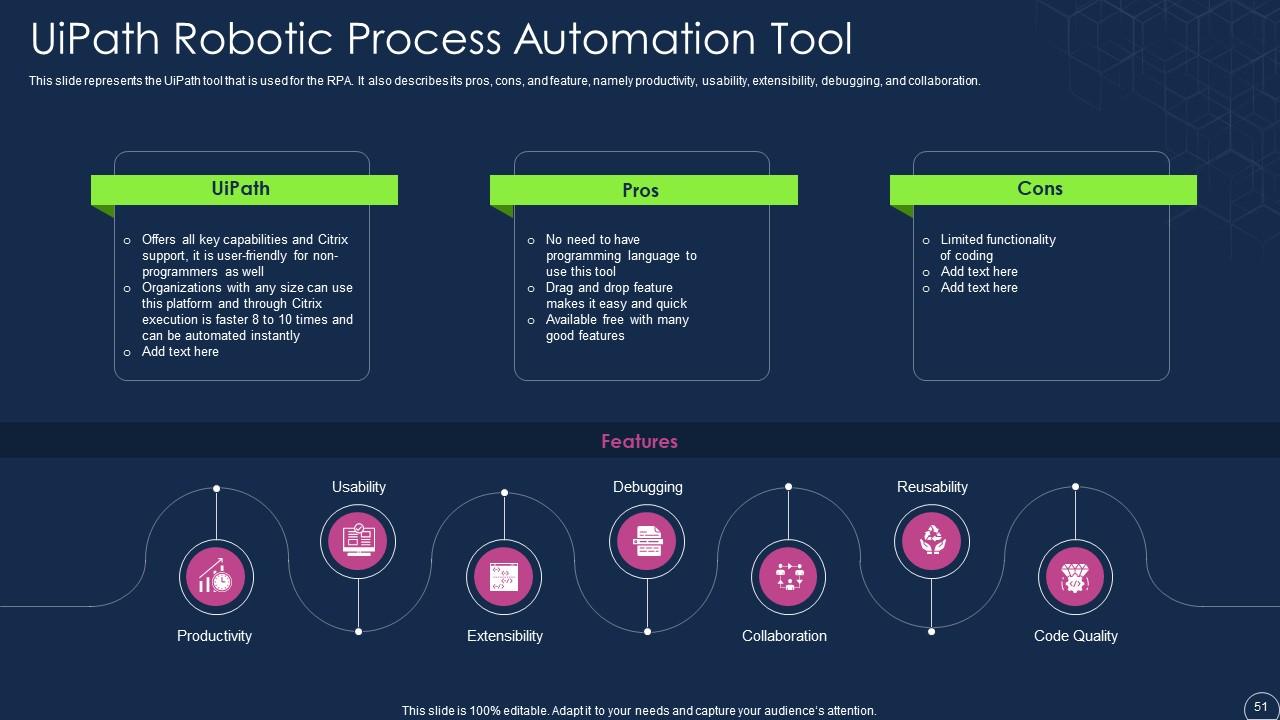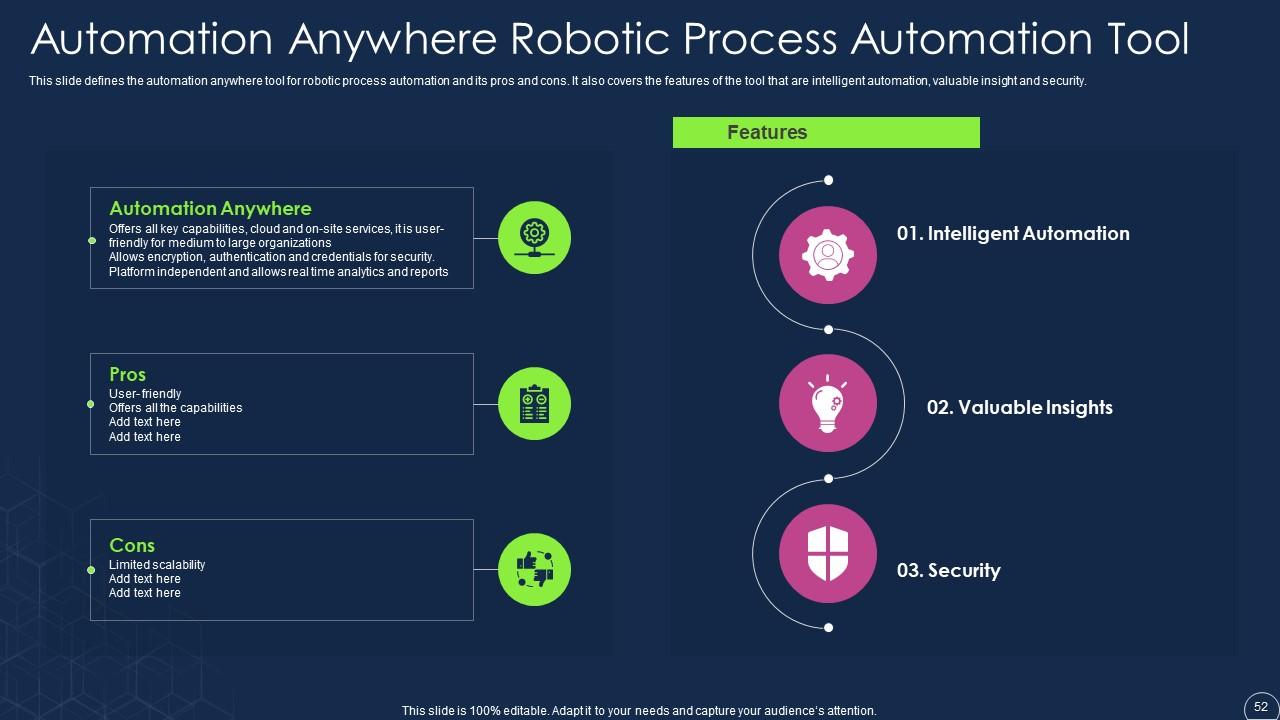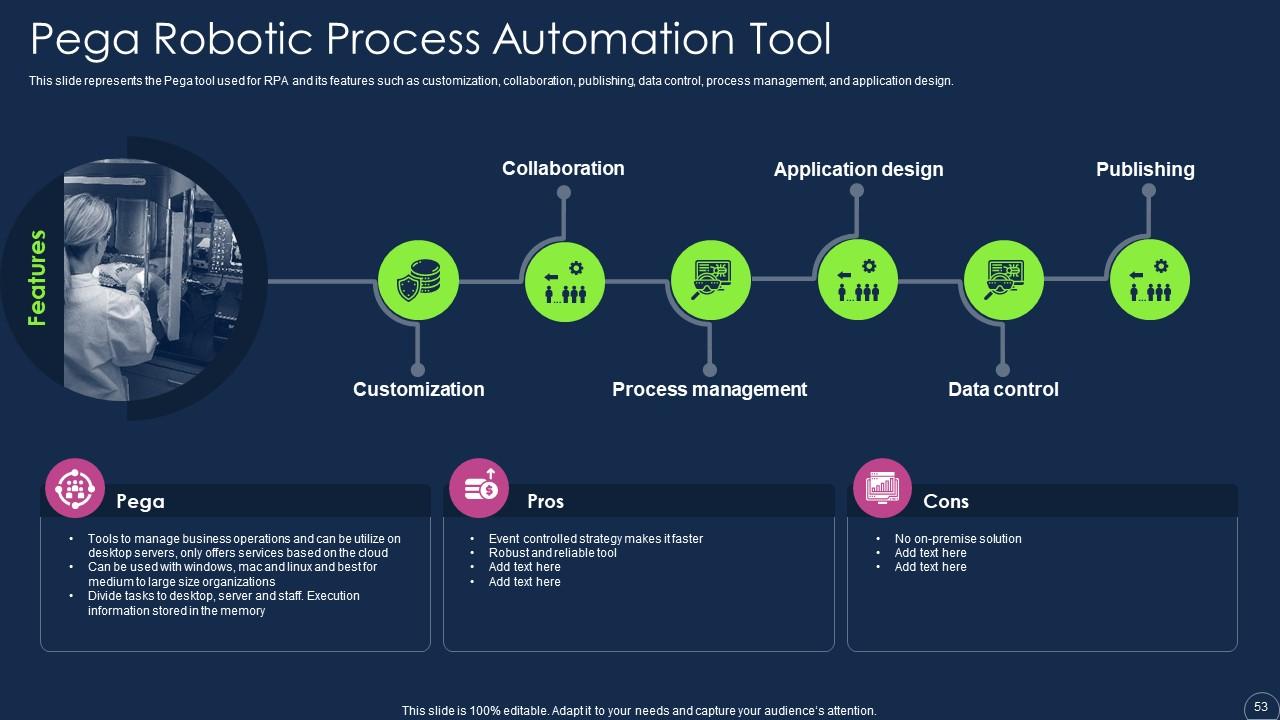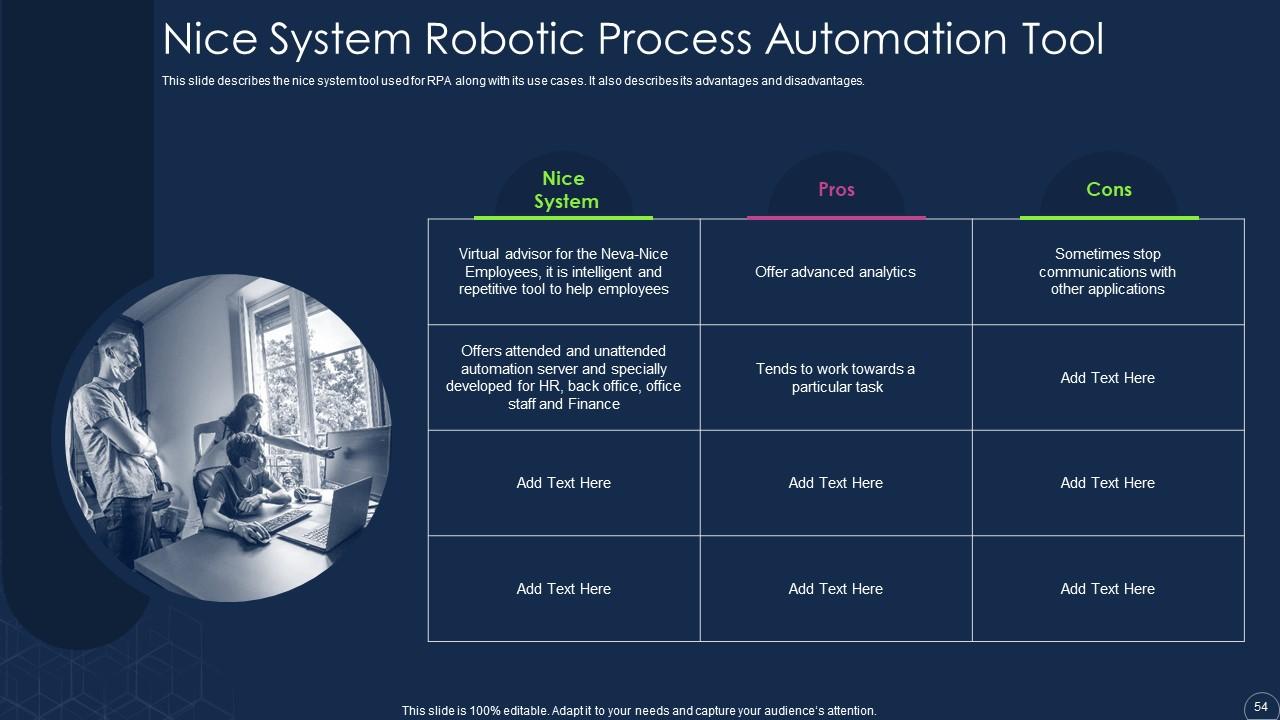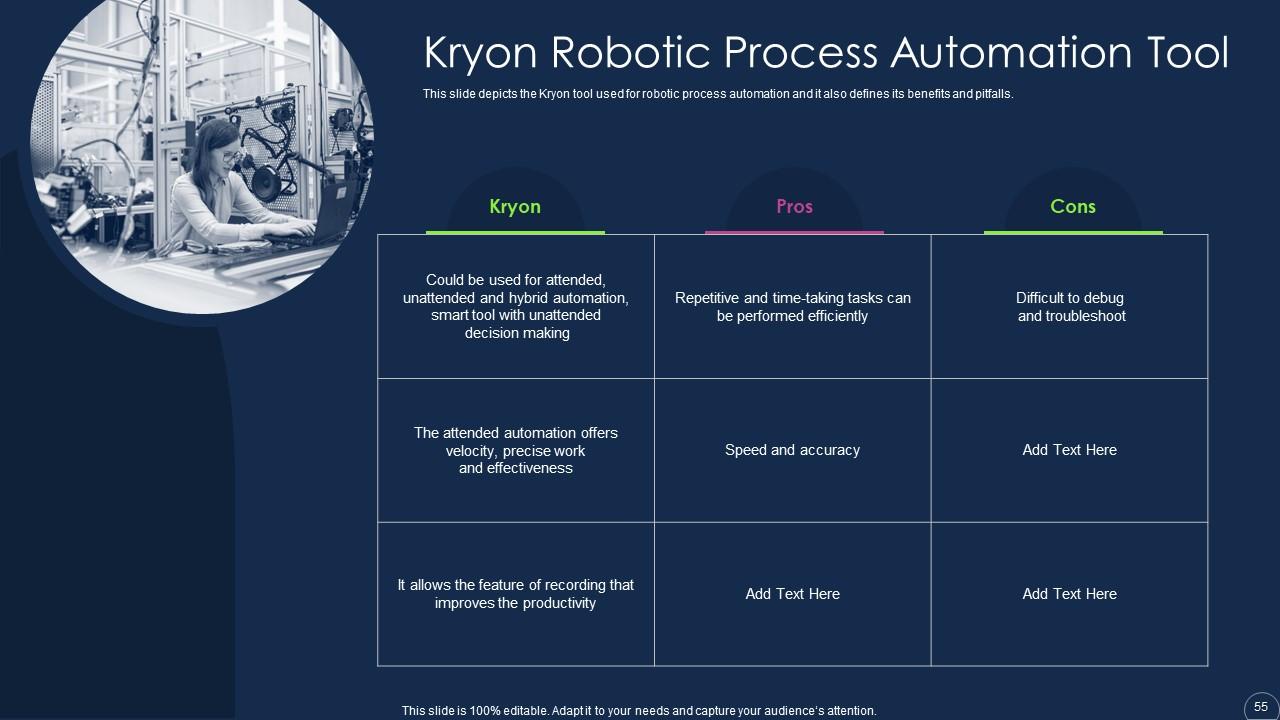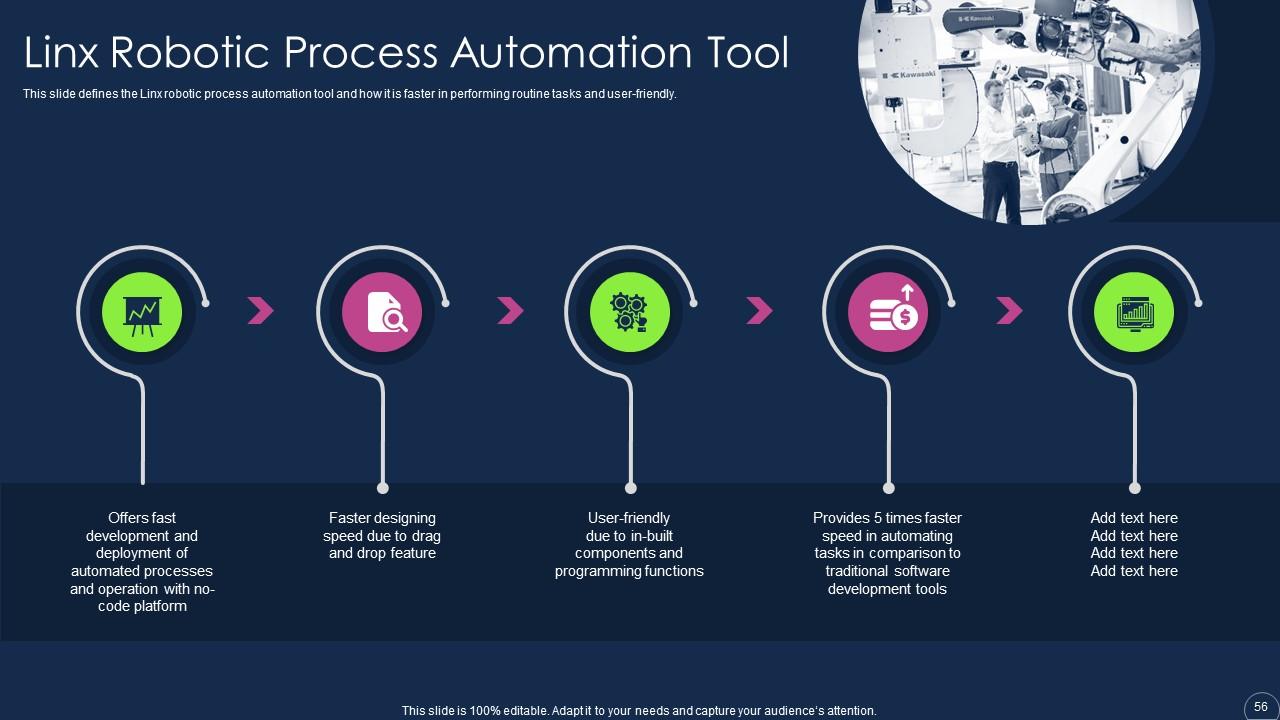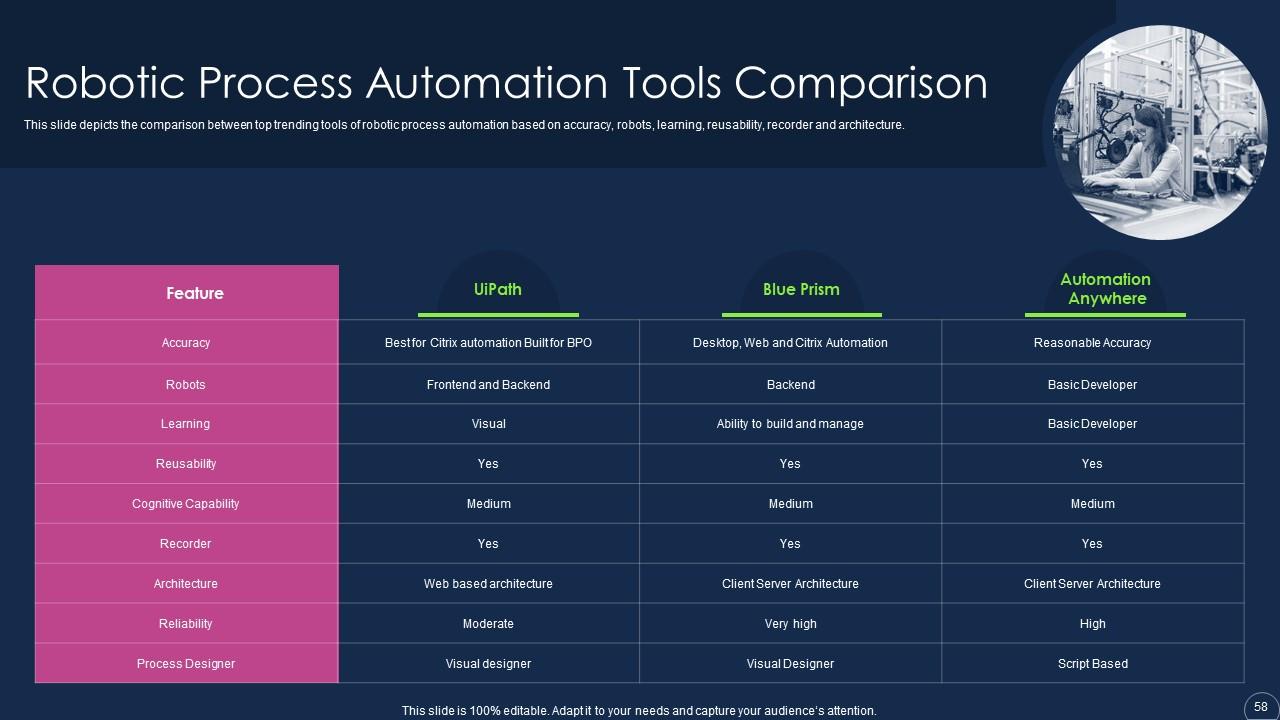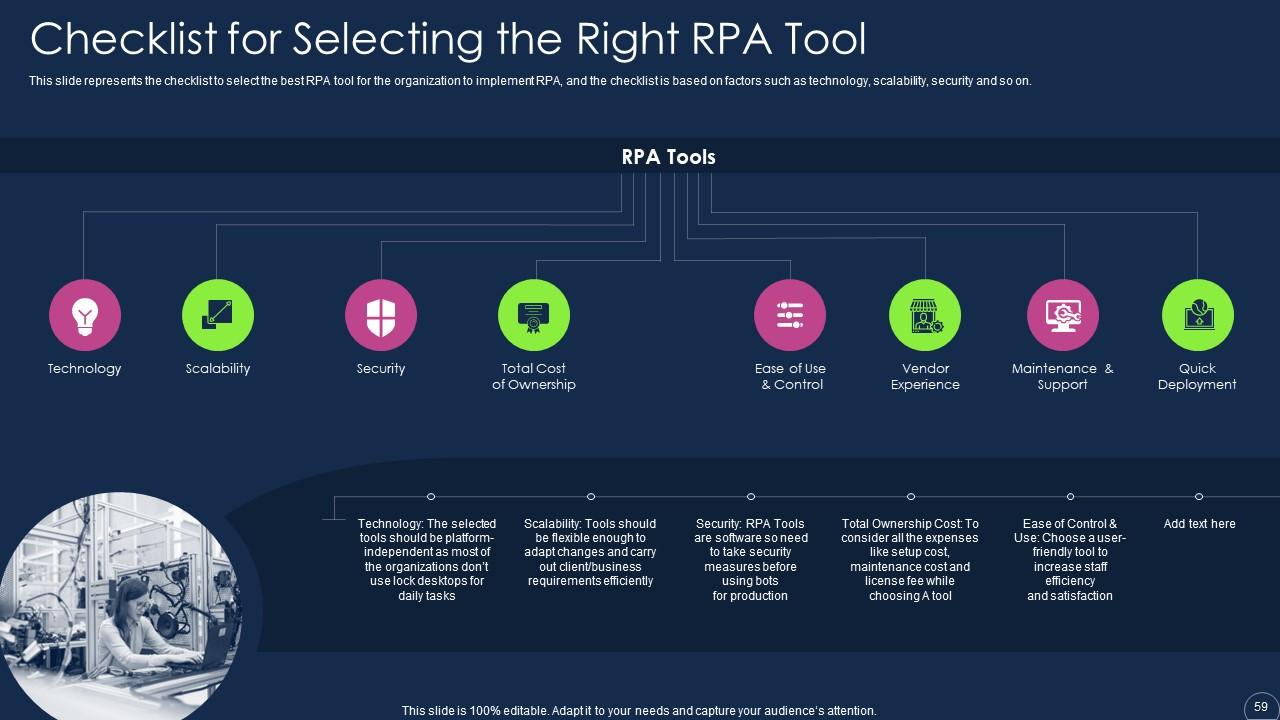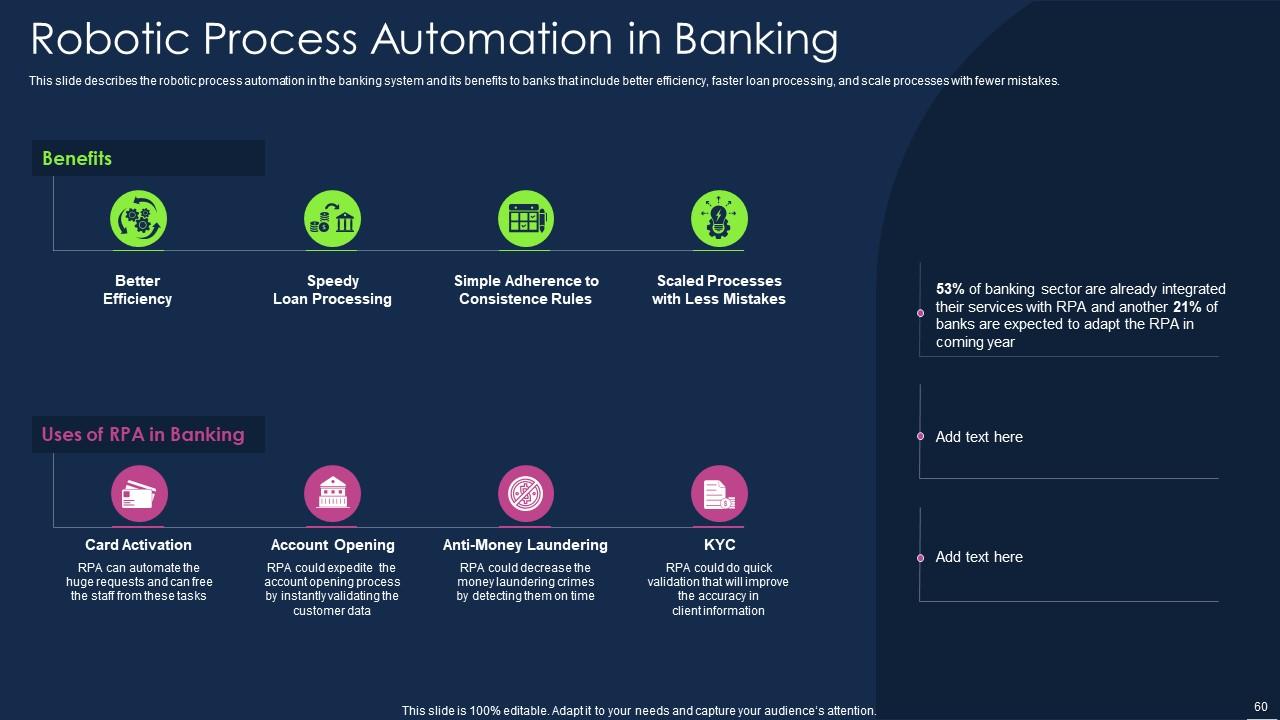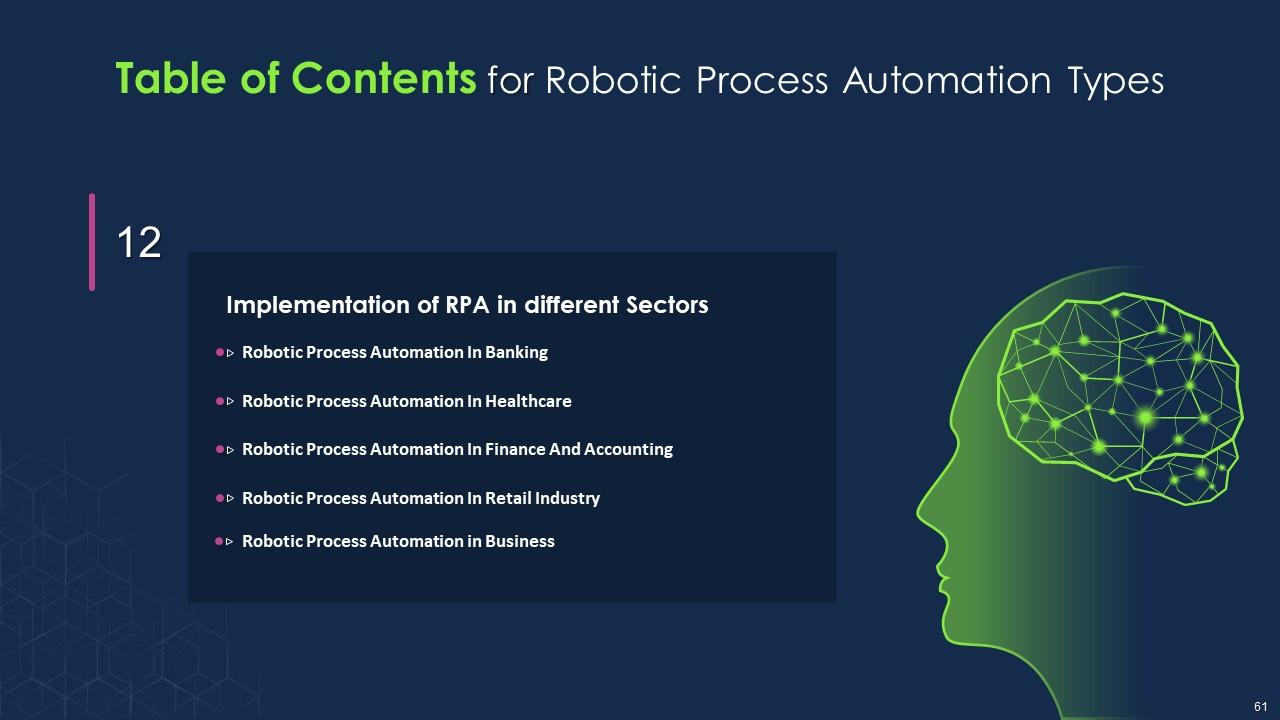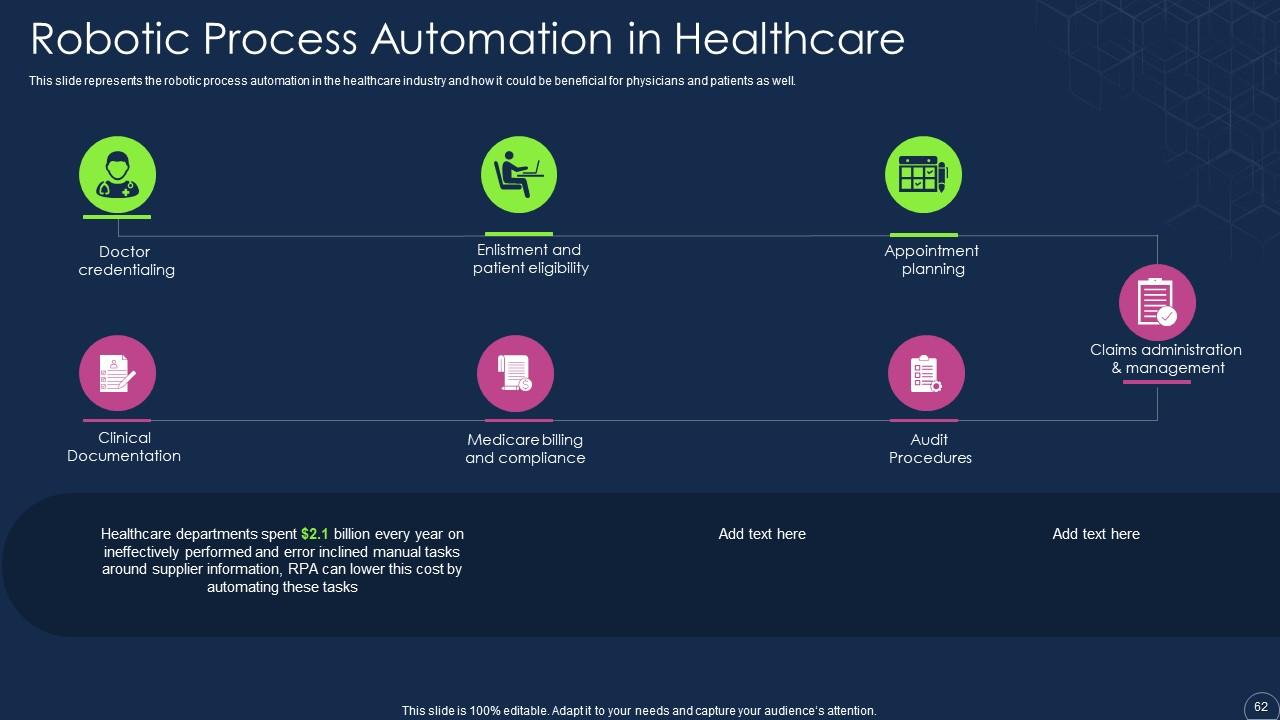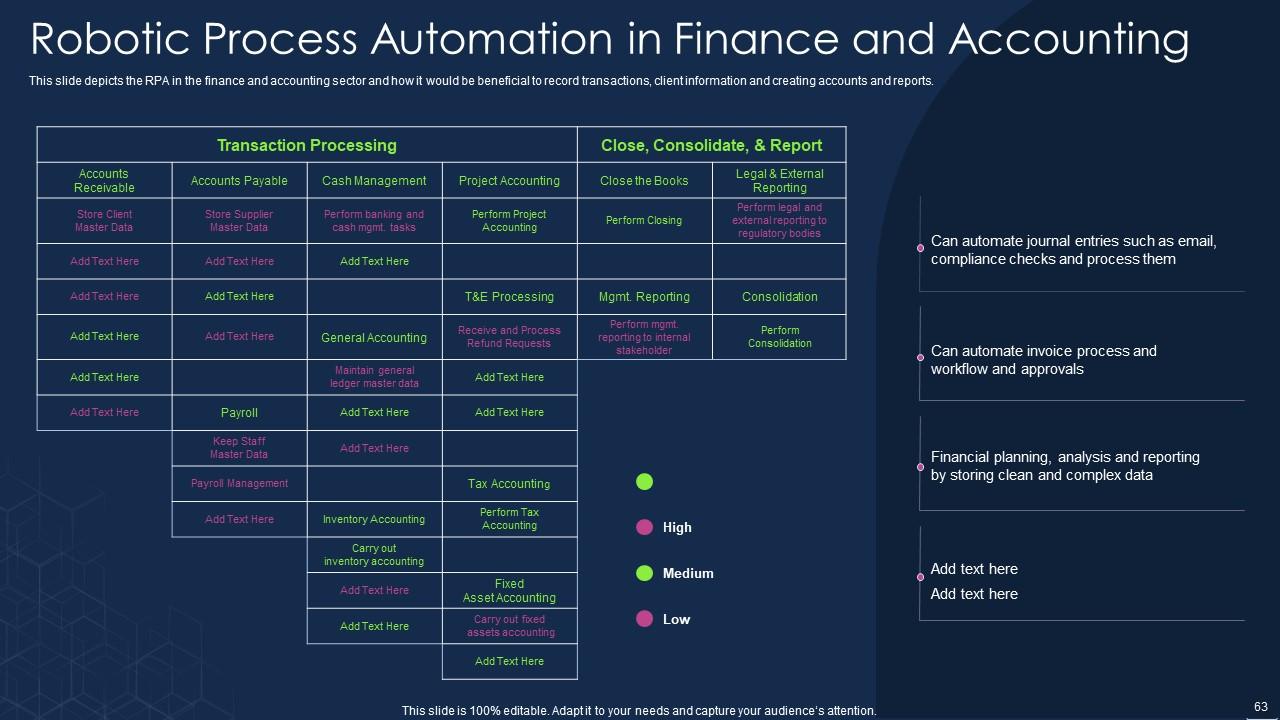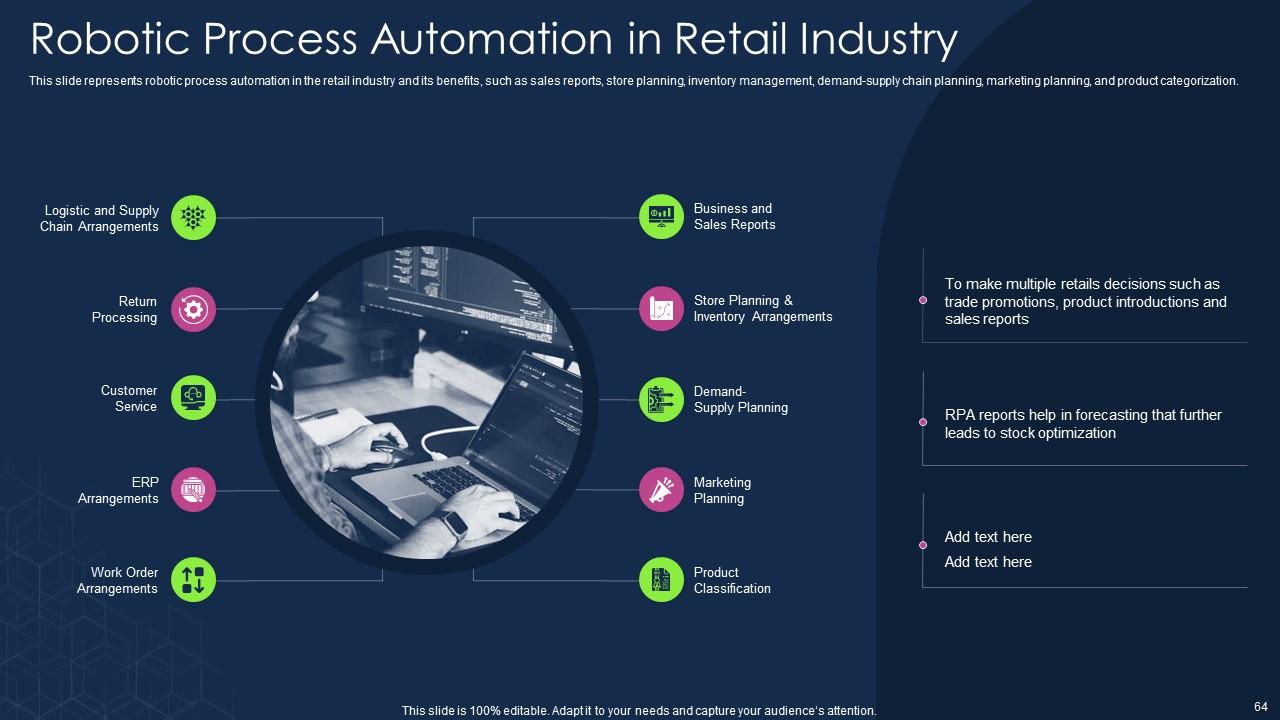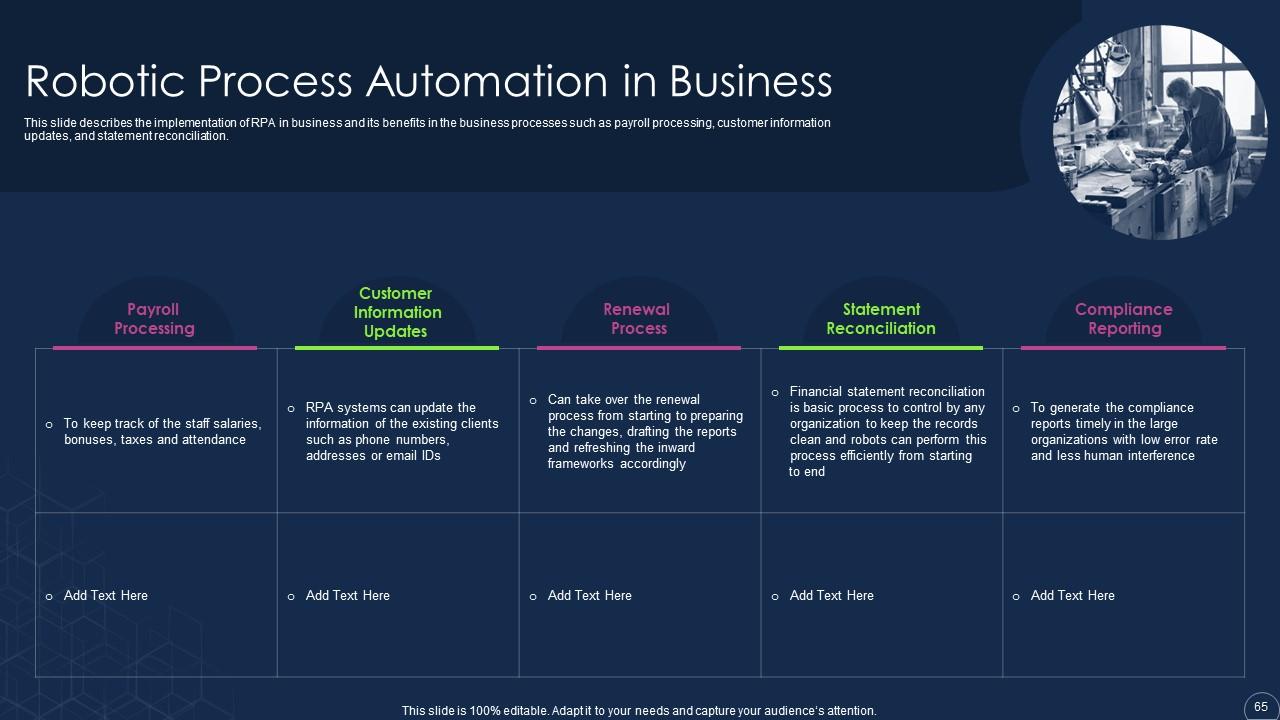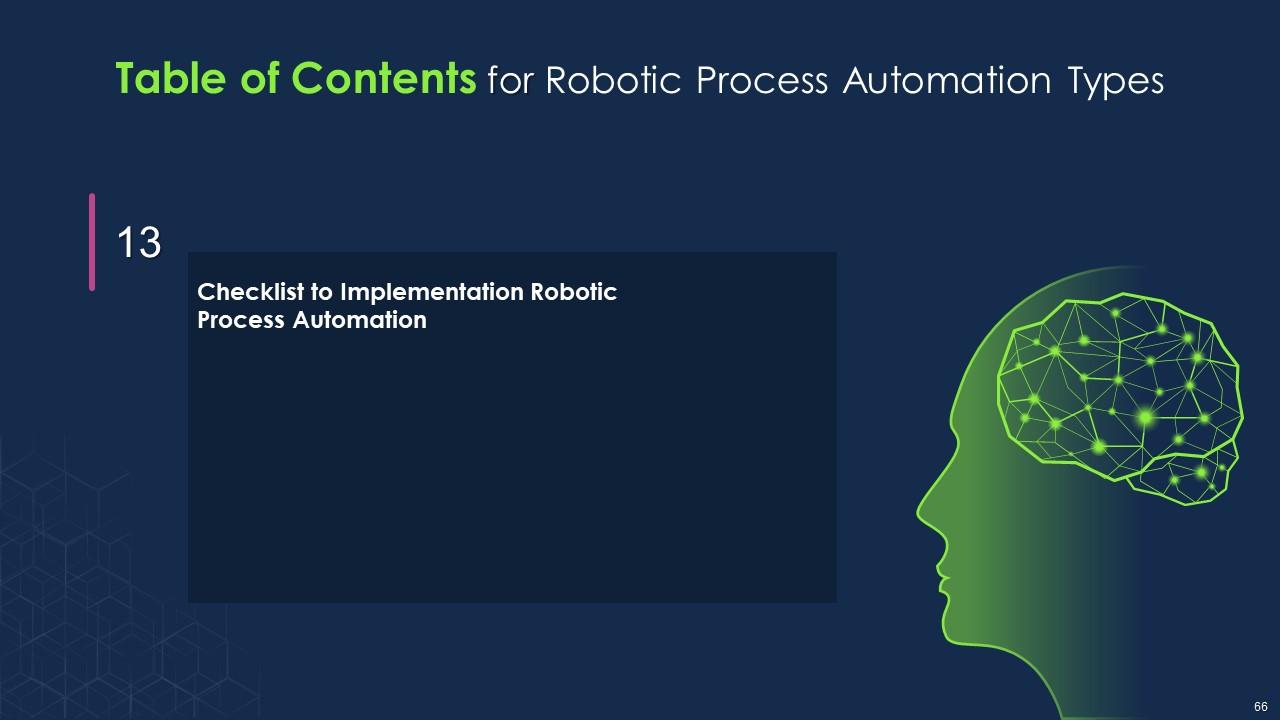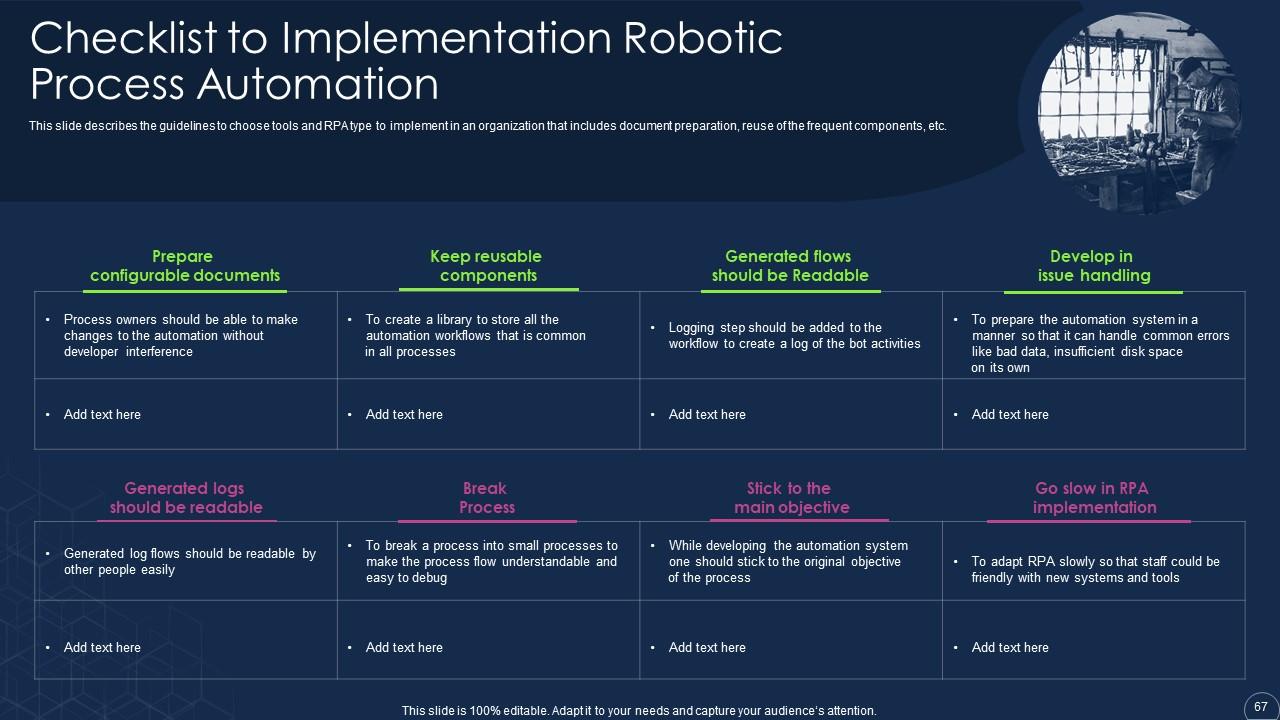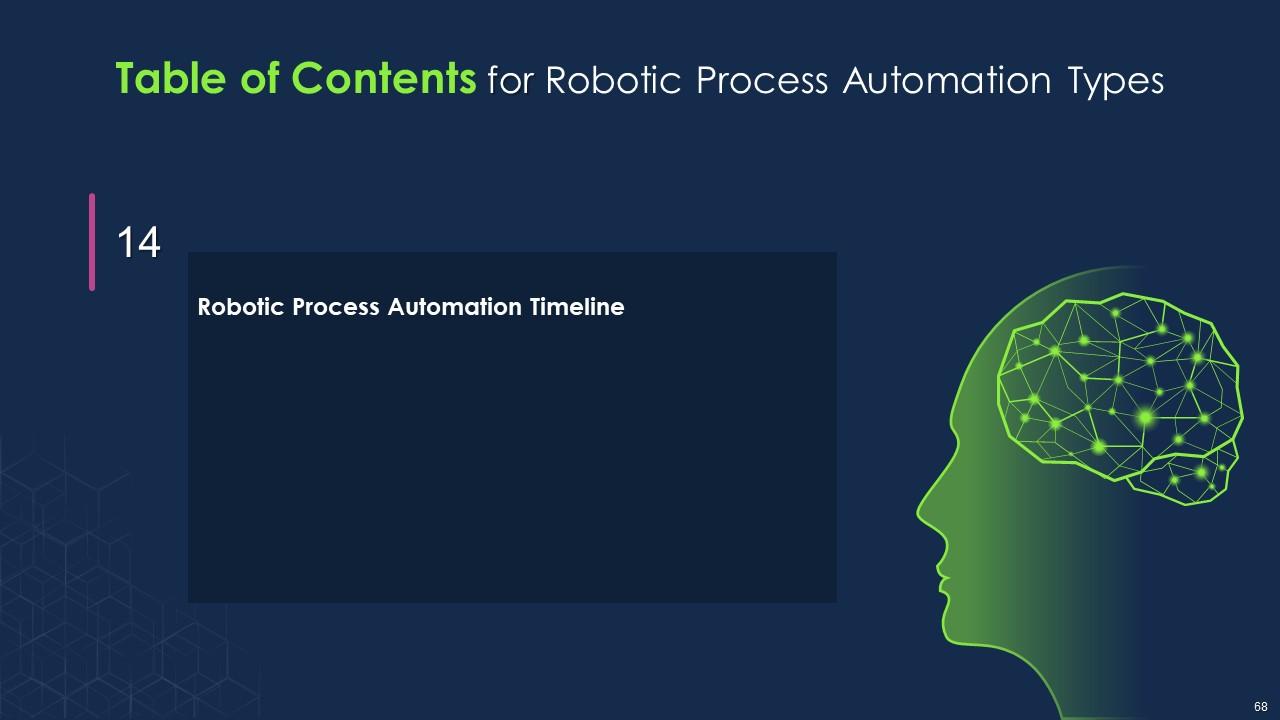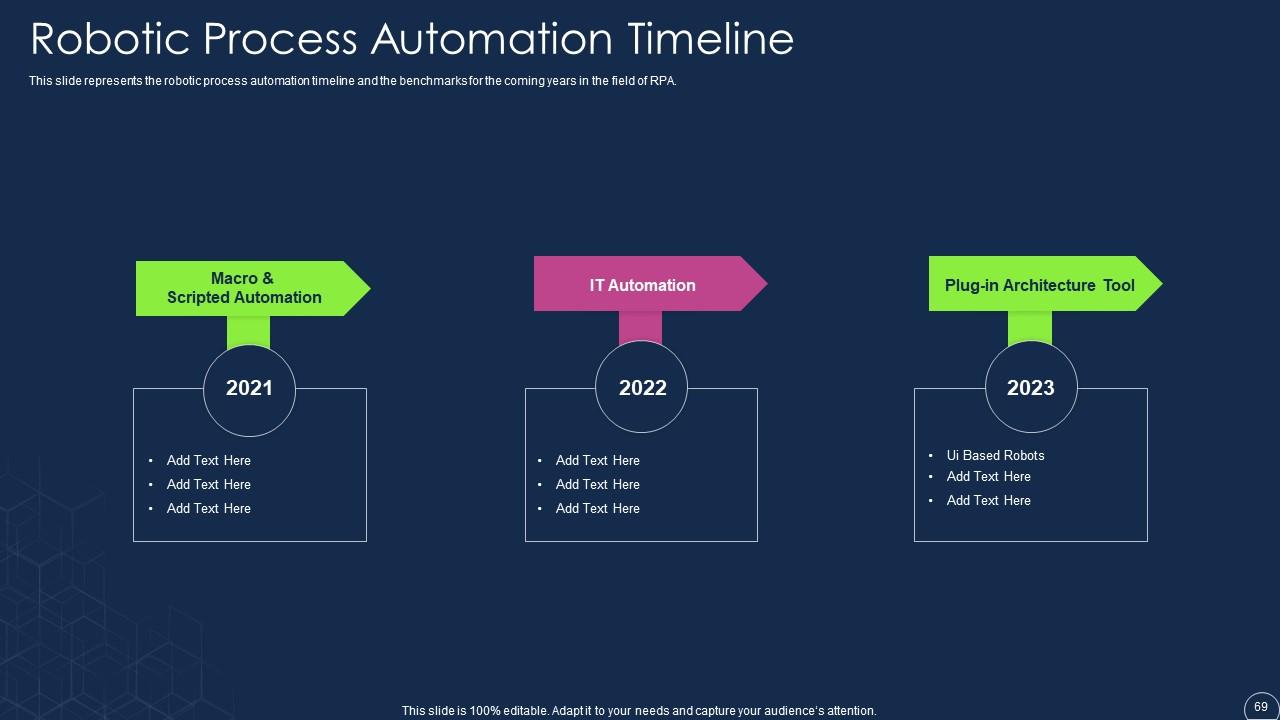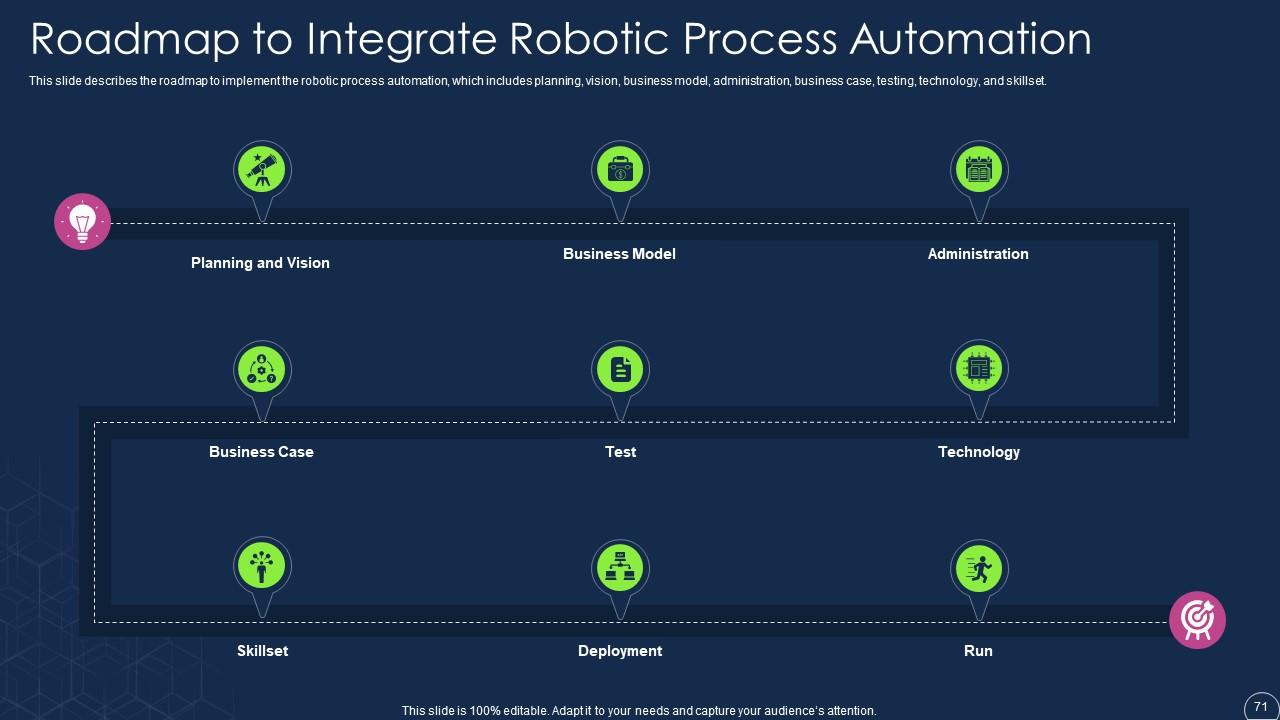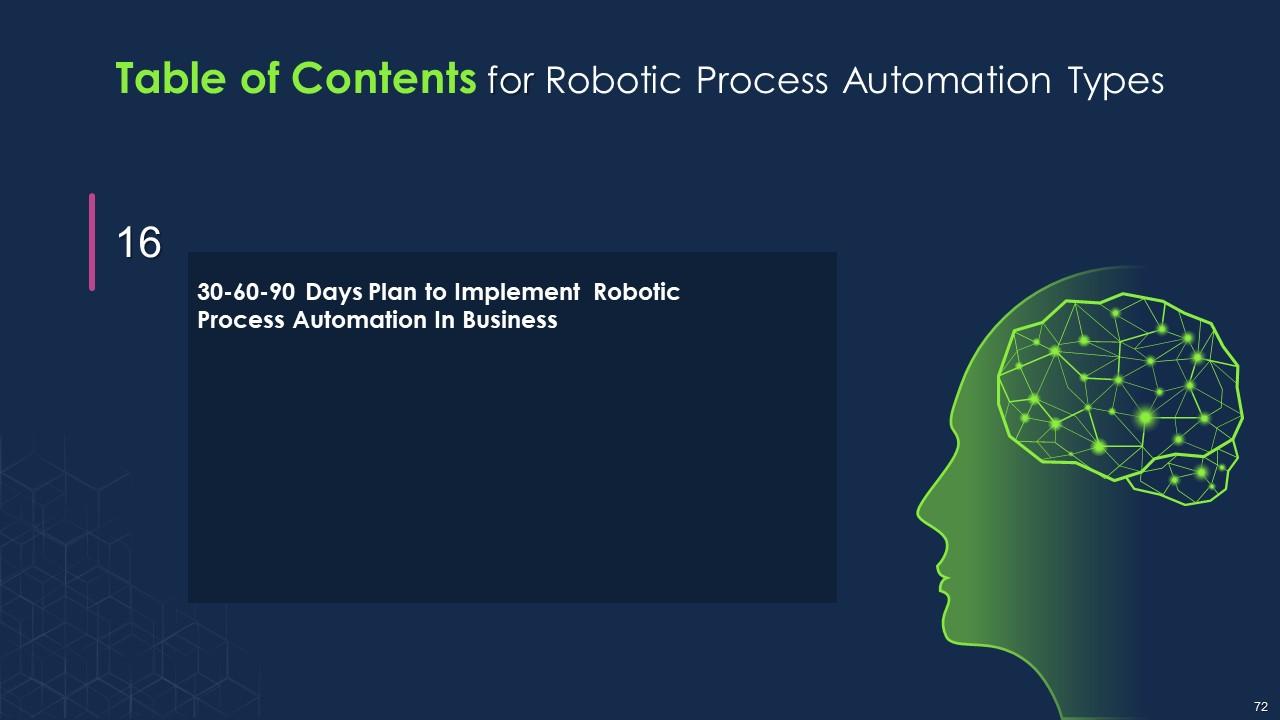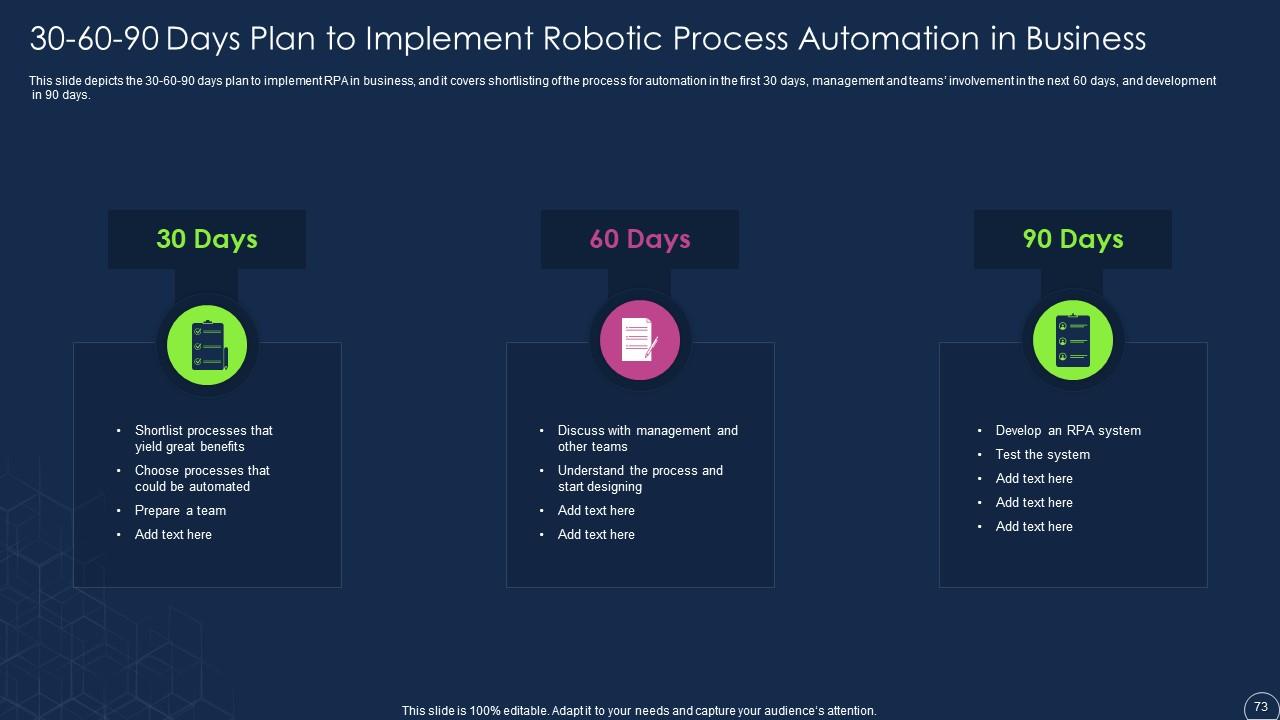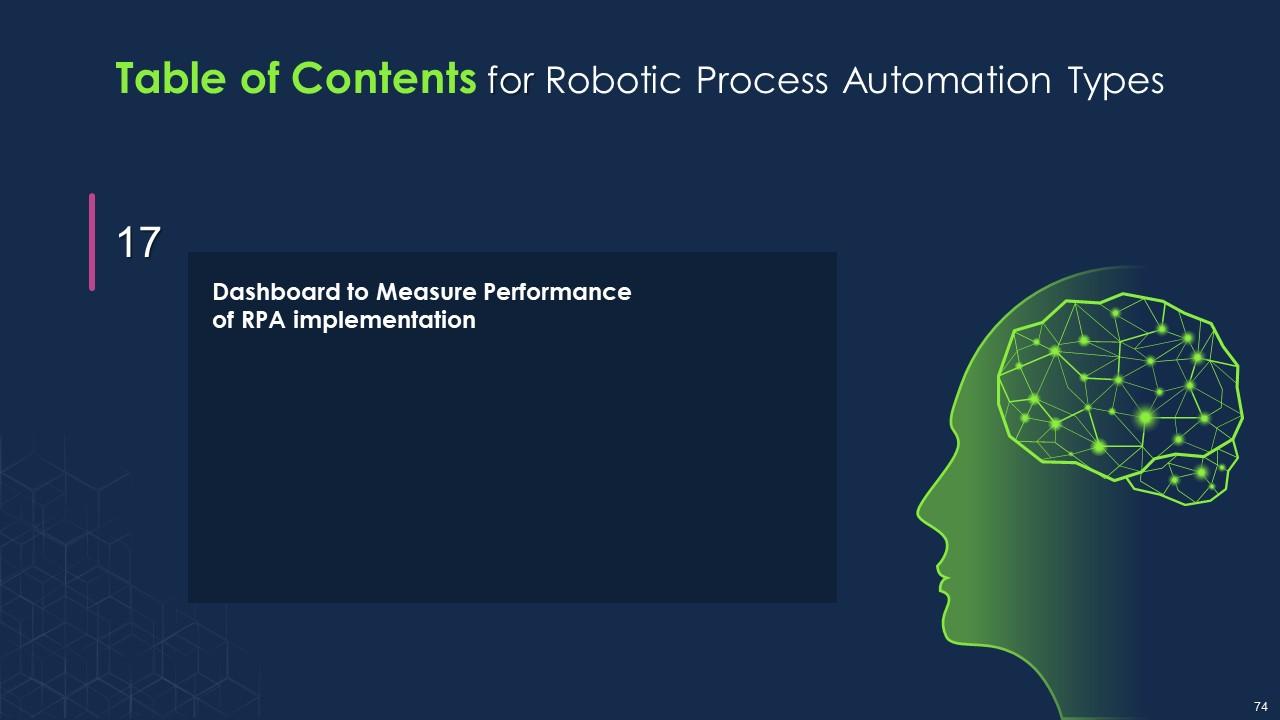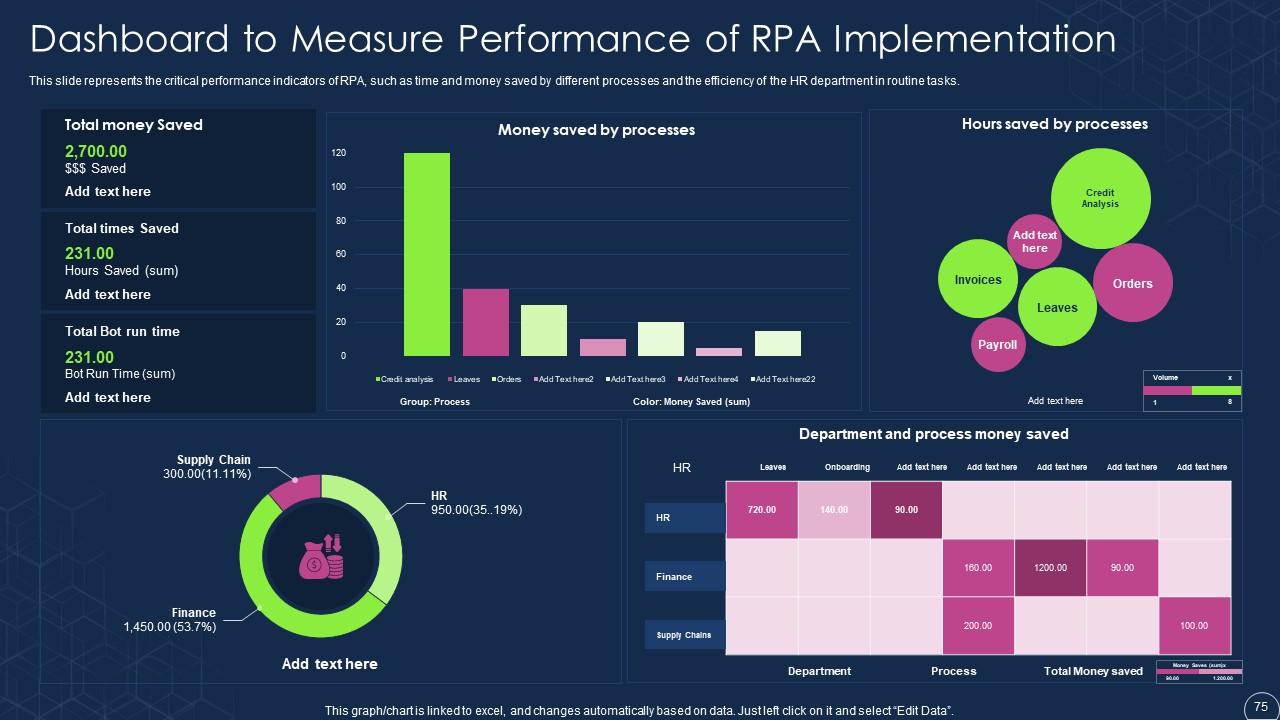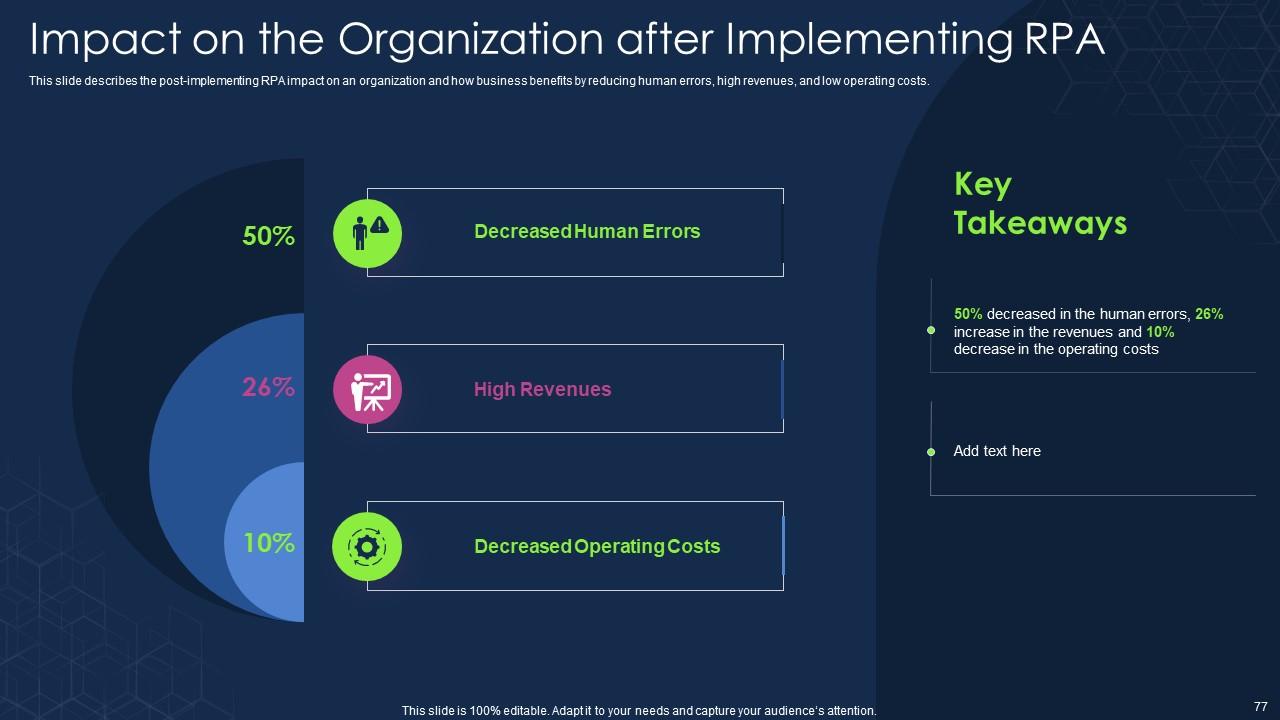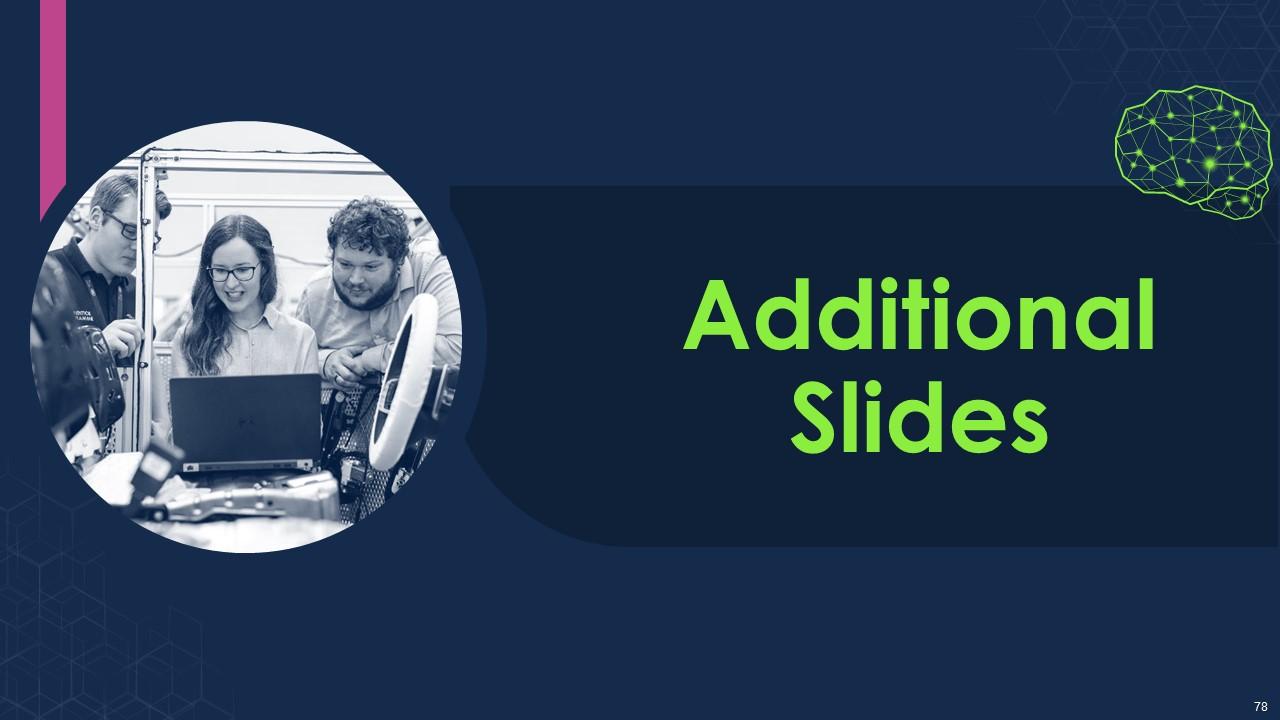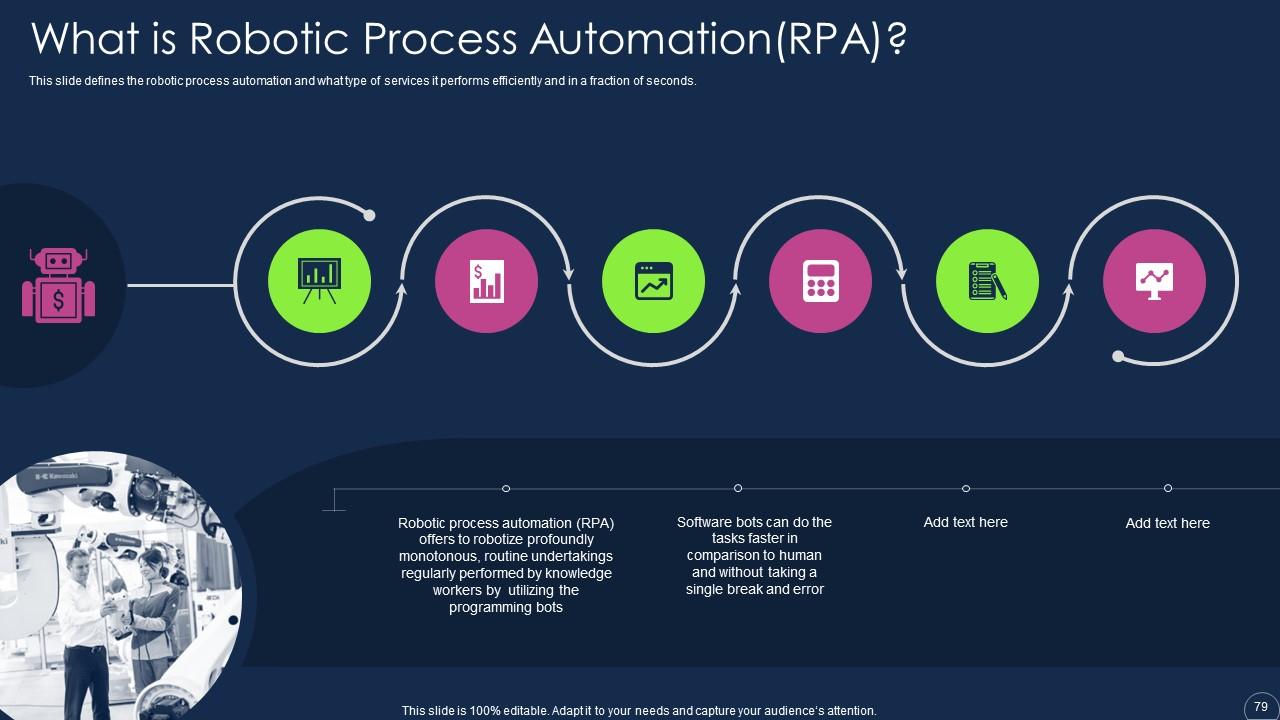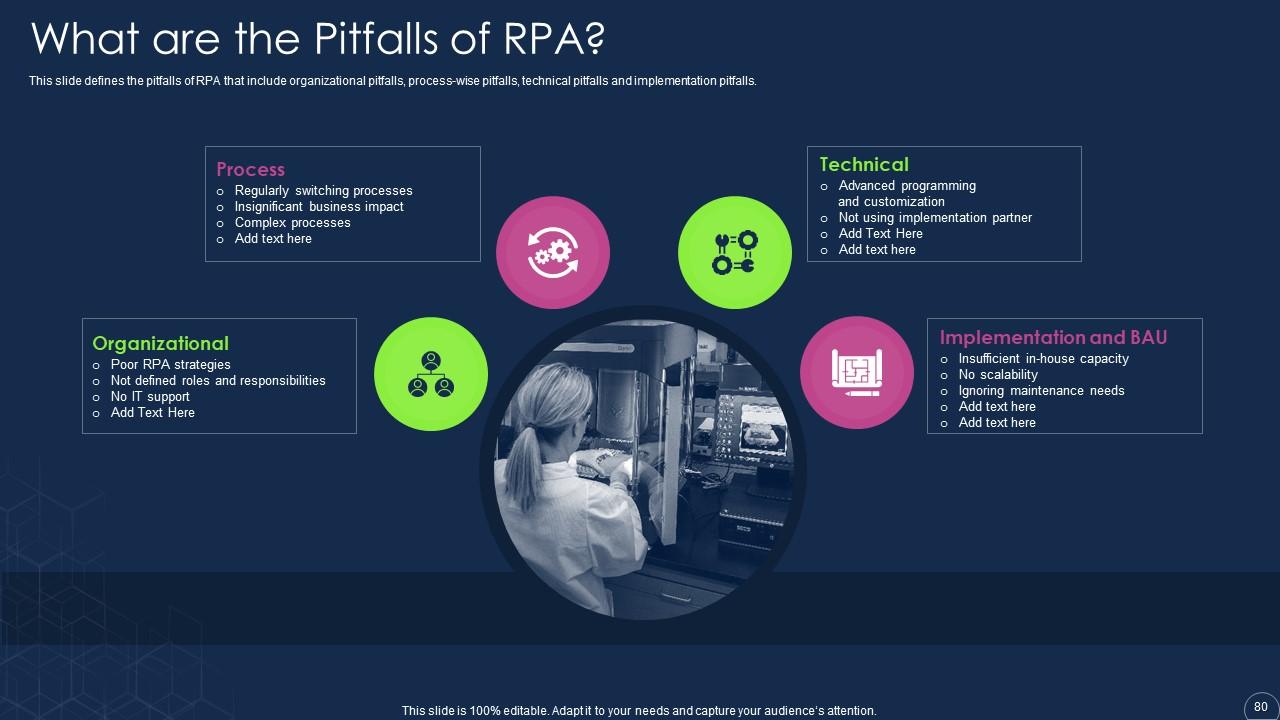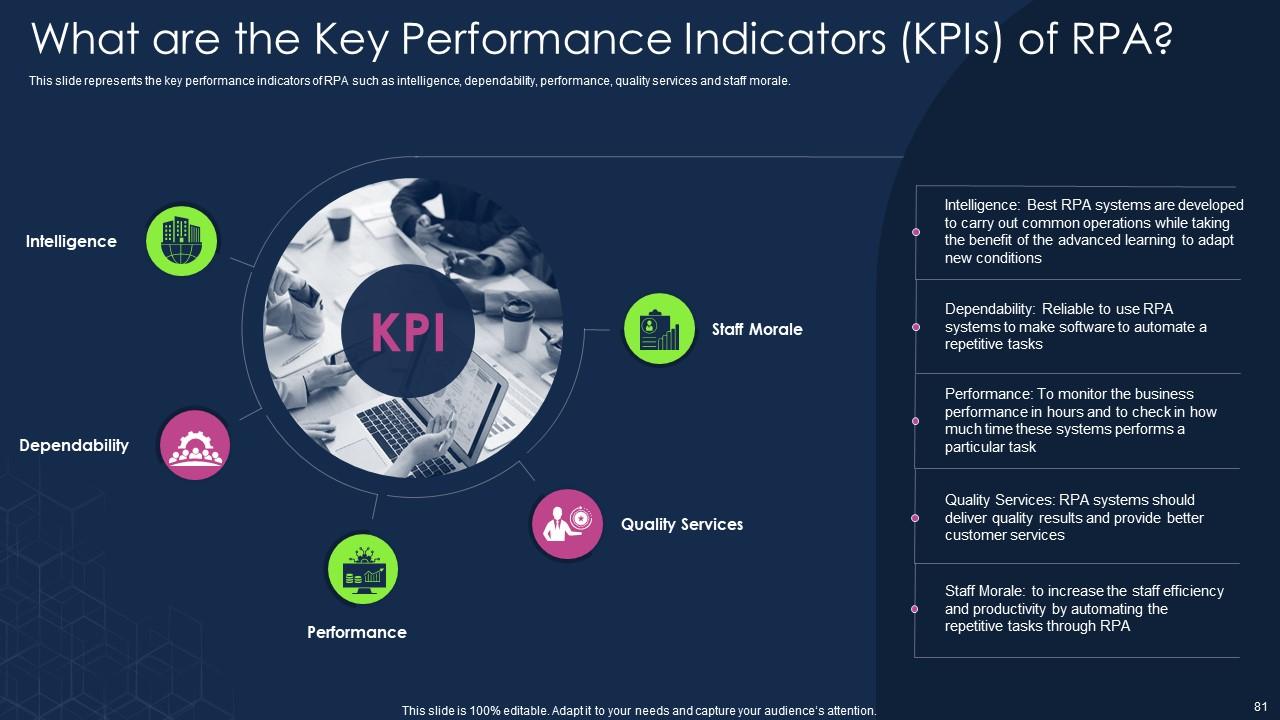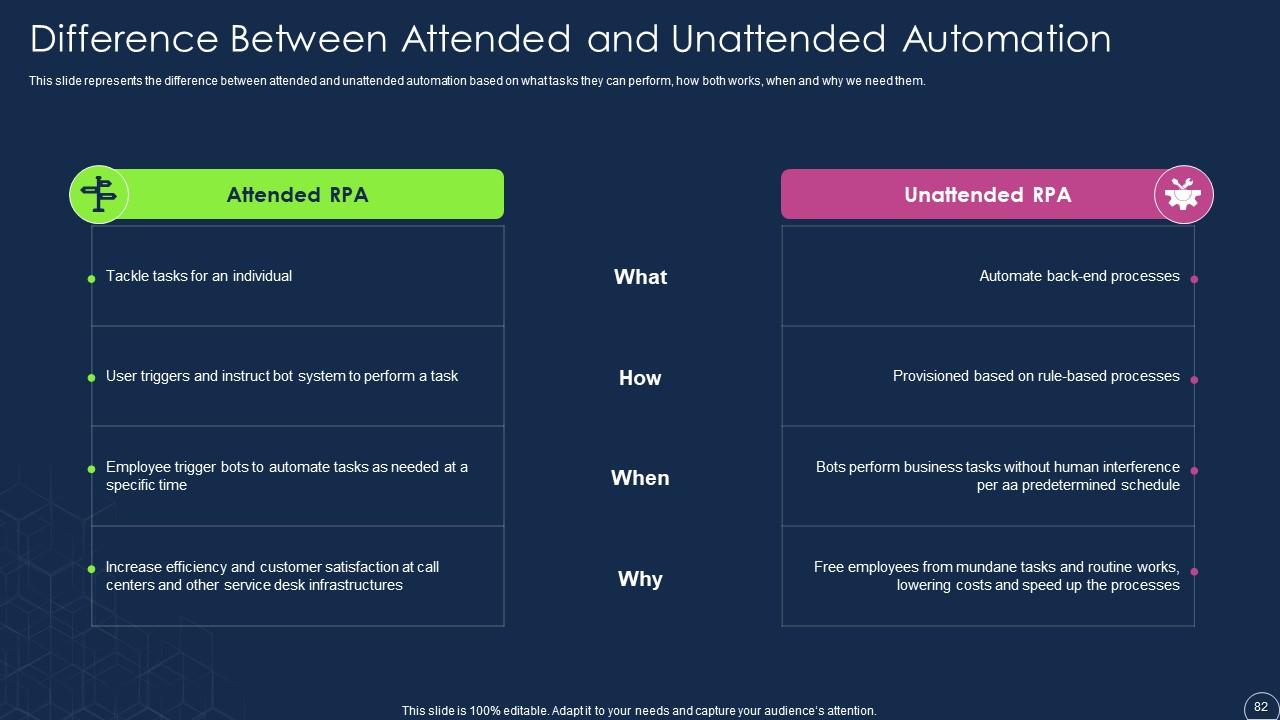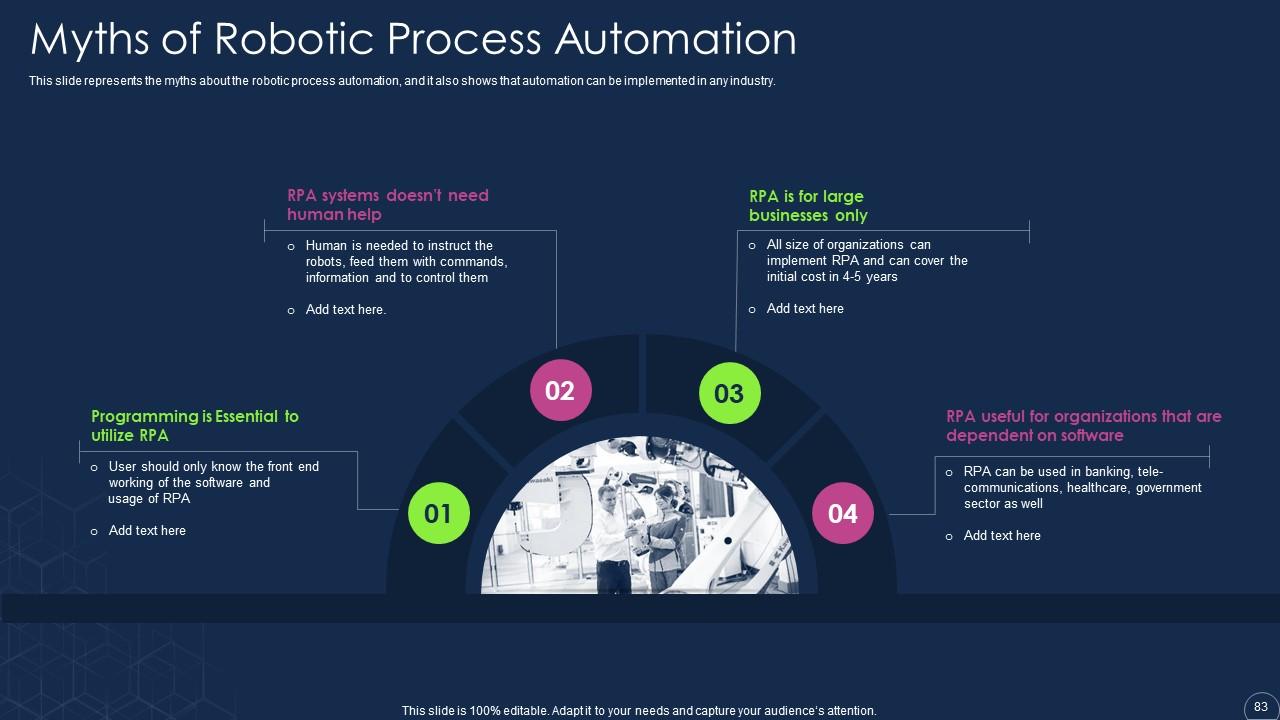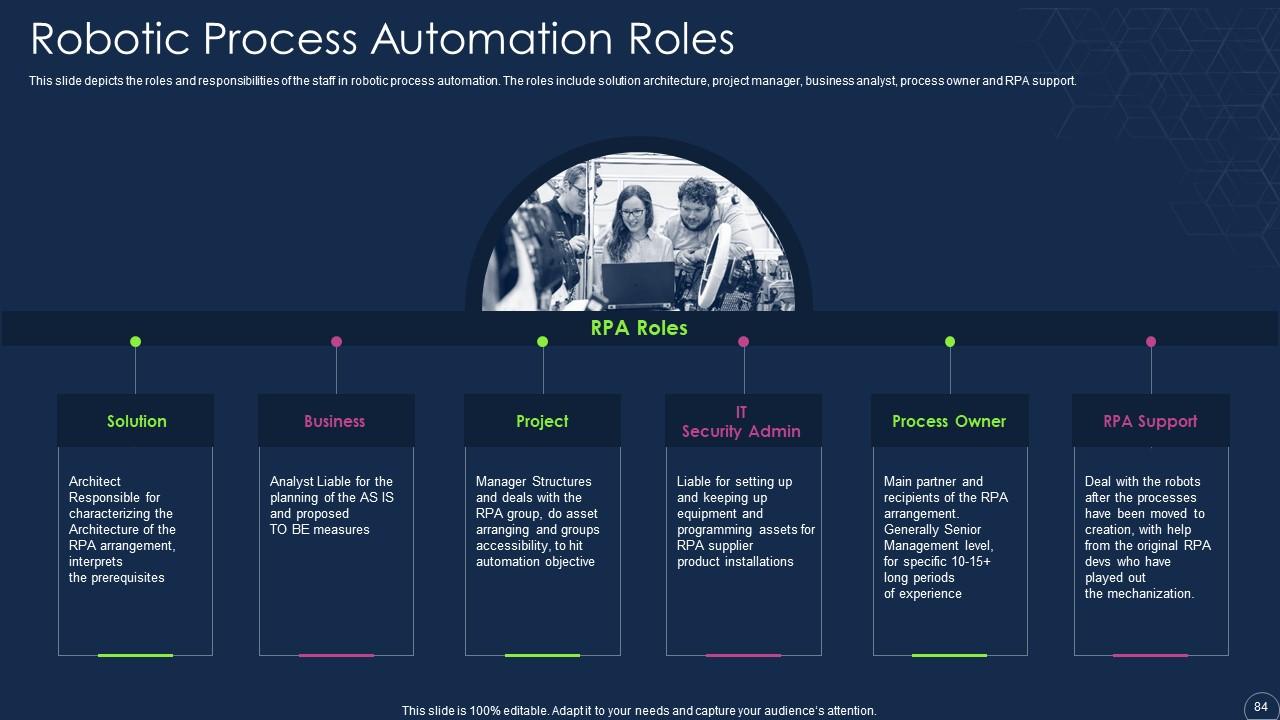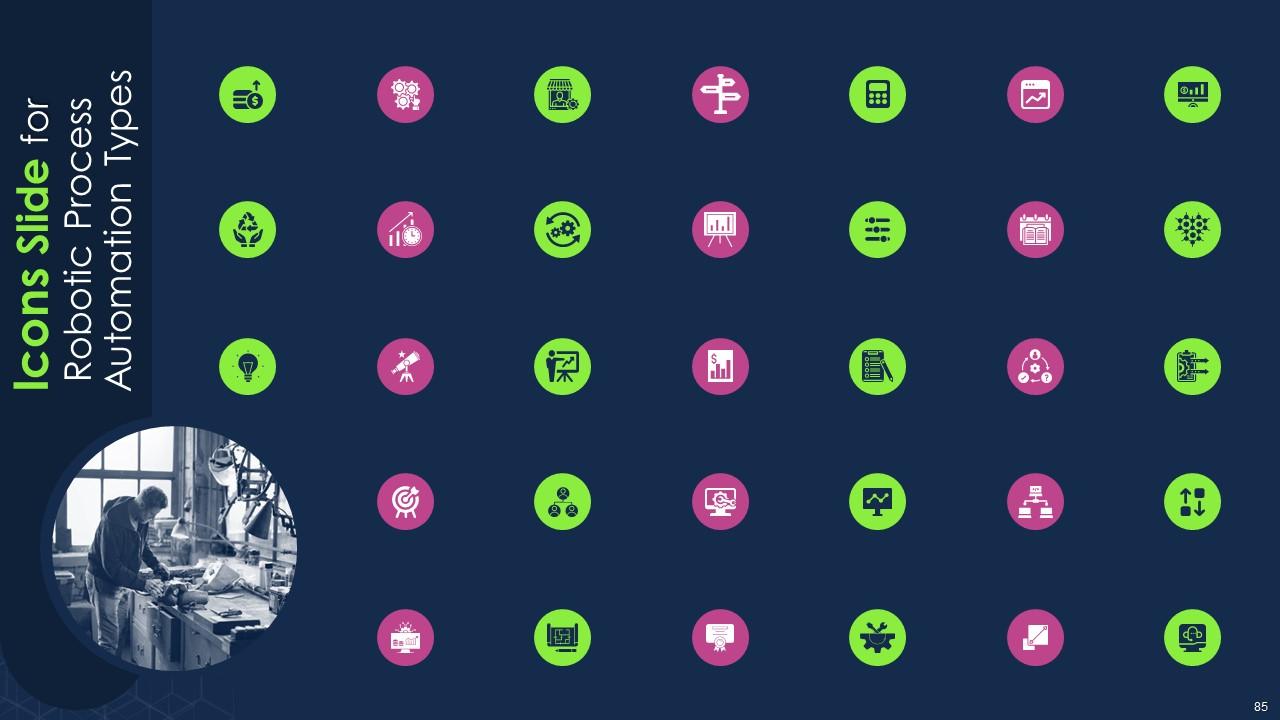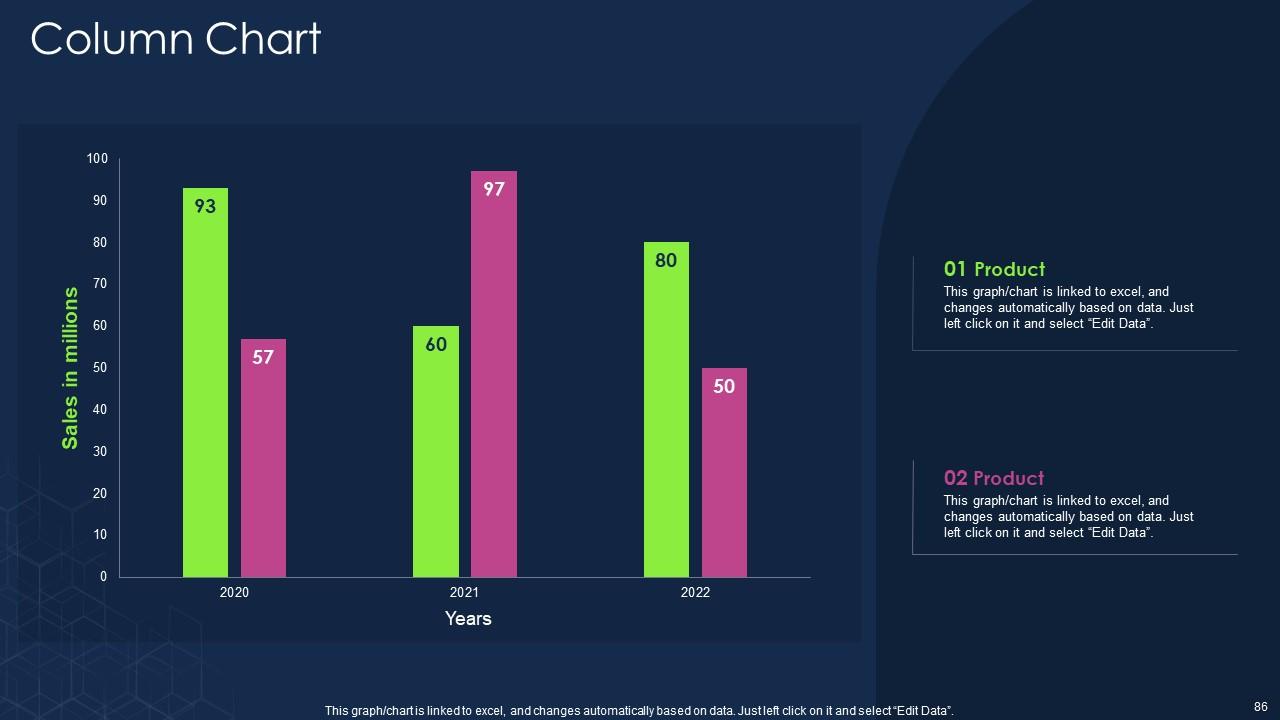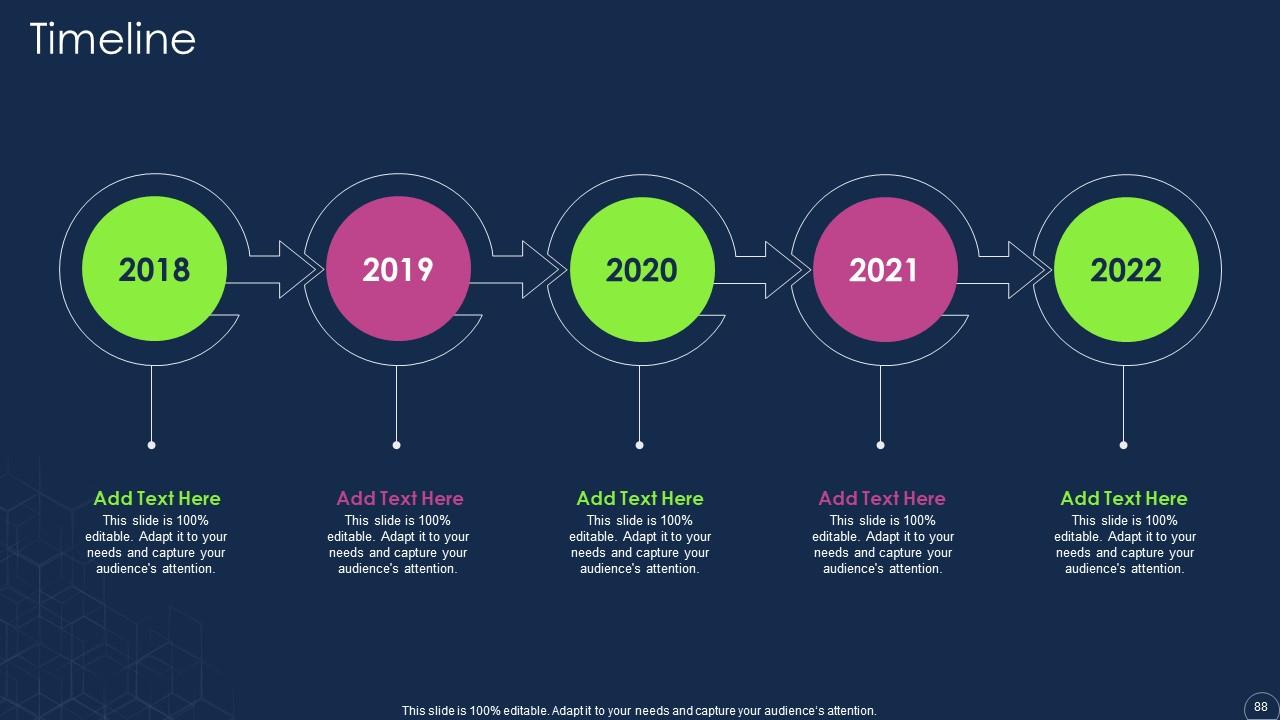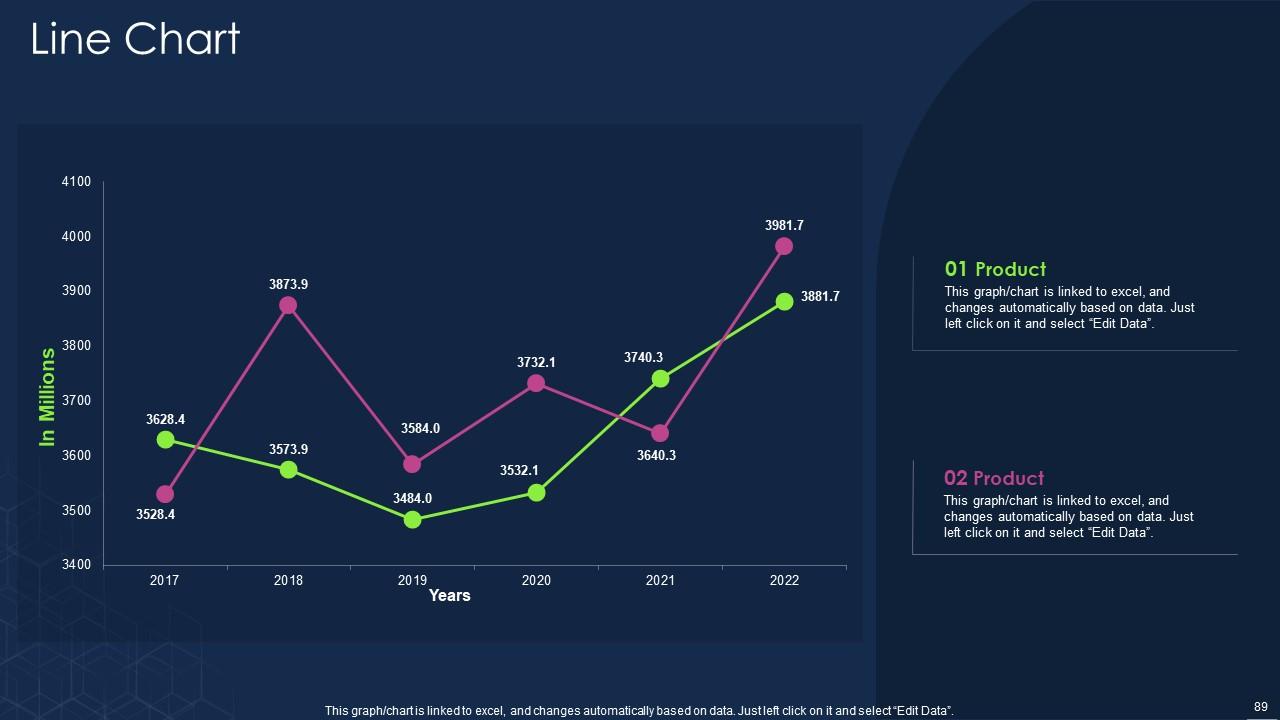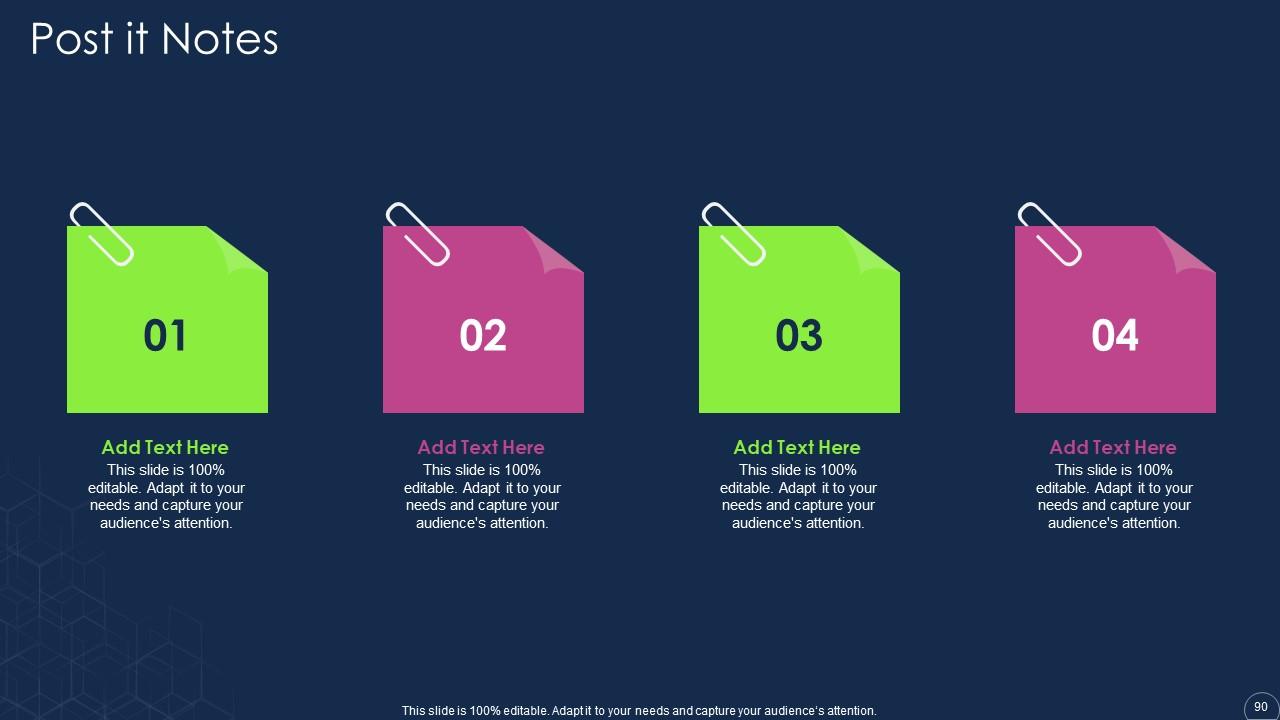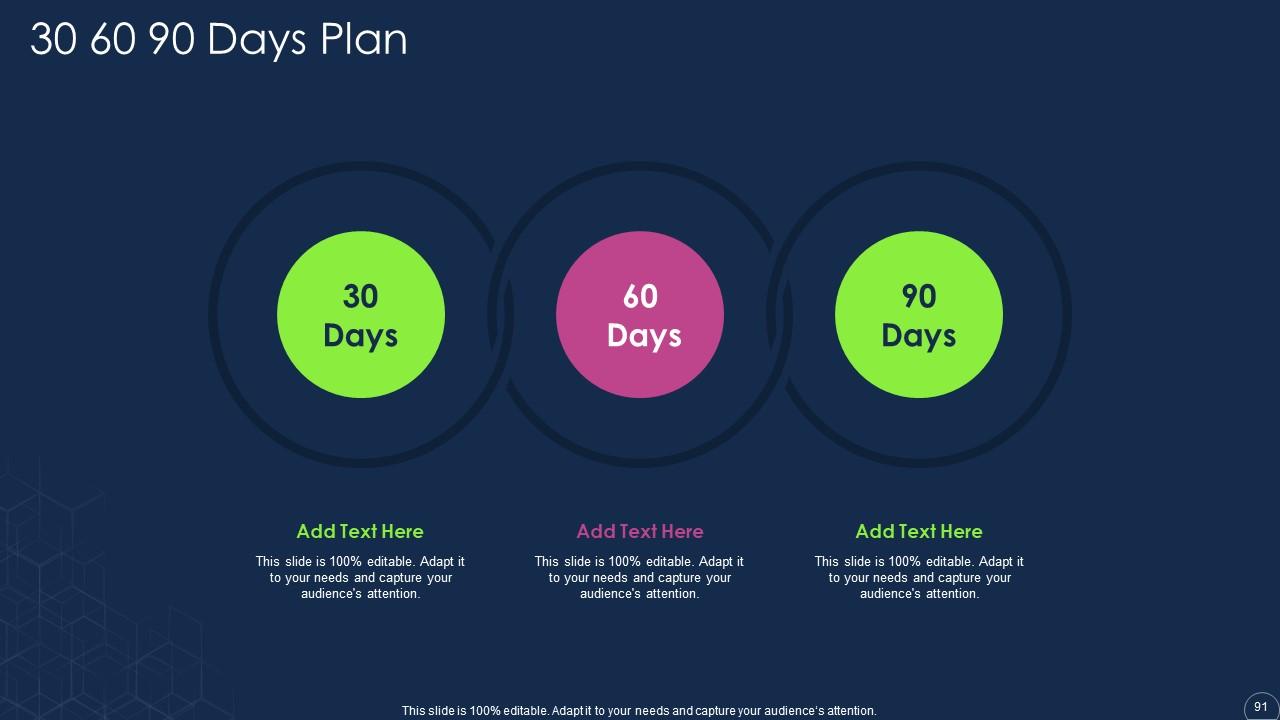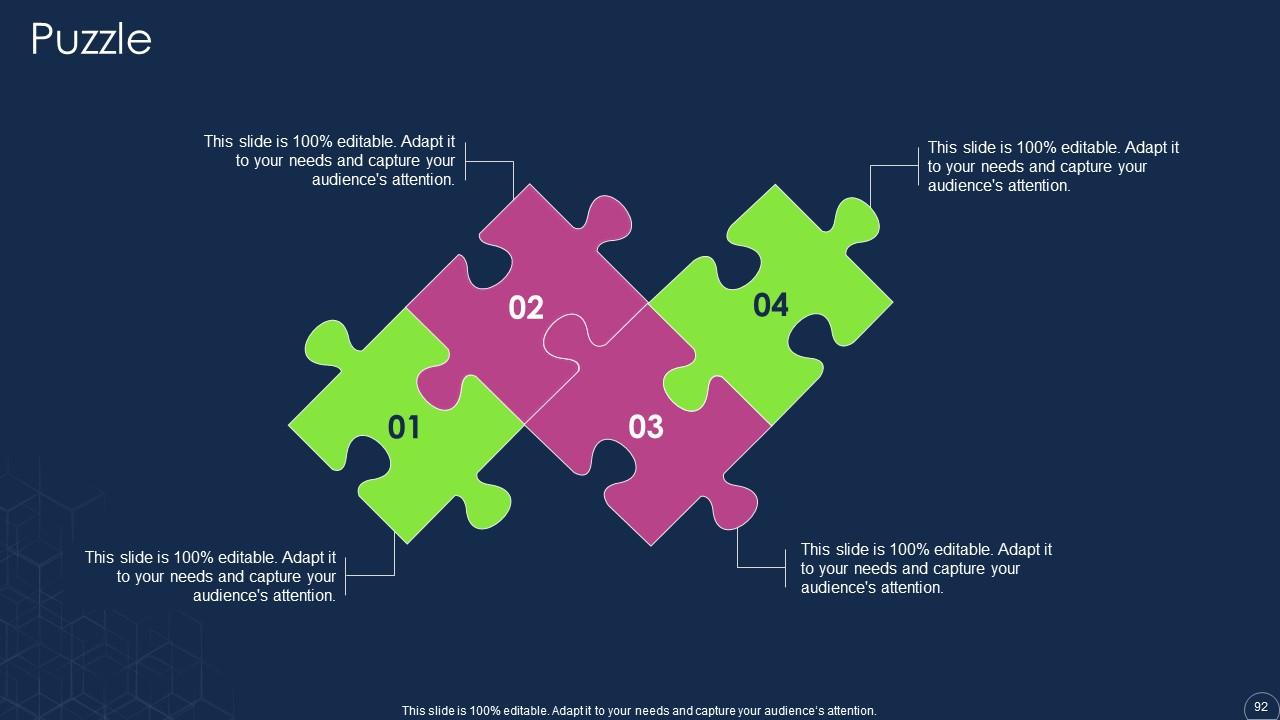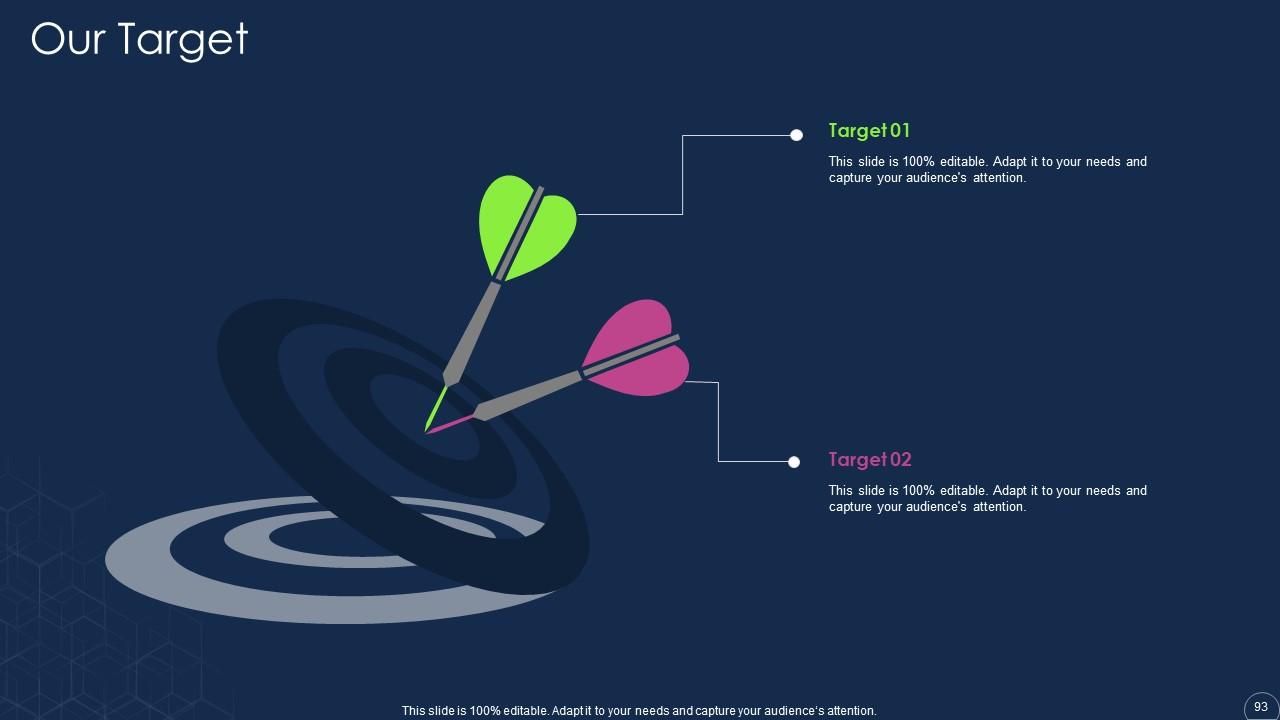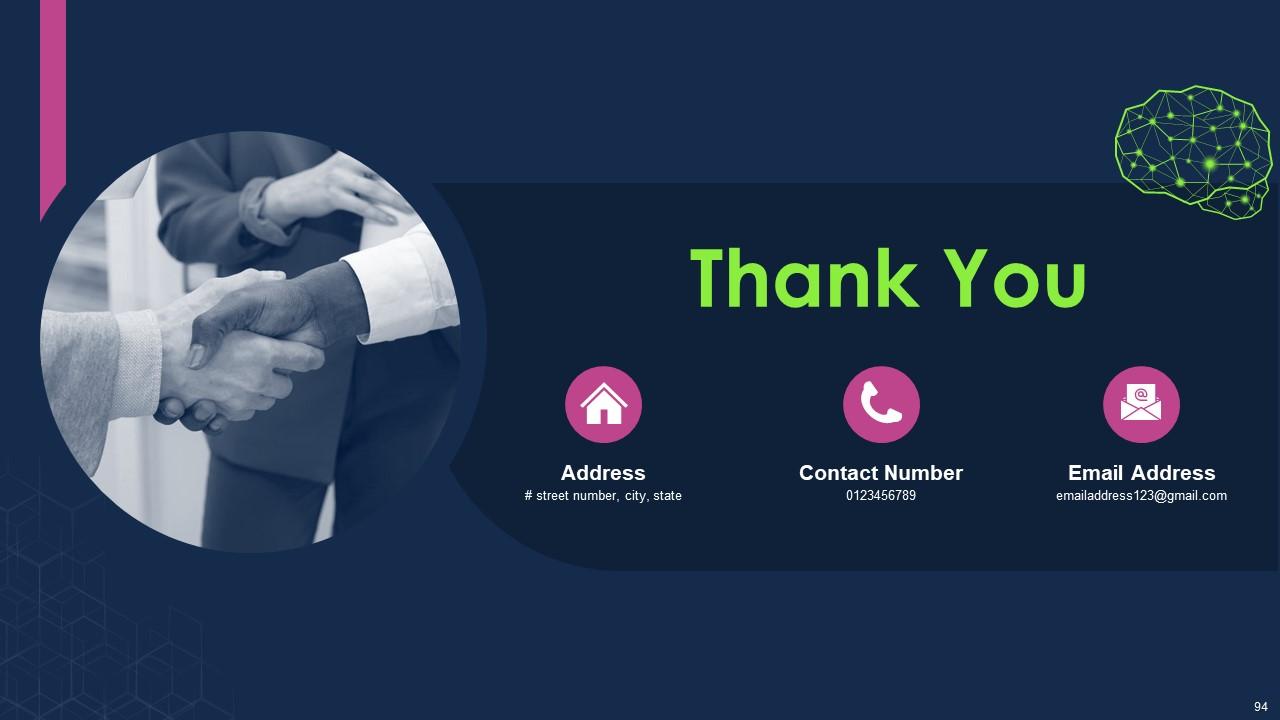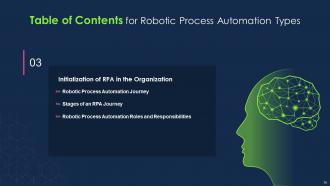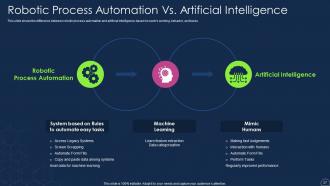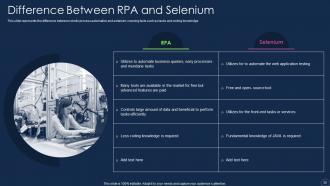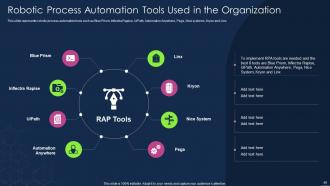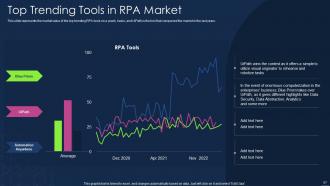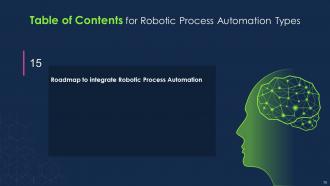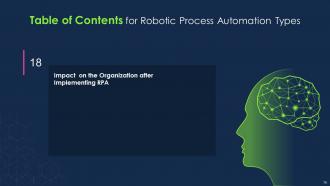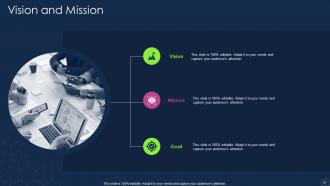Robotic Process Automation Types Powerpoint Presentation Slides
Automation is a technology that helps build software robots, manage them and deploy them efficiently. Here is a professionally designed Artificial Intelligence template that will be of significant assistance to learn about Robotic Process Automation, its benefits, implementation to eliminate business problems such as inefficiency and low employee productivity. This PowerPoint presentation provides a brief overview of automation, including its features, KPIs, life cycle, and implementation methodologies. Further, this PowerPoint presentation highlights the initialization of automation in the organization and its benefits. In addition, PPT shows the difference between automation and other technologies such as AI and Selenium. It also depicts information on the working of automation, its architecture, and different types. Moreover, this presentation represents challenges that could arise while implementing automation in the organization and its solutions and steps to ensure Automation Security. Further, the template illustrated information about the automation tools implementation in different sectors. Lastly, the deck comprises a dashboard to measure the performance and impact of the automation implementation in the organization. Get access now to our professionally designed Robotic process automation PowerPoint presentation slides now
Automation is a technology that helps build software robots, manage them and deploy them efficiently. Here is a professiona..
- Google Slides is a new FREE Presentation software from Google.
- All our content is 100% compatible with Google Slides.
- Just download our designs, and upload them to Google Slides and they will work automatically.
- Amaze your audience with SlideTeam and Google Slides.
-
Want Changes to This PPT Slide? Check out our Presentation Design Services
- WideScreen Aspect ratio is becoming a very popular format. When you download this product, the downloaded ZIP will contain this product in both standard and widescreen format.
-

- Some older products that we have may only be in standard format, but they can easily be converted to widescreen.
- To do this, please open the SlideTeam product in Powerpoint, and go to
- Design ( On the top bar) -> Page Setup -> and select "On-screen Show (16:9)” in the drop down for "Slides Sized for".
- The slide or theme will change to widescreen, and all graphics will adjust automatically. You can similarly convert our content to any other desired screen aspect ratio.
Compatible With Google Slides

Get This In WideScreen
You must be logged in to download this presentation.
PowerPoint presentation slides
Deliver an informational PPT on various topics by using this Robotic Process Automation Types Powerpoint Presentation Slides. This deck focuses and implements best industry practices, thus providing a birds-eye view of the topic. Encompassed with ninty four slides, designed using high-quality visuals and graphics, this deck is a complete package to use and download. All the slides offered in this deck are subjective to innumerable alterations, thus making you a pro at delivering and educating. You can modify the color of the graphics, background, or anything else as per your needs and requirements. It suits every business vertical because of its adaptable layout.
People who downloaded this PowerPoint presentation also viewed the following :
Content of this Powerpoint Presentation
Slide 1: This slide introduces Robotic Process Automation Types. State your company name and begin.
Slide 2: This slide states Agenda of the presentation.
Slide 3: This slide presents Table of Content for the presentation.
Slide 4: This is another slide continuing Table of Content for the presentation.
Slide 5: This slide shows title for topics that are to be covered next in the template.
Slide 6: This slide presents Problems Faced by the Organization.
Slide 7: This slide represents the need for robotic process automation in organizations.
Slide 8: This slide defines the gap in the organization and how it can be improved through RPA implementation.
Slide 9: This slide represents the need to automate repetitive tasks or operations and how it affects the employees and customers.
Slide 10: This slide shows title for topics that are to be covered next in the template.
Slide 11: This slide depicts the features of the robotic process automation, which includes work queues, user-friendly, non-disruptive, scalability, etc.
Slide 12: This slide represents the benefits of robotic process automation based on effective use of resources, customer interactions, etc.
Slide 13: This slide describes the advantages of RPA based on preciseness, technical barrier, compliance, etc.
Slide 14: This slide represents the life cycle of robotic process automation, and it covers analysis, bot development, etc.
Slide 15: This slide describes the methodology to implement robotic process automation in an organization.
Slide 16: This slide shows title for topics that are to be covered next in the template.
Slide 17: This slide depicts the implementation journey of robotic process automation in an organization.
Slide 18: This slide represents the different stages of the RPA implementation journey, which includes preparing RPA, design, develop RPA, etc.
Slide 19: This slide depicts the roles of solution architect, business analyst, project manager, IT security admin, etc.
Slide 20: This slide shows title for topics that are to be covered next in the template.
Slide 21: This slide describes the manual processing of data and different tasks in an organization.
Slide 22: This slide depicts the daily tasks performed by the robotic automation process and how RPA performs.
Slide 23: This slide represents the manual versus automated processes.
Slide 24: This slide showcases Back-Office Process Before and After Implementing RPA.
Slide 25: This slide shows title for topics that are to be covered next in the template.
Slide 26: This slide defines if RPA is the same as artificial intelligence and how goals could be achieved by combining these two.
Slide 27: This slide shows the difference between robotic process automation and artificial intelligence.
Slide 28: This slide represents the difference between robotic process automation and selenium.
Slide 29: This slide shows title for topics that are to be covered next in the template.
Slide 30: This slide presents the working environment of robotic process automation and how operations are shifted.
Slide 31: This slide defines how robotic process automation works in the cloud, desktop automation, enterprise automation, etc.
Slide 32: This slide represents the workflow model of robotic process automation and it includes process developers.
Slide 33: This slide shows title for topics that are to be covered next in the template.
Slide 34: This slide depicts the architecture of robotic process automation and how it can be implemented.
Slide 35: This slide shows title for topics that are to be covered next in the template.
Slide 36: This slide represents the different types of robotic process automation, such as attended RPA, unattended RPA, and hybrid RPA.
Slide 37: This slide defines the attended robotic process automation and how tasks are performed in this type of automation.
Slide 38: This slide shows the working of the attended robotic process automation and how users trigger the bot.
Slide 39: This slide defines the process of performing tasks by attended automation systems.
Slide 40: This slide describes the unattended robotic process automation and how it can perform tasks without human intervention.
Slide 41: This slide shows the hybrid type of robotic process automation and how an organization could implement this type of automation in the organization.
Slide 42: This slide shows title for topics that are to be covered next in the template.
Slide 43: This slide presents Challenges Faced by the Organization While Implementing Automation.
Slide 44: This slide displays Solutions to Overcome the Automation Implementation Challenges.
Slide 45: This slide shows title for topics that are to be covered next in the template.
Slide 46: This slide defines steps to ensure the security of robotic process automation.
Slide 47: This slide shows title for topics that are to be covered next in the template.
Slide 48: This slide represents robotic process automation tools such as Blue Prism, Inflectra Rapise, UiPath, etc.
Slide 49: This slide describes the blue prism tool of the RPA along with the pros, cons and features of the tool.
Slide 50: This slide depicts the inflectra rapise tool of the robotic process automation.
Slide 51: This slide represents the UiPath tool that is used for the RPA. It also describes its pros, cons, and feature.
Slide 52: This slide defines the automation anywhere tool for robotic process automation.
Slide 53: This slide represents the Pega tool used for RPA and its features.
Slide 54: This slide describes the nice system tool used for RPA along with its use cases.
Slide 55: This slide depicts the Kryon tool used for robotic process automation.
Slide 56: This slide defines the Linx robotic process automation tool and how it is faster in performing routine tasks.
Slide 57: This slide represents the market value of the top trending RPA tools on a yearly basis.
Slide 58: This slide showcases Comparison between Various Automation Tools.
Slide 59: This slide shows the checklist to select the best RPA tool for the organization to implement RPA, and the checklist.
Slide 60: This slide shows title for topics that are to be covered next in the template.
Slide 61: This slide describes the robotic process automation in the banking system and its benefits to banks.
Slide 62: This slide displays the robotic process automation in the healthcare industry and how it could be beneficial.
Slide 63: This slide showcases Application of Automation in Finance and Accounting.
Slide 64: This slide represents robotic process automation in the retail industry and its benefits, such as sales reports, store planning, inventory management, etc.
Slide 65: This slide describes the implementation of RPA in business and its benefits in the business processes.
Slide 66: This slide shows title for topics that are to be covered next in the template.
Slide 67: This slide describes the guidelines to choose tools and RPA type to implement in an organization.
Slide 68: This slide shows title for topics that are to be covered next in the template.
Slide 69: This slide presents Timeline for Automation Implementation.
Slide 70: This slide shows title for topics that are to be covered next in the template.
Slide 71: This slide describes the roadmap to implement the robotic process automation.
Slide 72: This slide shows title for topics that are to be covered next in the template.
Slide 73: This slide displays 30-60-90 Days Plan to Implement Automation in Business.
Slide 74: This slide shows title for topics that are to be covered next in the template.
Slide 75: This slide represents Dashboard to Measure Performance of Automation Implementation.
Slide 76: This slide shows title for topics that are to be covered next in the template.
Slide 77: This slide showcases Impact on the Organization after Implementing Automation.
Slide 78: This slide is titled as Additional Slides for moving forward.
Slide 79: This slide defines the robotic process automation and what type of services it performs efficiently.
Slide 80: This slide presents pitfalls of RPA that include organizational pitfalls, process-wise pitfalls, technical pitfalls, etc.
Slide 81: This slide represents the key performance indicators of RPA such as intelligence, dependability, performance, etc.
Slide 82: This slide showcases Difference Between Attended and Unattended Automation.
Slide 83: This slide represents the myths about the robotic process automation, and it also shows that automation can be implemented in any industry.
Slide 84: This slide depicts the roles and responsibilities of the staff in robotic process automation.
Slide 85: This slide contains all the icons used in this presentation.
Slide 86: This slide displays Column chart with two products comparison.
Slide 87: This is Our Goal slide. State your firm's goals here.
Slide 88: This is a Timeline slide. Show data related to time intervals here.
Slide 89: This slide describes Line chart with two products comparison.
Slide 90: This slide shows Post It Notes. Post your important notes here.
Slide 91: This slide provides 30 60 90 Days Plan with text boxes.
Slide 92: This slide contains Puzzle with related icons and text.
Slide 93: This is Our Target slide. State your targets here.
Slide 94: This is a Thank You slide with address, contact numbers and email address.
Robotic Process Automation Types Powerpoint Presentation Slides with all 99 slides:
Use our Robotic Process Automation Types Powerpoint Presentation Slides to effectively help you save your valuable time. They are readymade to fit into any presentation structure.
FAQs
Robotic Process Automation (RPA) can lead to more efficient use of resources, increased productivity, improved customer interactions, and greater accuracy in completing tasks. It can also free up employees from repetitive and time-consuming tasks, allowing them to focus on more valuable work.
Some common challenges include resistance to change, lack of technical expertise, difficulty integrating Robotic Process Automation (RPA) with existing systems, security concerns, and the need for ongoing maintenance and support.
Attended Robotic Process Automation (RPA) involves human input, where a user triggers the bot to perform a specific task. Unattended RPA, on the other hand, does not require human intervention and can run 24/7 to perform scheduled tasks.
While both Robotic Process Automation (RPA) and AI (Artificial Intelligence) involve automation, RPA focuses on automating repetitive, rule-based tasks that do not require complex decision-making. AI, on the other hand, uses machine learning algorithms to analyze data and make decisions based on that analysis.
Some popular Robotic Process Automation (RPA) tools include Blue Prism, UiPath, Automation Anywhere, Pega, and NICE Systems. Each tool has its own features, strengths, and weaknesses, so it's important to choose the one that best fits an organization's needs.
-
The ease of modifying templates is just superb! Also, the vast collection offers plenty of options to choose from.
-
The slides come with appealing color schemes and relevant content that helped me deliver a stunning presentation without any hassle!


